From the impression tray to the denture: techniques for fabrication
Patients feel teeth loss as a worsening of the quality of life. Although in the last years prevention in dentistry has reached more and more comfortable levels, the lengthening of average life is often associated with an increase in the incidence of periodontal disease and loss of tooth support, causing complete edentulism over time. The overcoming of problems related to edentulous patients requires specific skills for the clinicians and stimulates the research of innovative technique and restorative materials. In fact, each laboratory and clinical step has to be performed in the respect of traditional concepts, from the extension to the basal areas to the precision of the interface between soft tissues and the impression surface of the denture, from the border molding to the modelling of the prosthesis, from a proper and physiological record of the intermaxillary relationships to the optimal mounting of the artificial teeth.
CLINICAL CASE PRESENTATION
A 58-year old female patient presented with complete edentulism; she was not a smoker and was in good general health. The patient’s complaints regarded both function and communication, referring a severe discomfort in interpersonal relationships. Consequently, she requested for a radical rehabilitation of her mouth, paying particular attention to esthetics. Consequently, the aim of the prosthetic rehabilitation was the achievement of both optimal functional and esthetical results.
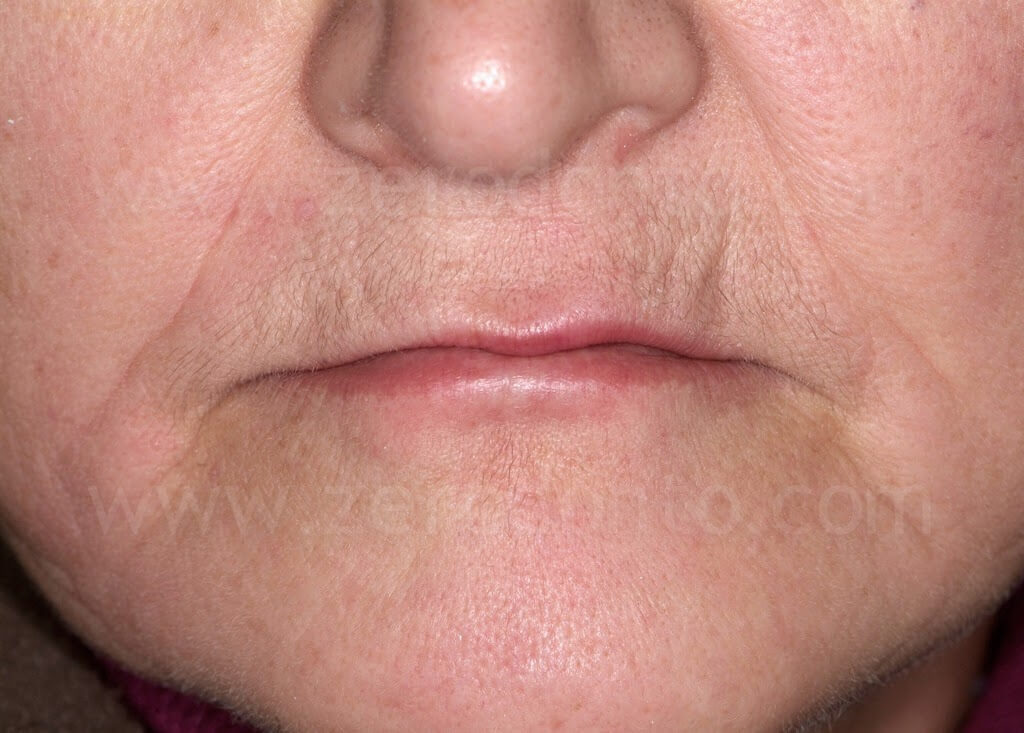
TECHNICAL PROCEDURES
According to a conventional approach, the dentist took the study impressions by means of an irreversible hydrocolloid. The preliminary impressions have to be overextended, so as to record the whole extension of the maxillary and mandibular arch as well as of the adjacent soft tissues.
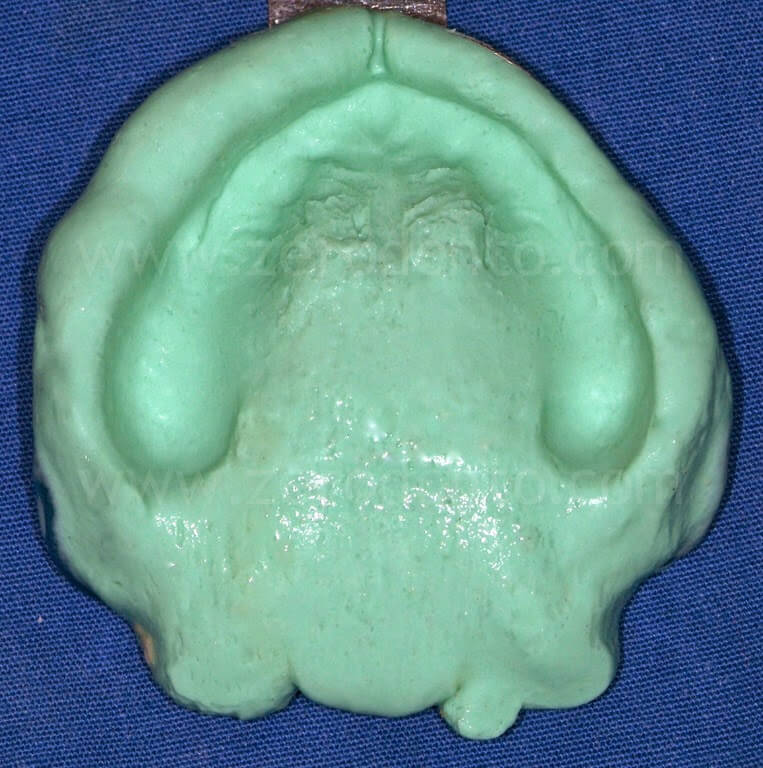
The impressions were disinfected in the dental laboratory. The borders were covered with wax and the impressions were boxed in order to pour the dental stone; this allowed to achieve detailed and esthetically valid casts.
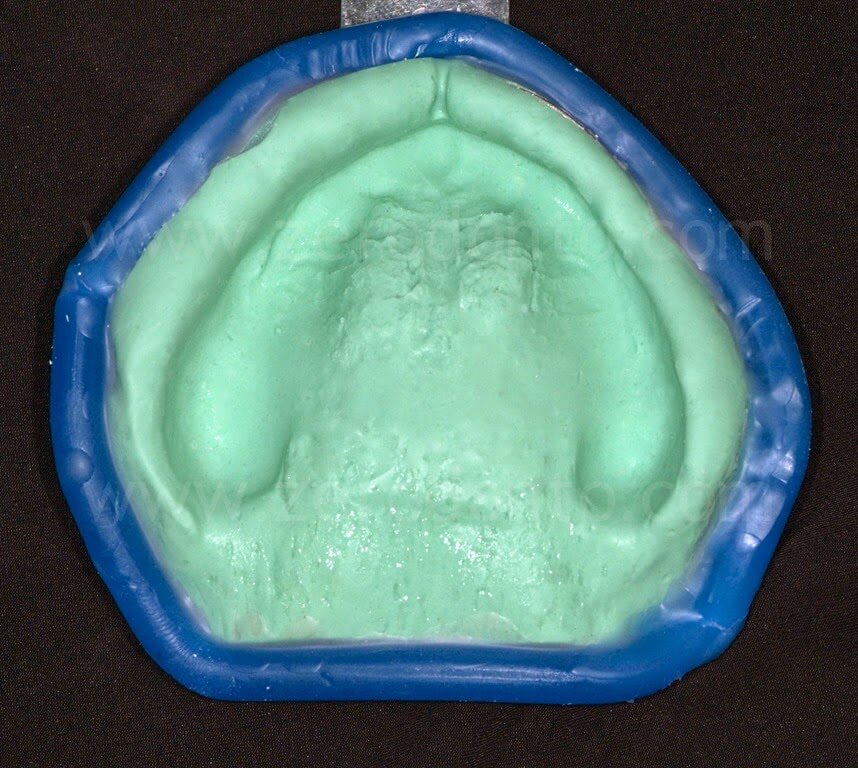
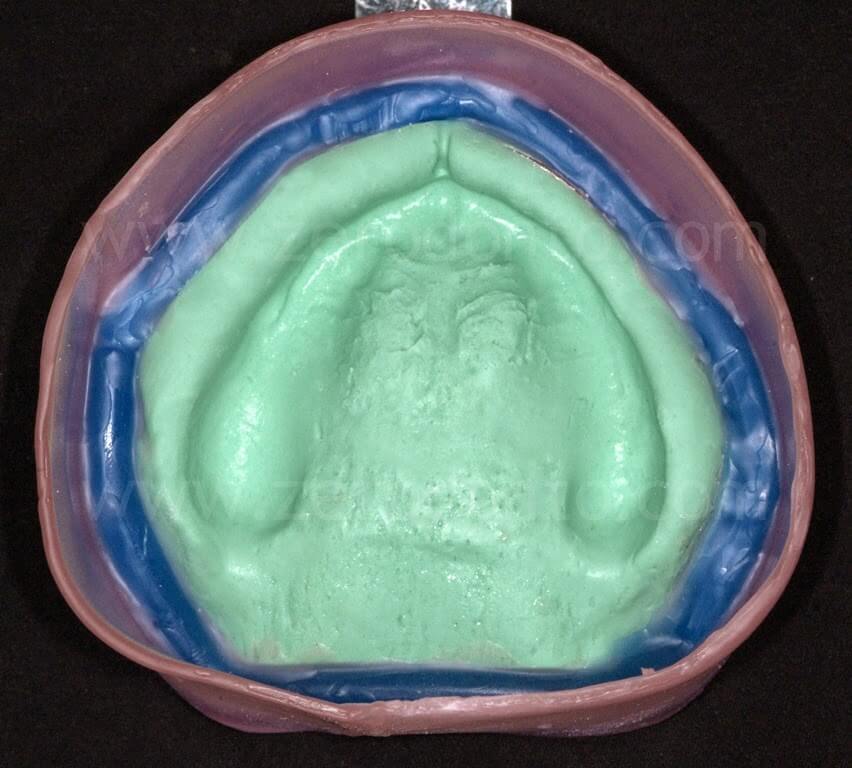
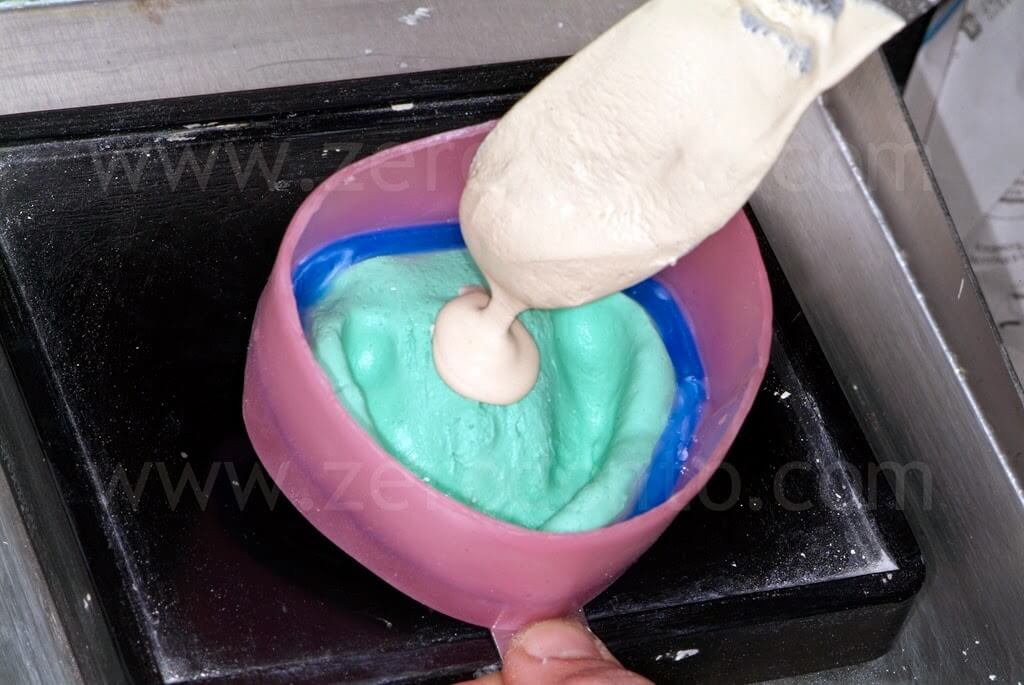
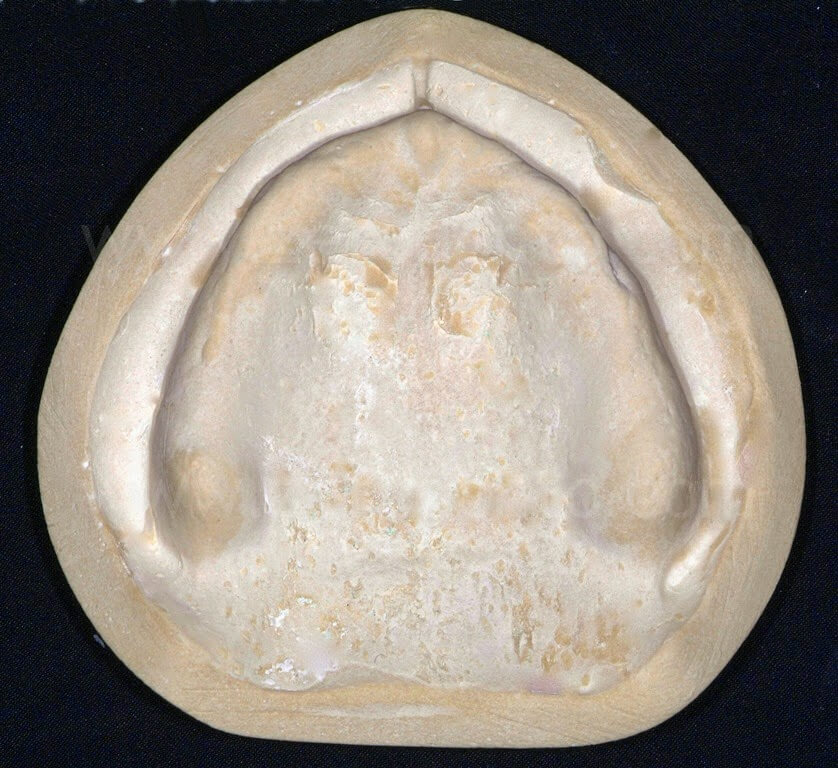
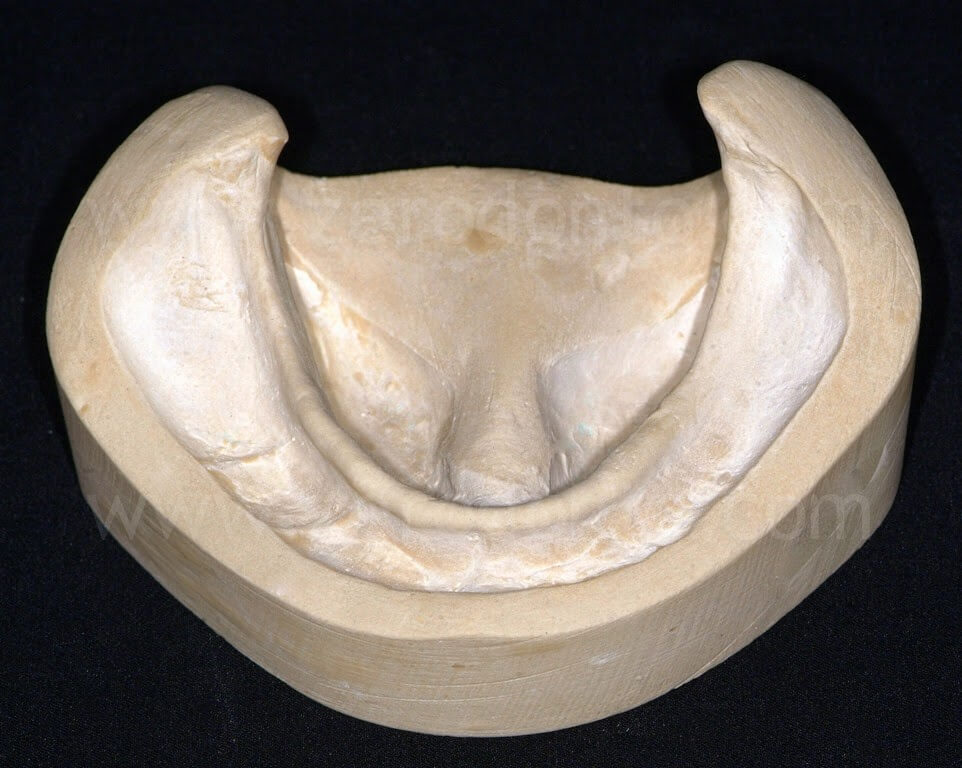
According to the dentist’s indications, the Passamonti’s technique was chosen to fabricate the customized impression trays. The depth of the fornix was marked using a blue pencil.
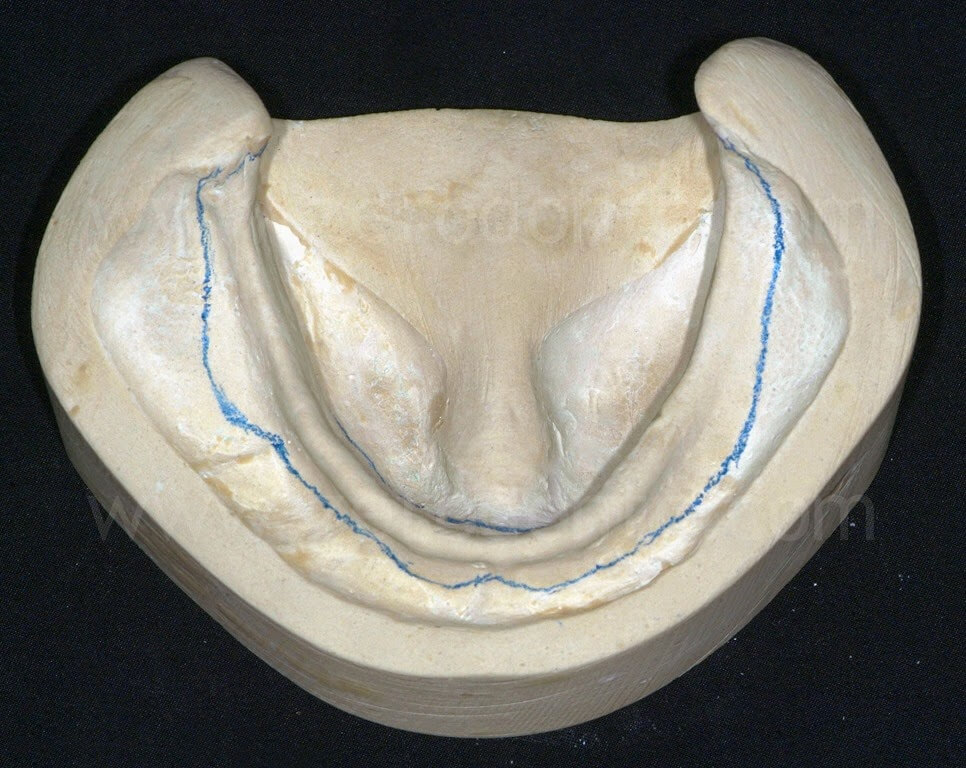
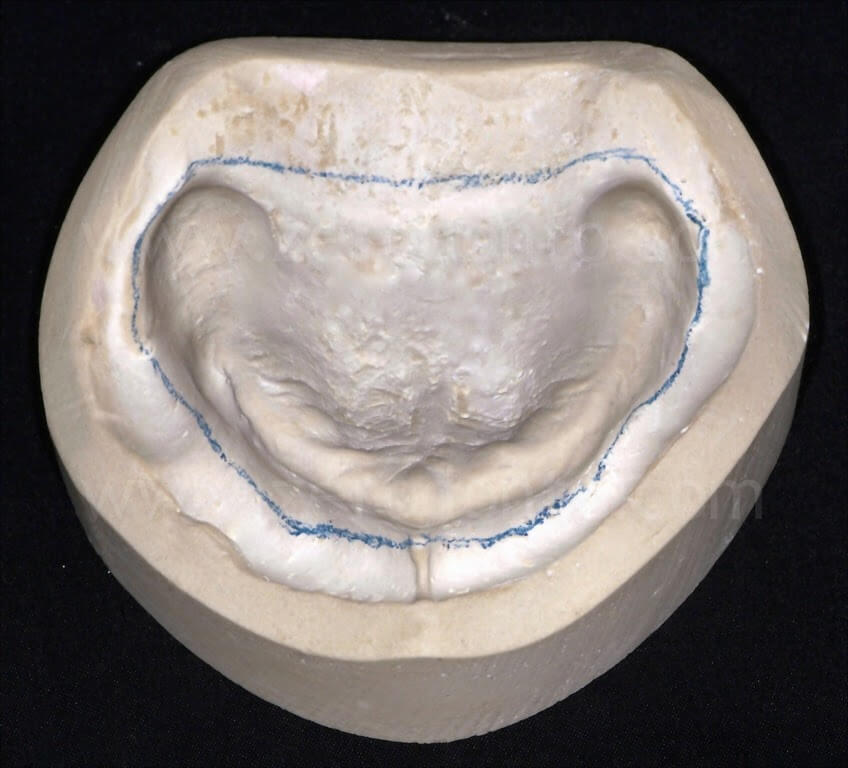
The project was completed designing the limits of the impression trays and the tissue stops.
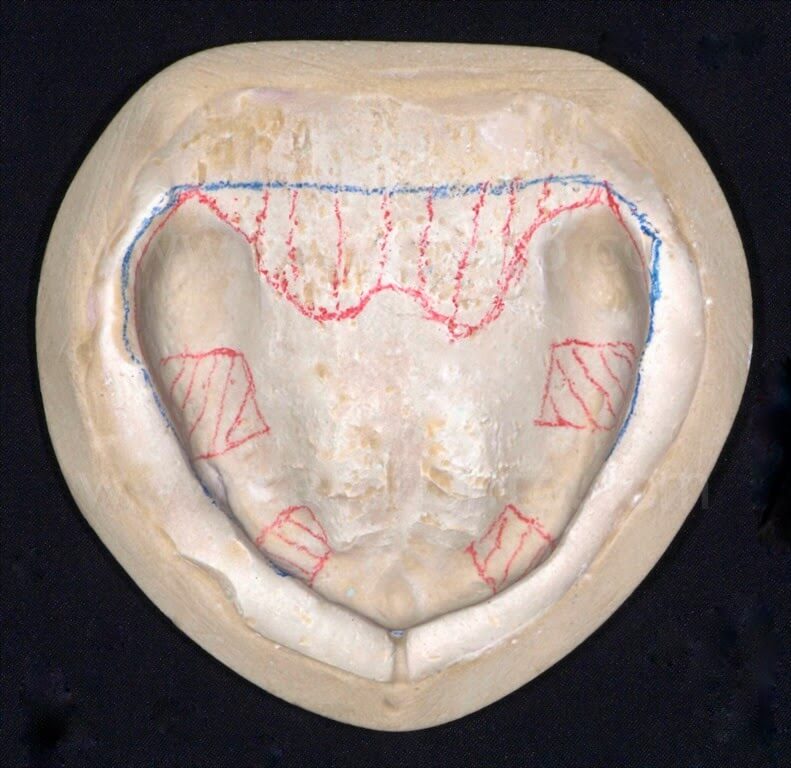
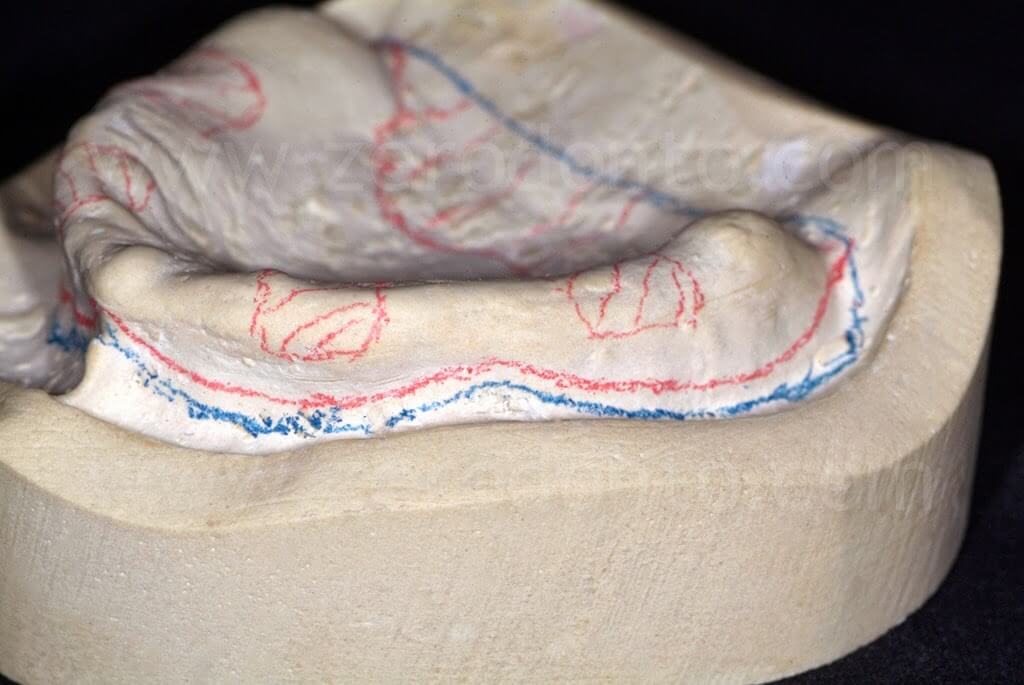
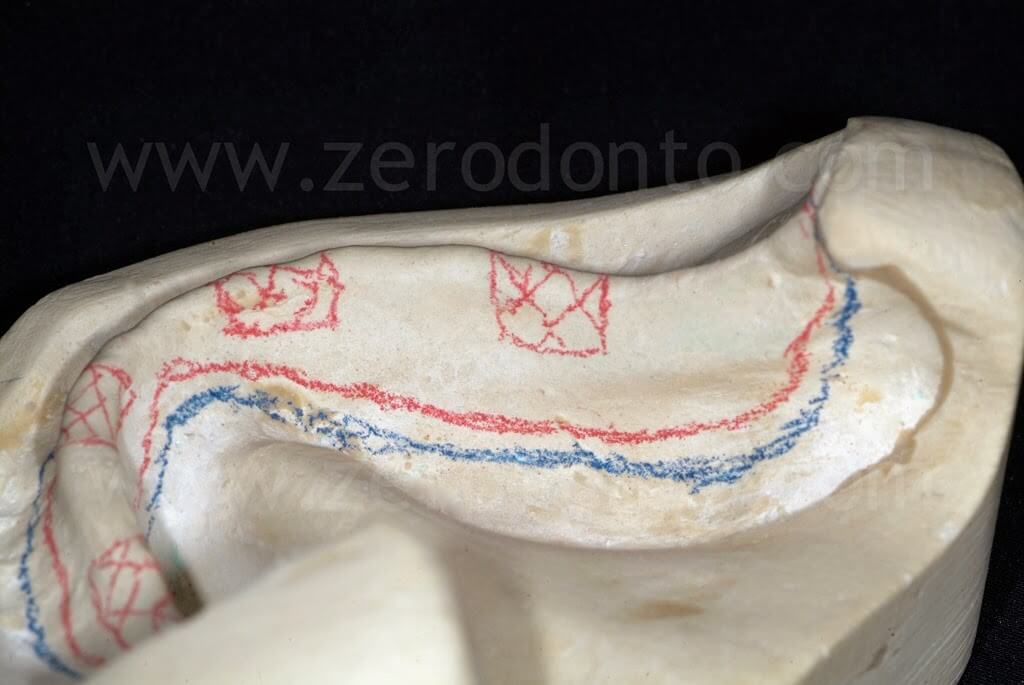
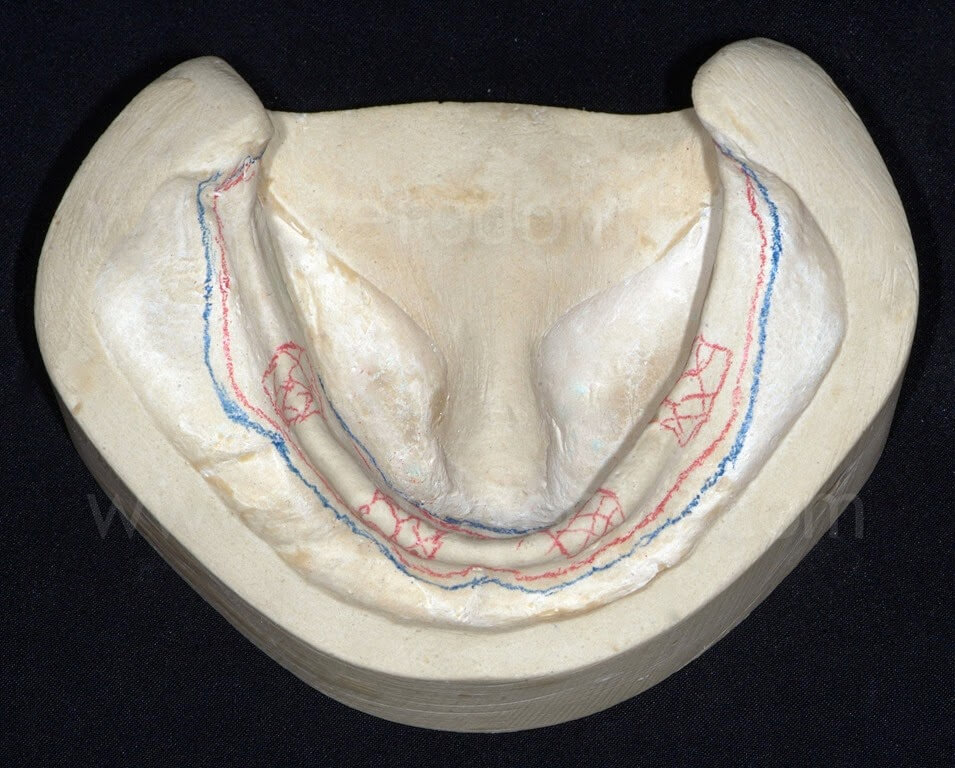
The preparation of the impression trays was completed covering the casts with a controlled thickness of dental wax.
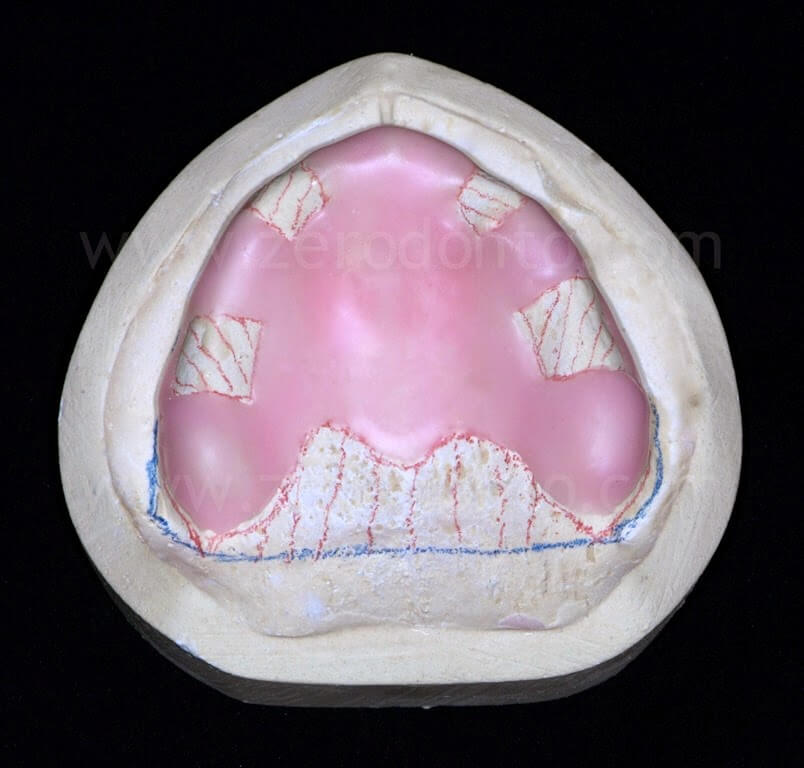
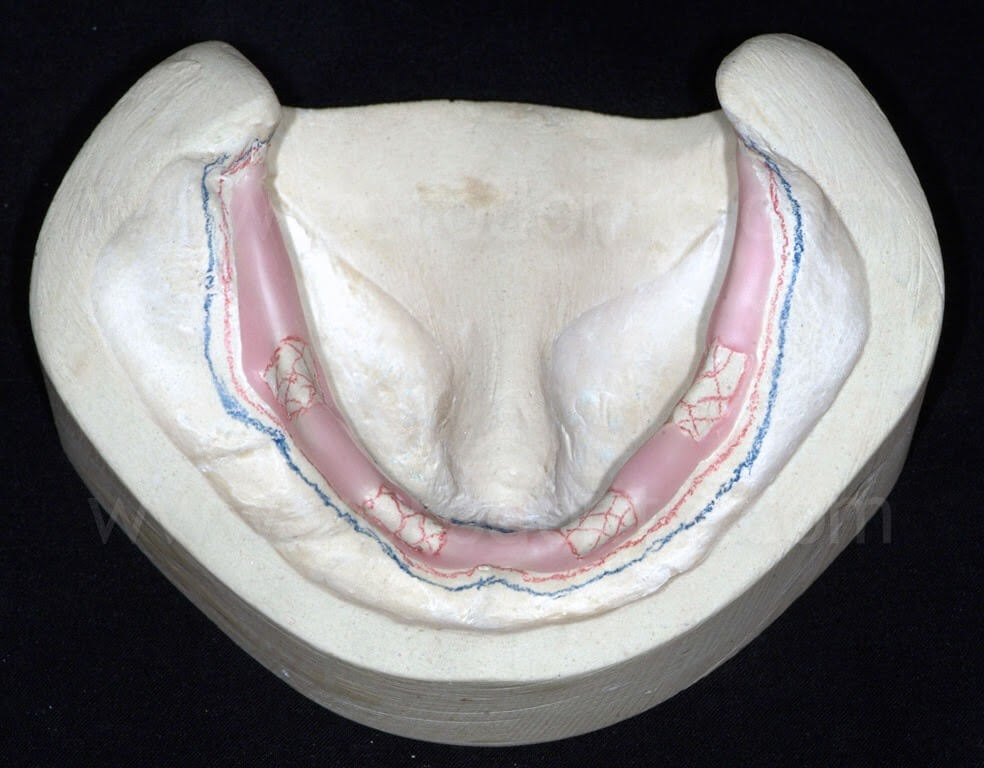
Then, the individual impression trays were fabricated.
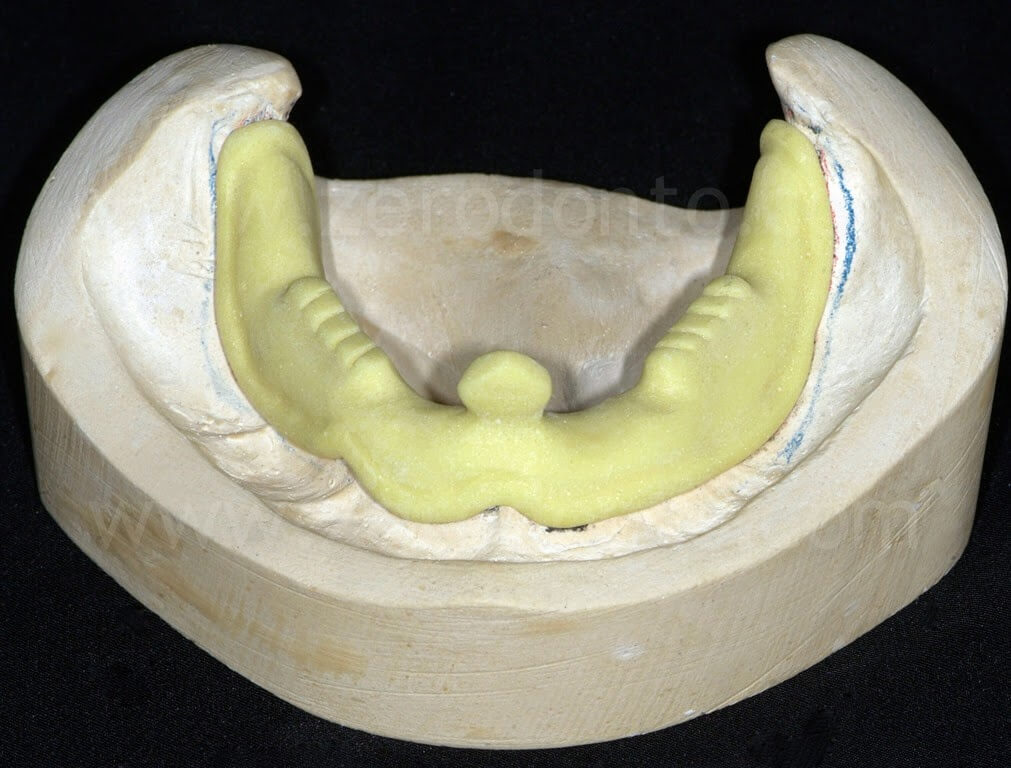
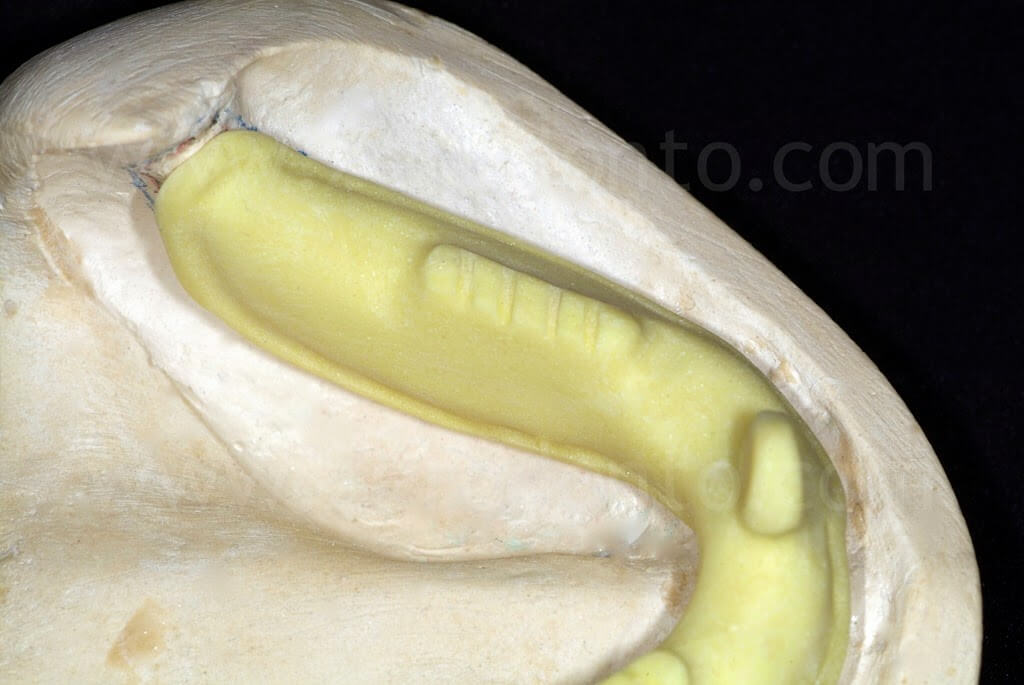
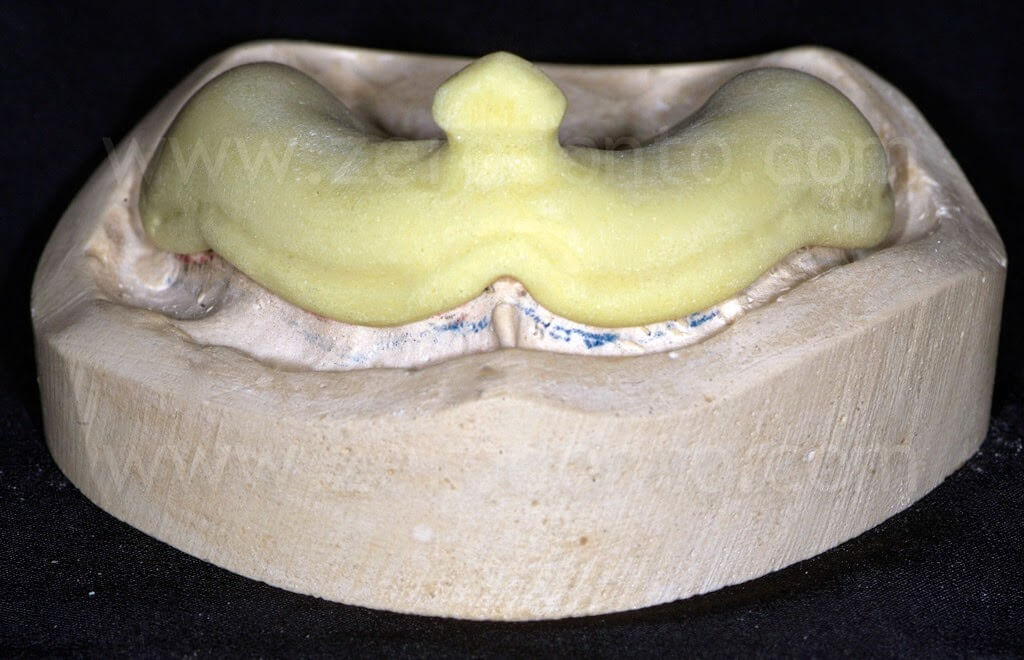
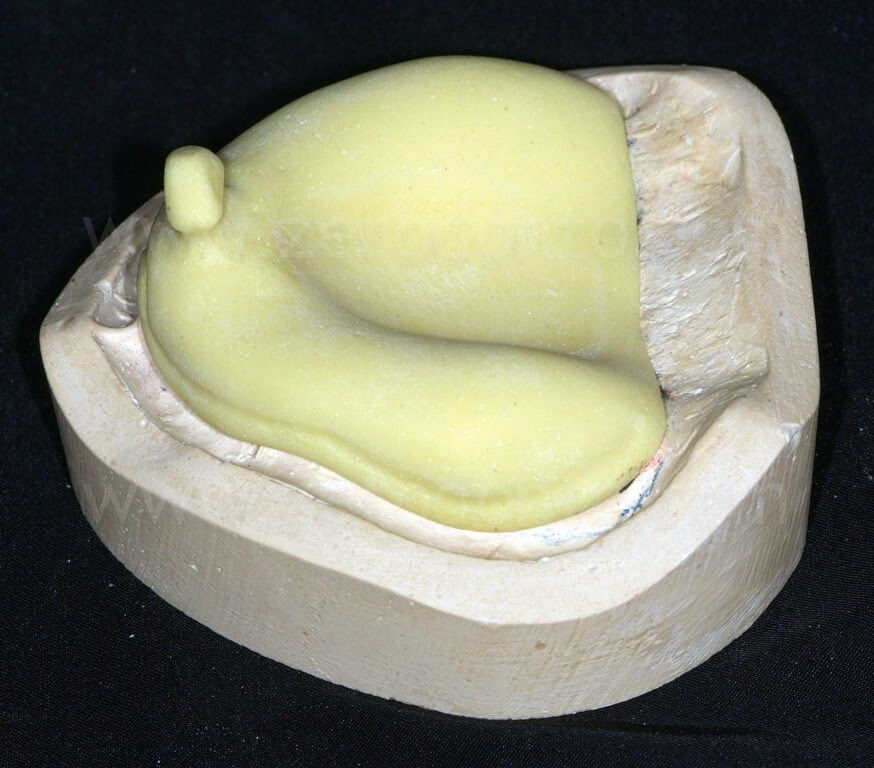
According to the conventional procedures, the dentist recorded the final, overextended impressions.
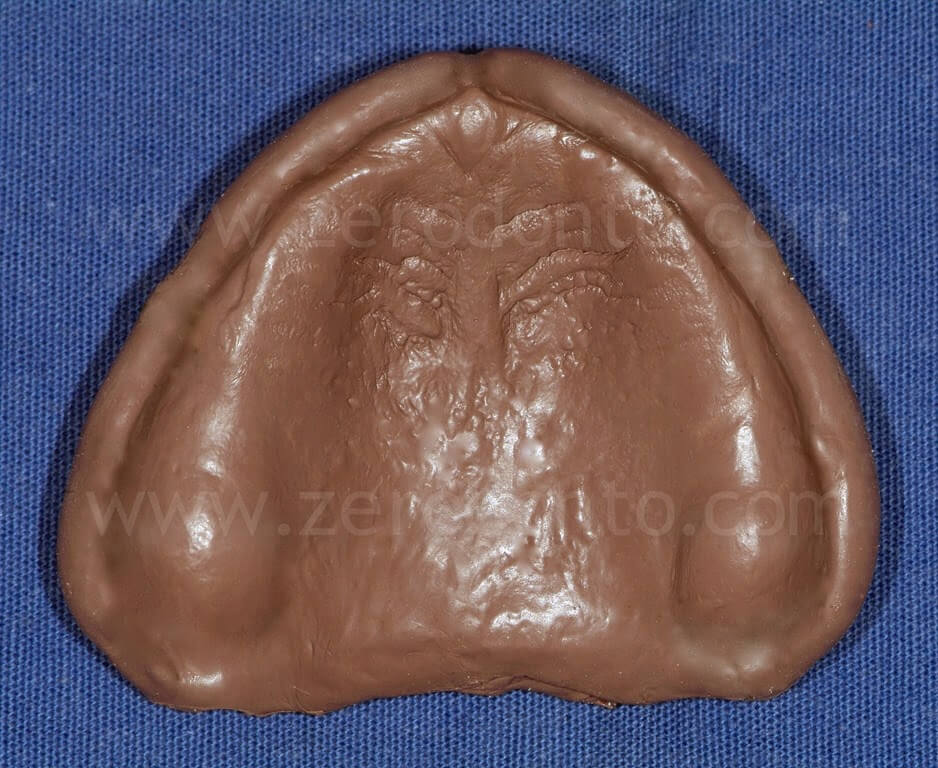
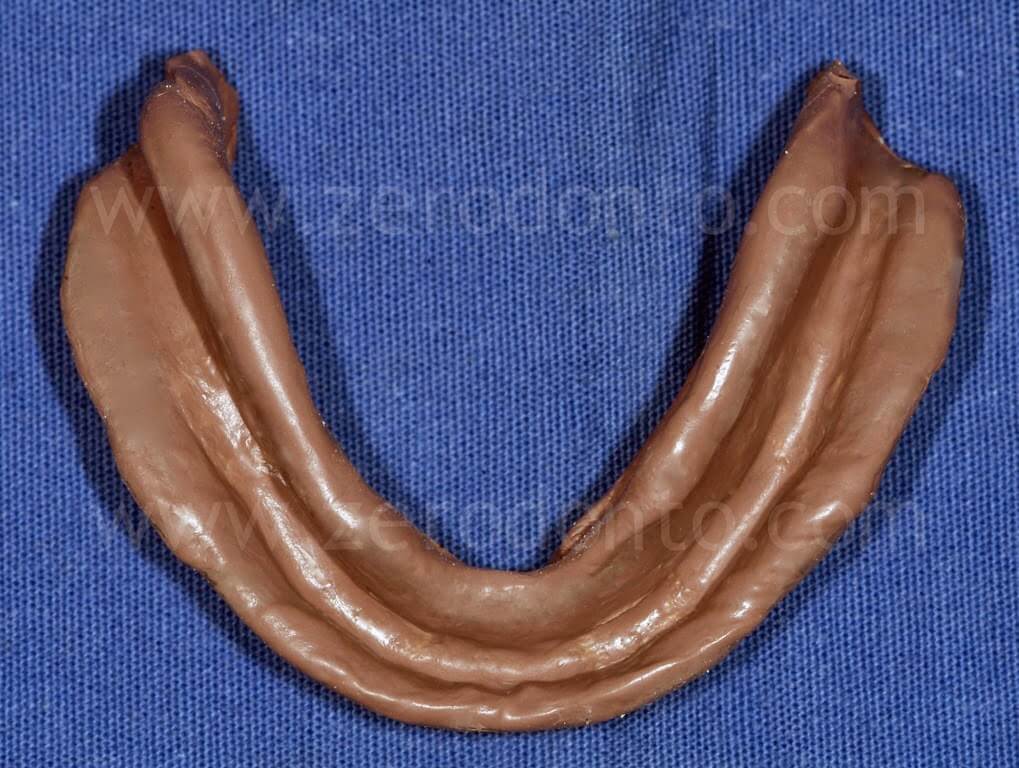
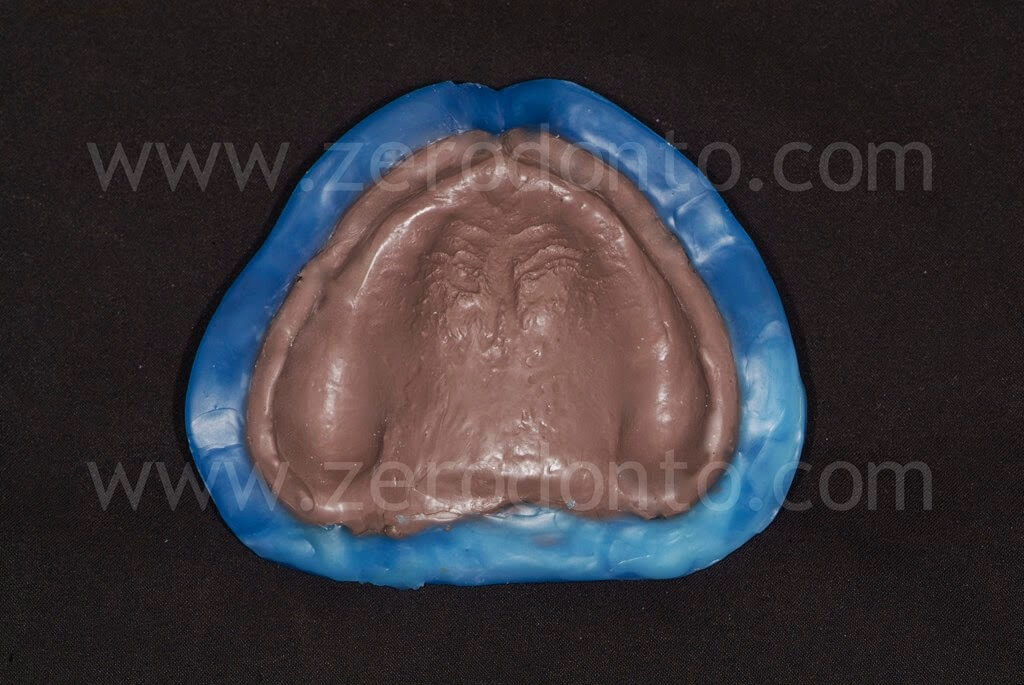

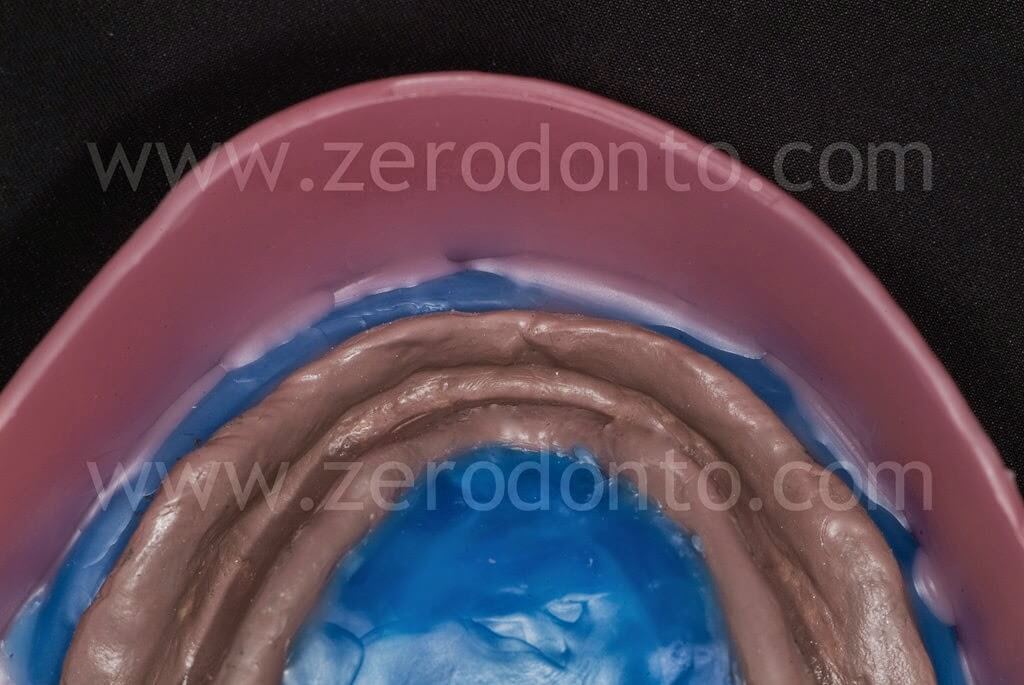
The impressions were poured with Class IV dental stone.
Then, the registration bases were fabricated using light-curing resin; the polymer shrinkage was limited by means of a multi-step polymerization technique.

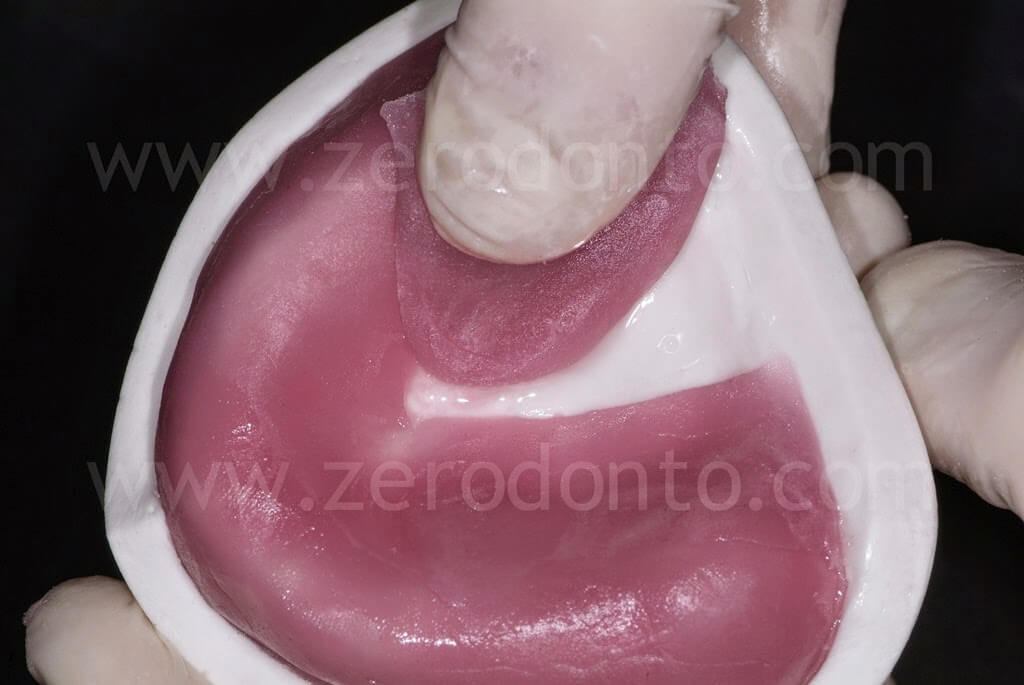
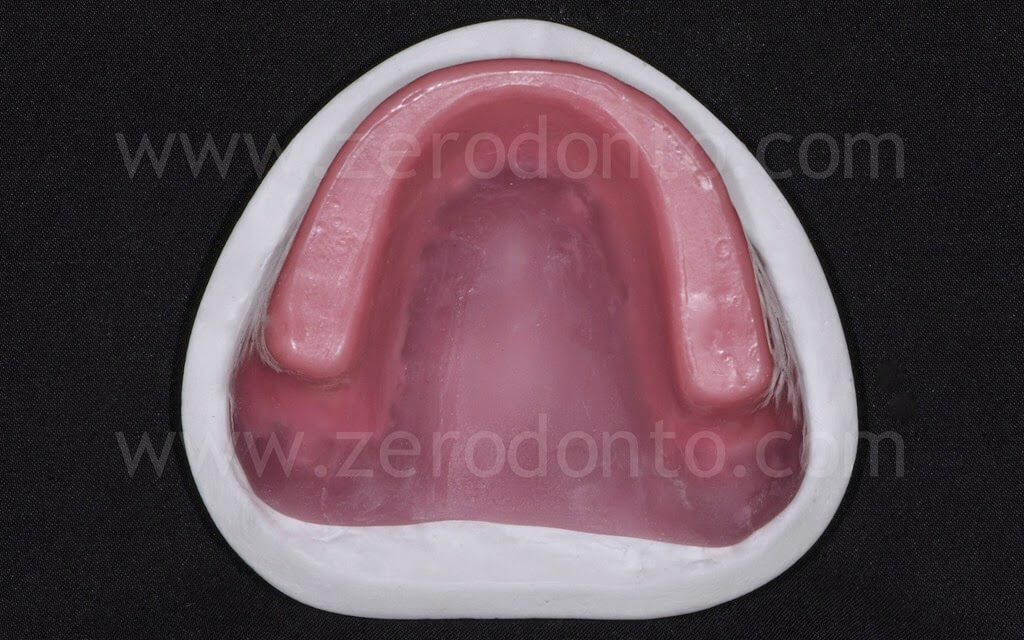
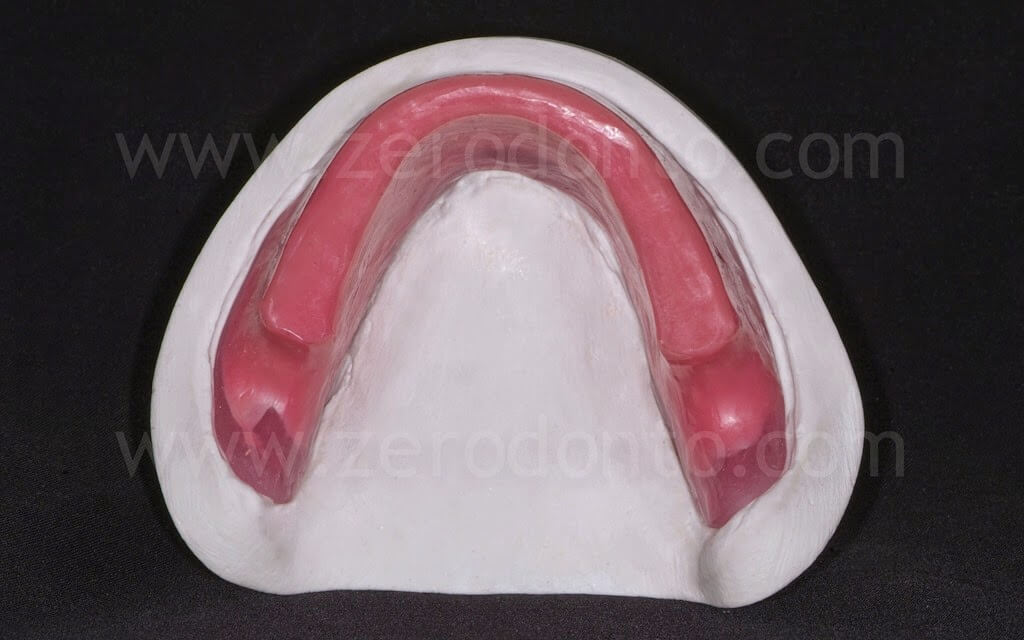
Il medesimo materiale fotopolimerizzabile veniva, inoltre, utilizzato per produrre una placca per facilitare la registrazione dell’arco facciale con una struttura ritentiva per farla aderire alla forchetta occlusale
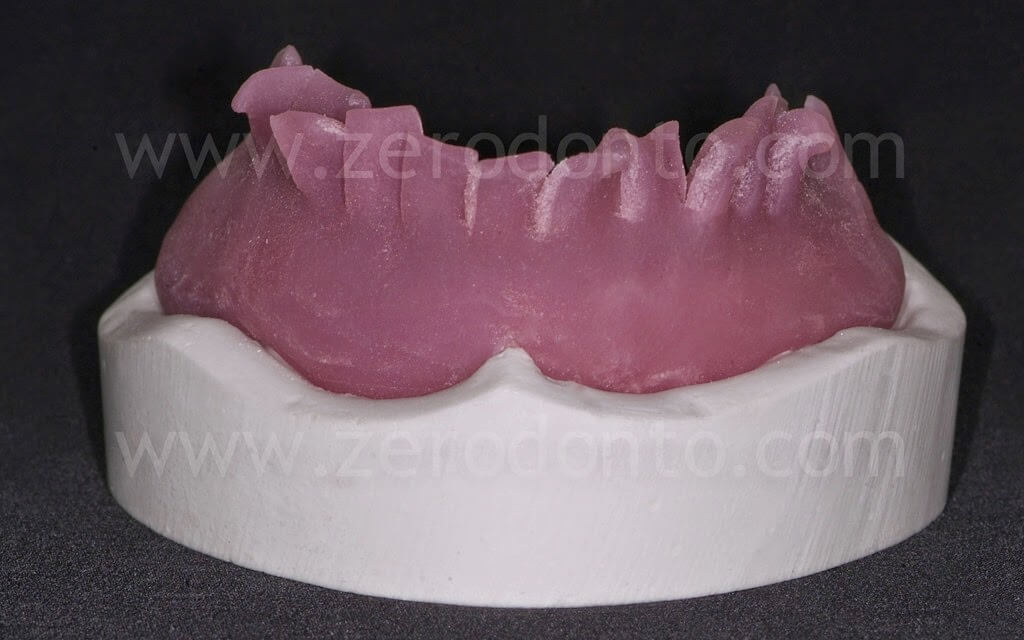
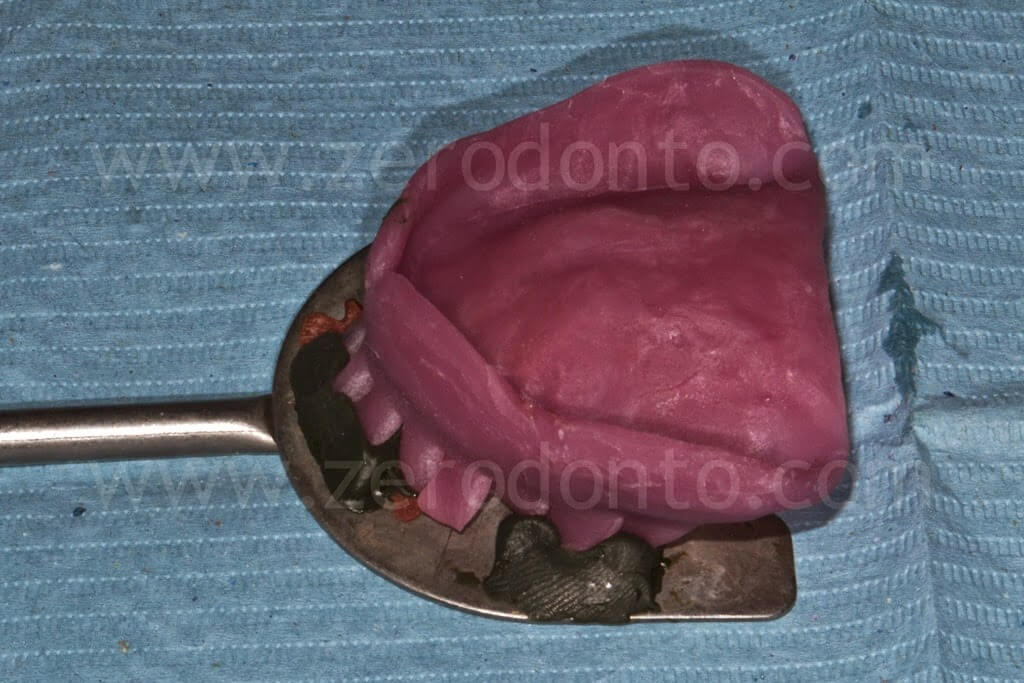
The same light curing material was used to produce a maxillary registration base for the facial bow.
The intra- and extra-oral registrations were recorded using a facial bow, so as to check the correctness of the lip support and harmonize the oro-facial relationships.
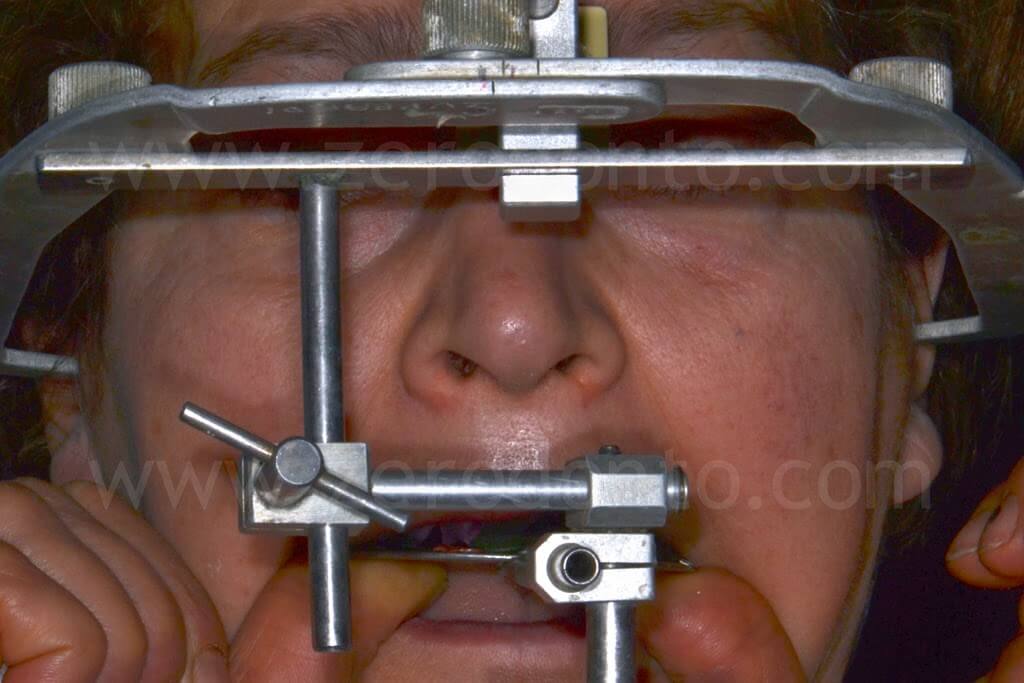
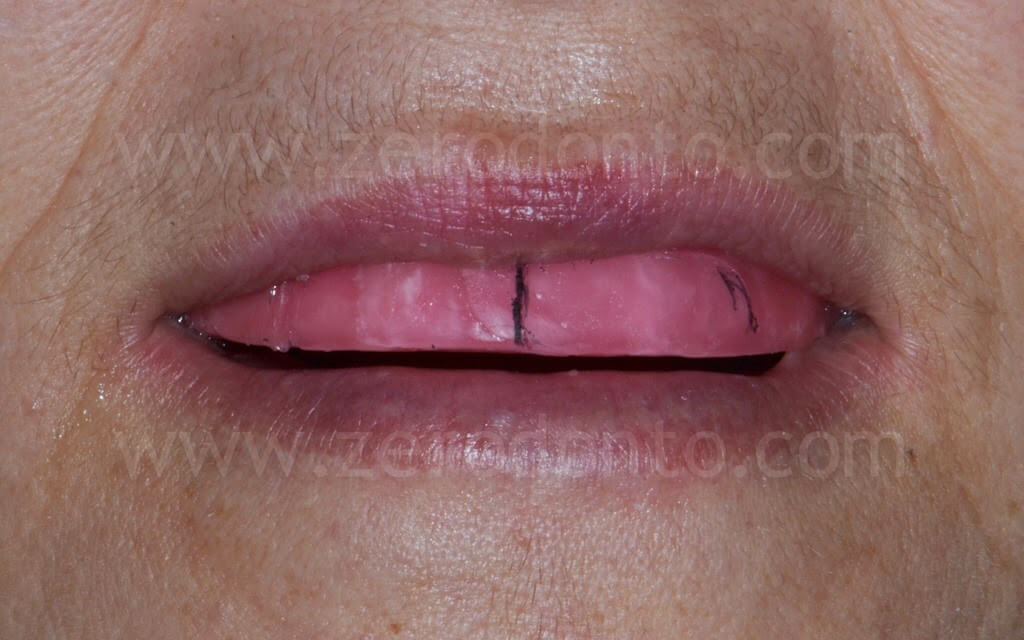
The casts were carefully blocked in the articulator, in order to not vary the inter-maxillary relationships recorded intraorally. First, the maxillary cast was blocked;
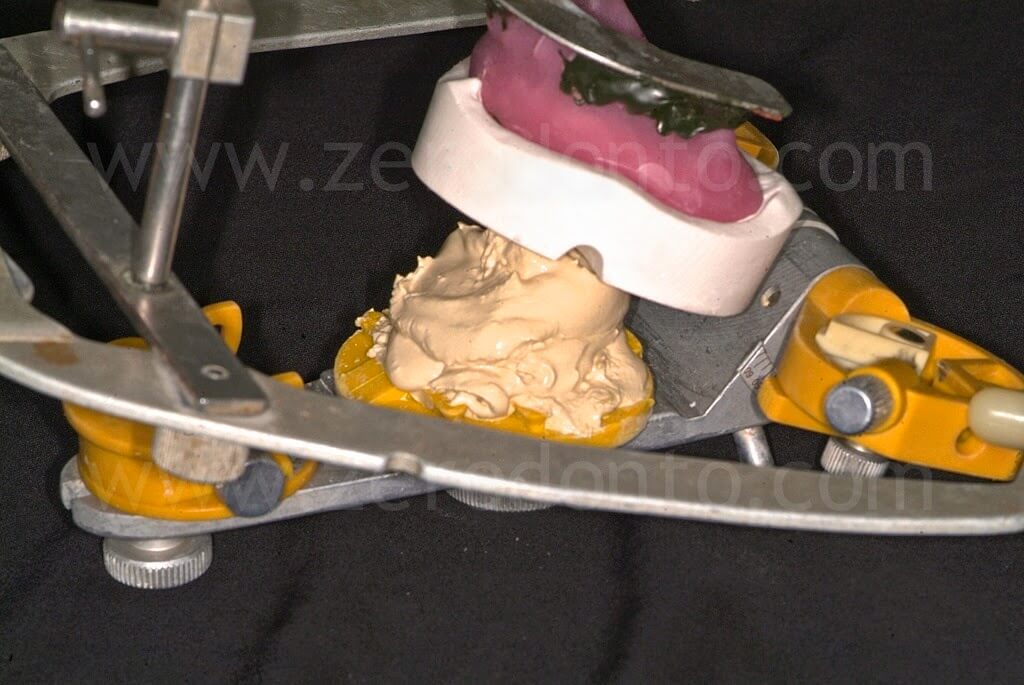

then the mounting in the articulator was completed.
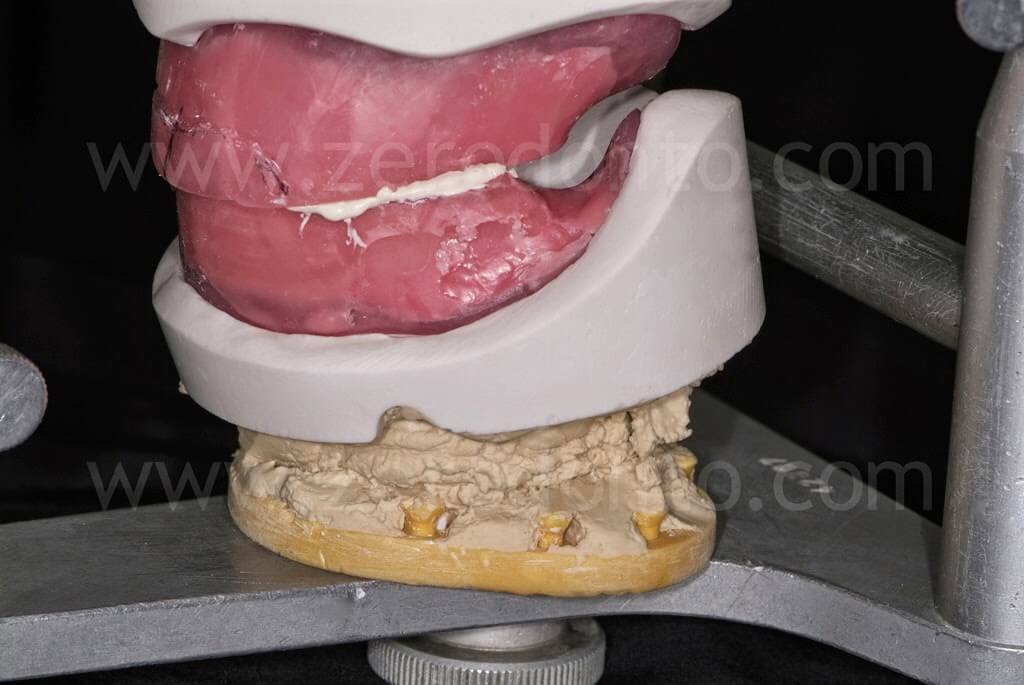
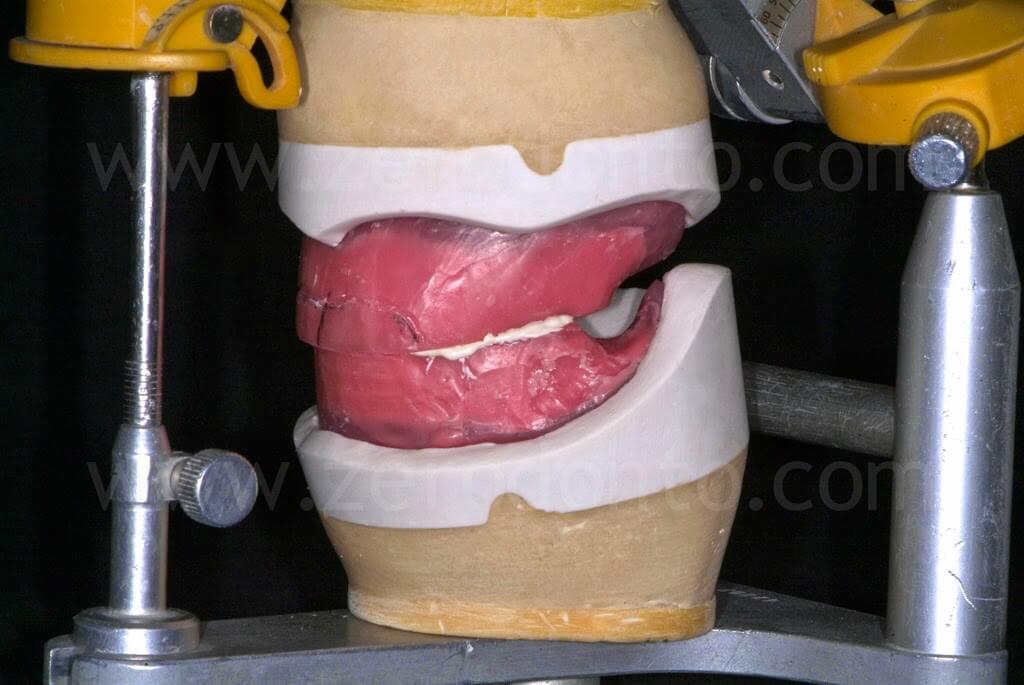
After carefully checking the centric and non-centric movements of the mandible in the presence of total removable dentures, the bilaterally balanced occlusion was chosen as occlusal scheme to improve the stabilization of the prostheses.
On the basis of the intraoral records performed by the clinician on the wax blocks, it was possible to choose the proper dimensions of the maxillary anterior teeth as well as the correct length of each tooth.
Resin teeth Vitapan Plus were used; the customized line of the incisal margin, the natural appearance of the borders and the vitality of the surface texture allow these artificial teeth to be perceived as natural ones. The interdental embrasures allow not only to set a natural configuration of the papillae but also to achieve an easier cleaning of the denture by the patient. The palatal configuration supports the anterior guidance and contributes to a proper speech.
The “substitution” technique was used to mount the front teeth; consequently, the proper amount of was was removed to place the corresponding tooth,
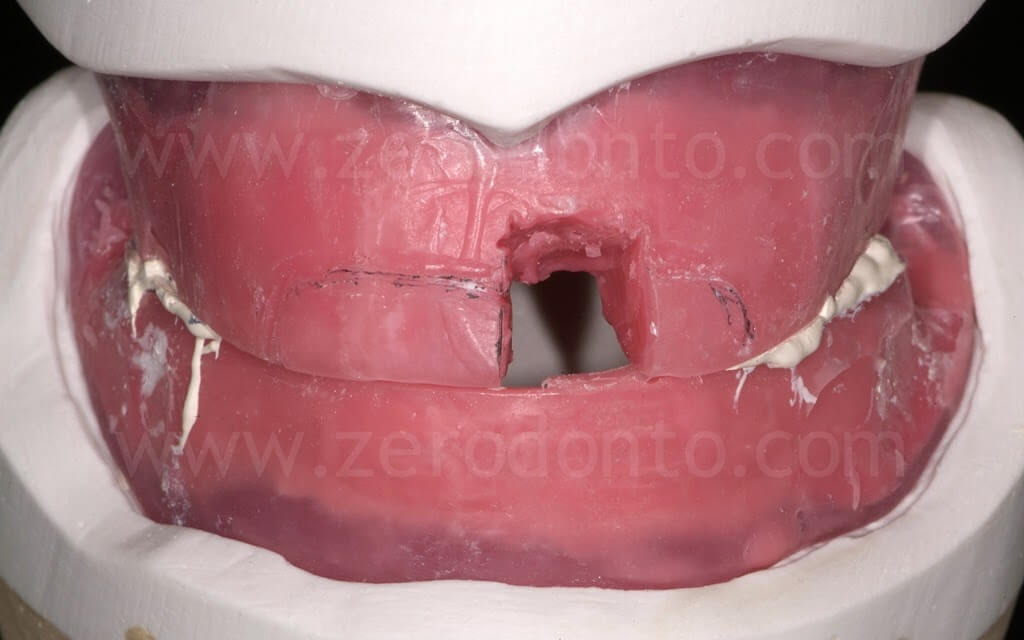
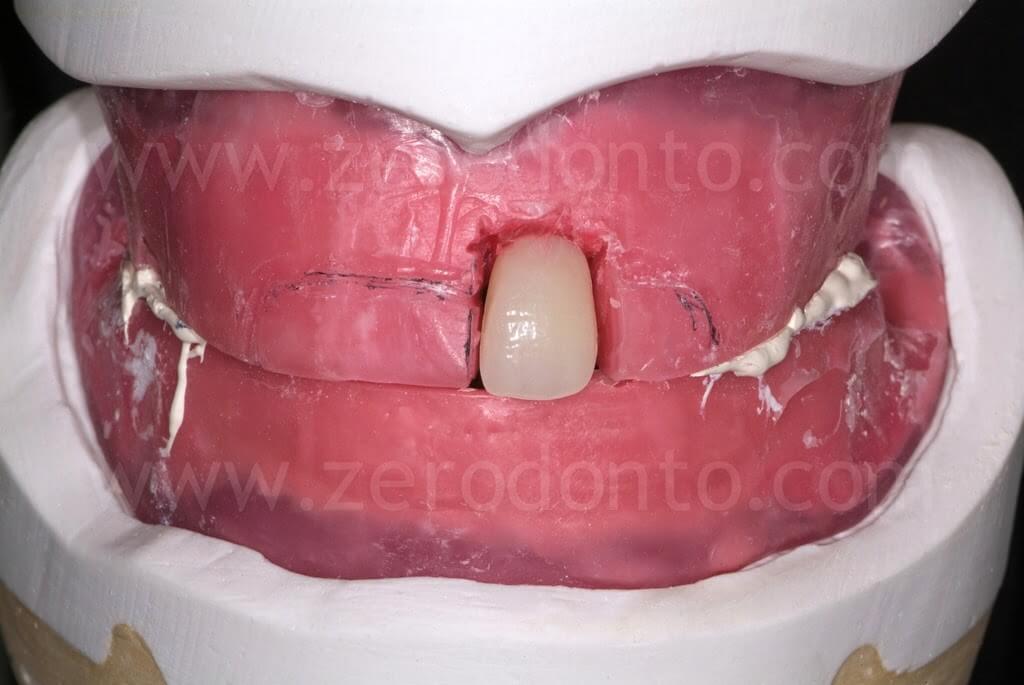
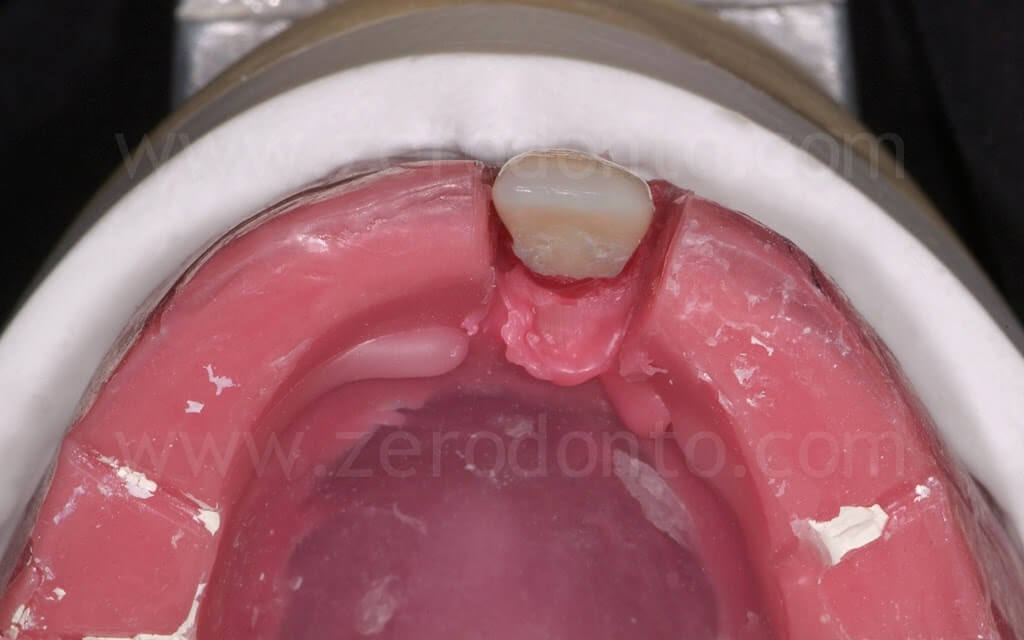
until the setting of the maxillary front teeth was completed.
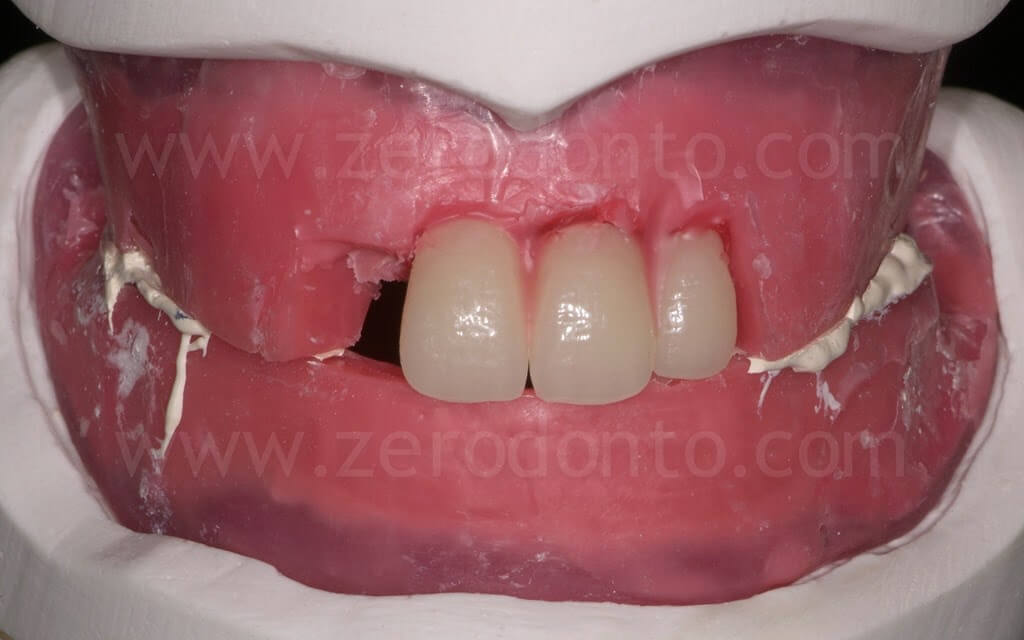
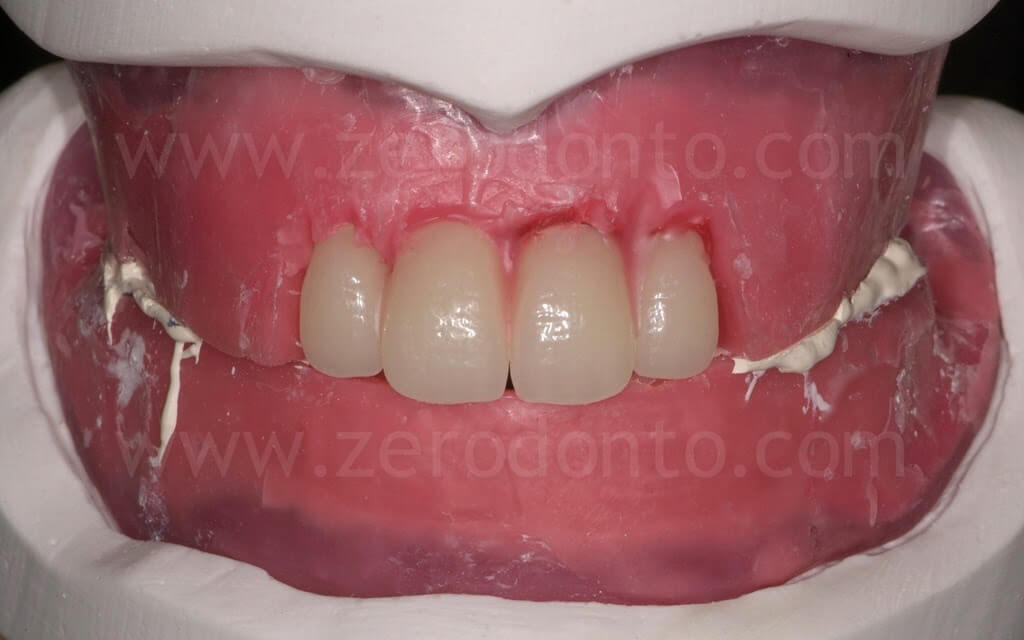
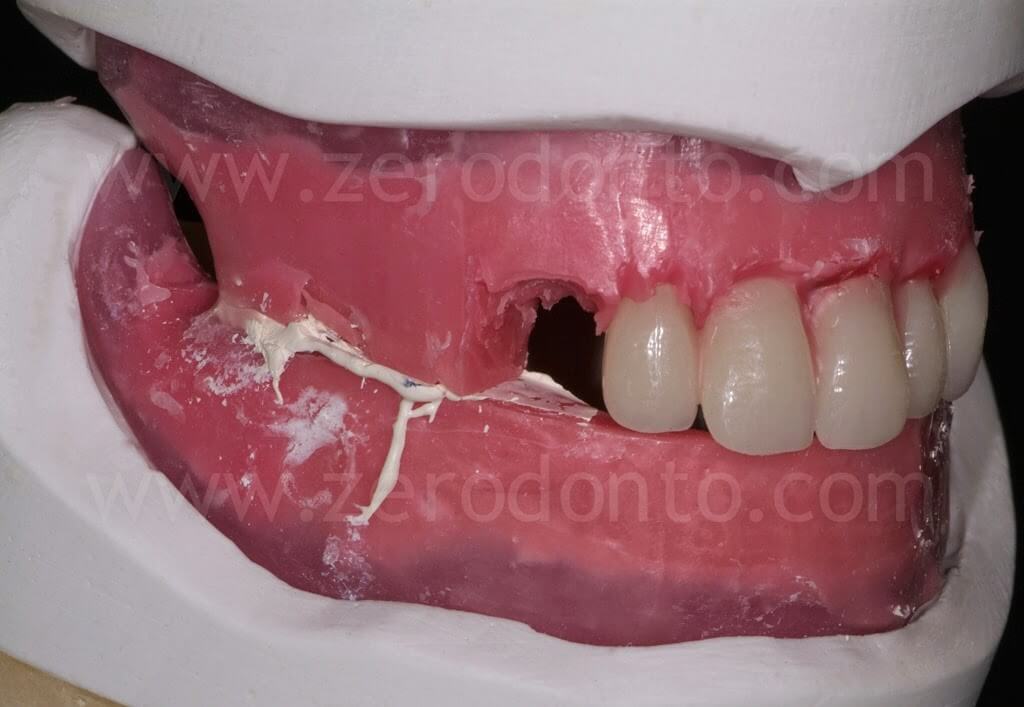
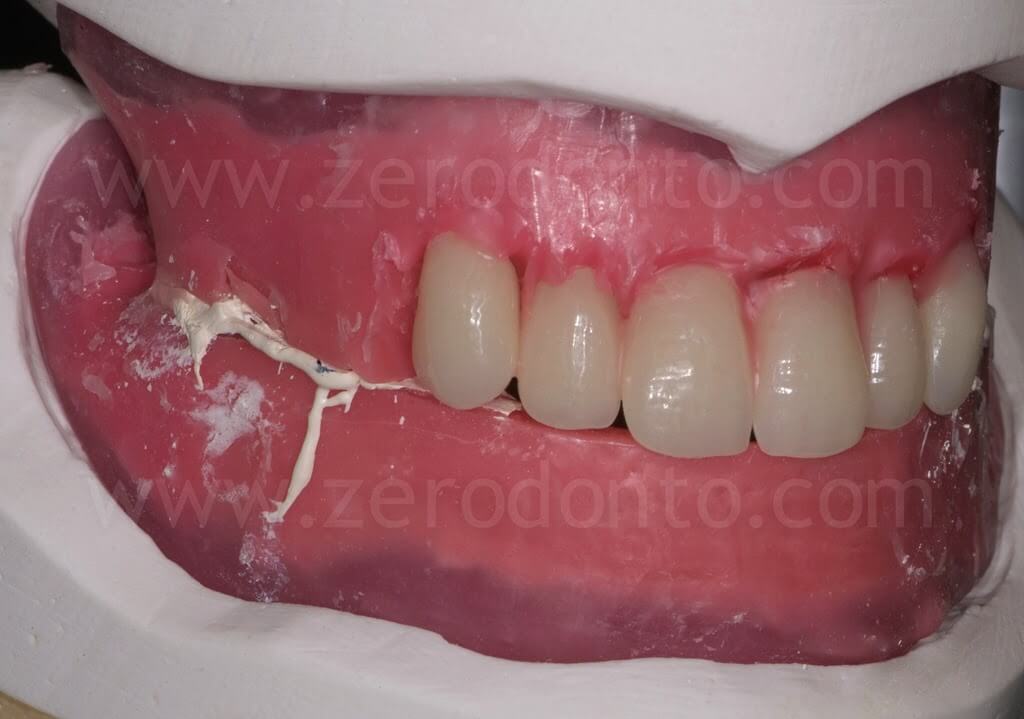
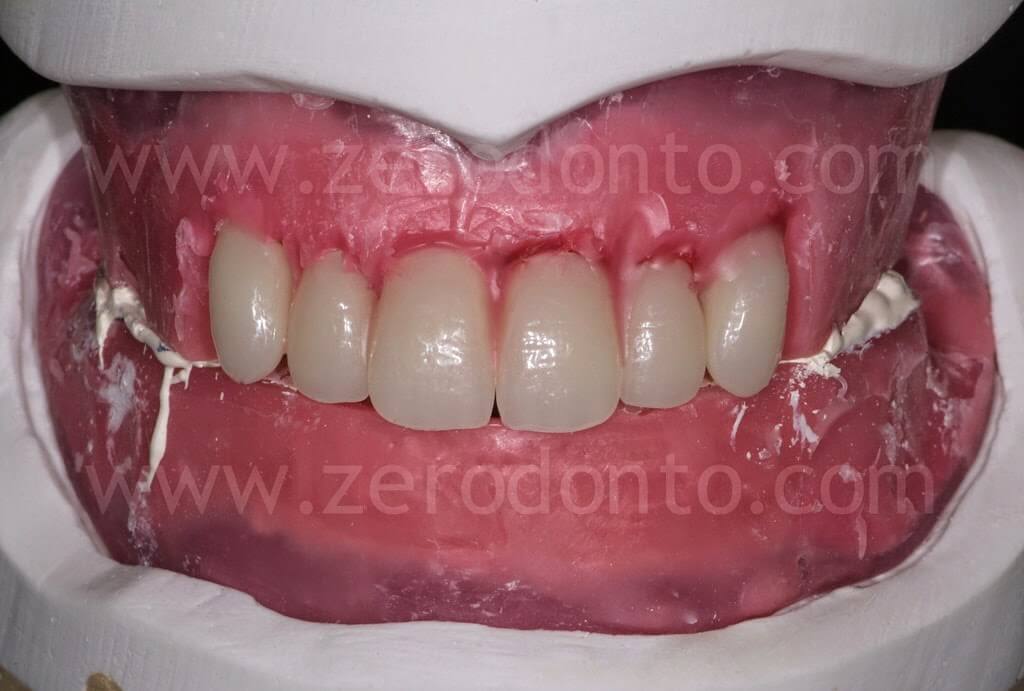
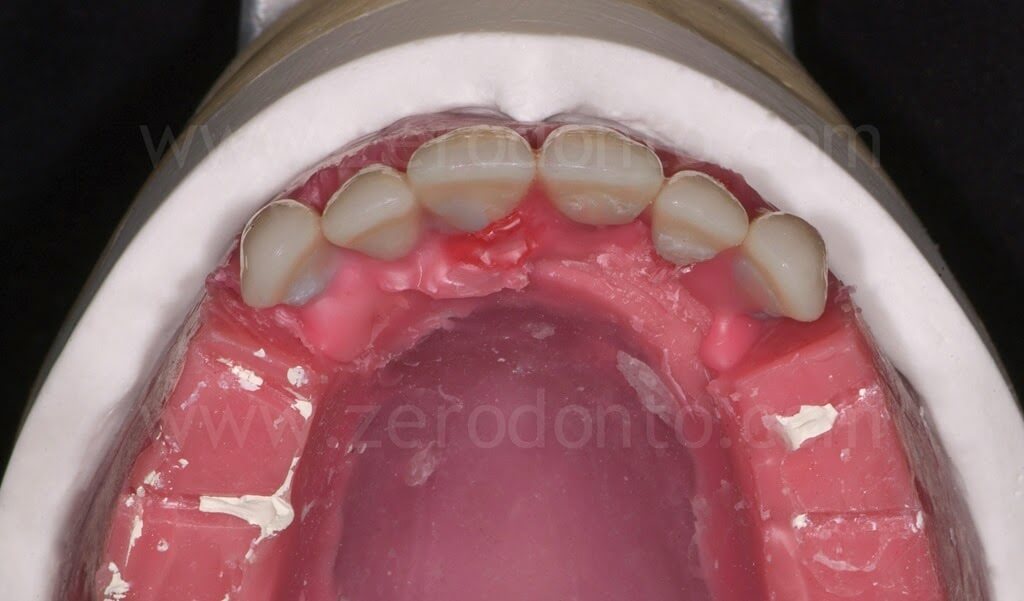
The mounting technique made the teeth 33 and 43 to be placed so as to guide the sliding of the maxillary canines on the mandibular ones, avoiding diastemata in the posterior segments and obtaining a correct proportion between over jet and overbite.
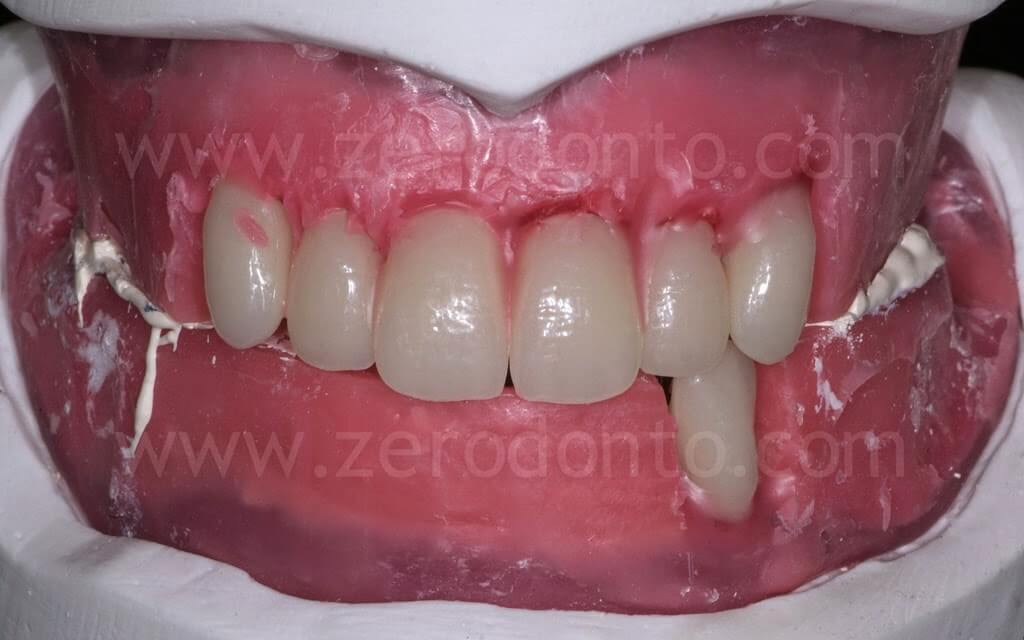
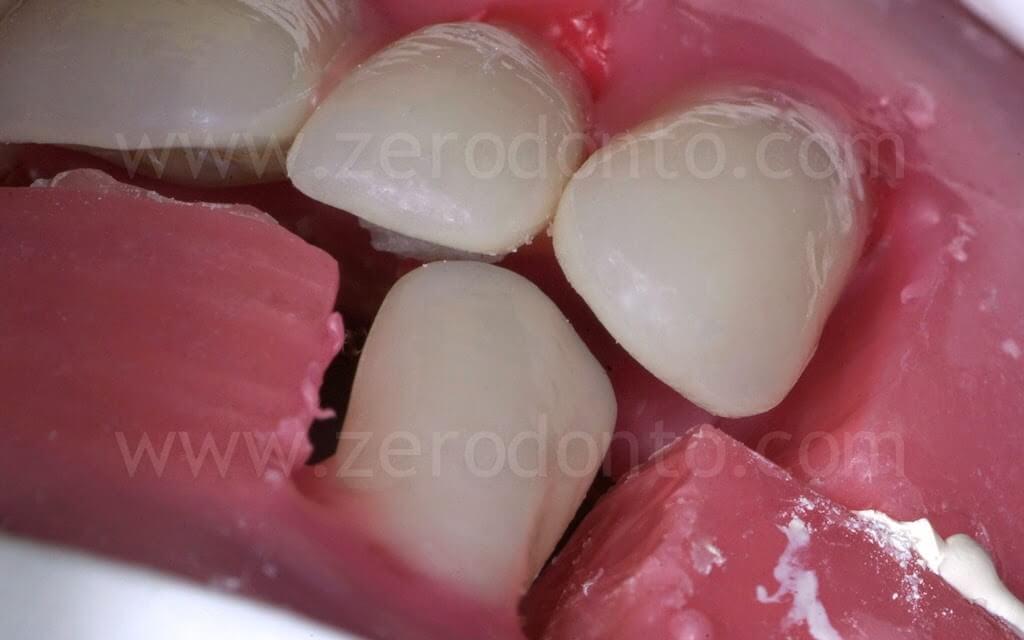
Once the teeth 33 and 43 were set, the teeth 31 and 41 were placed respecting the midline of the maxillary central incisors.
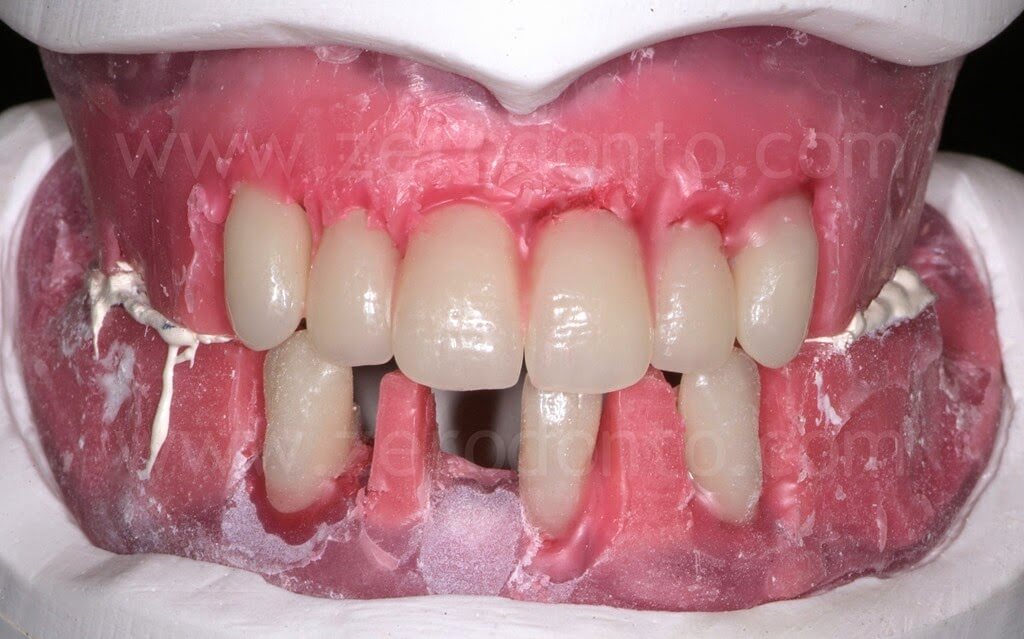
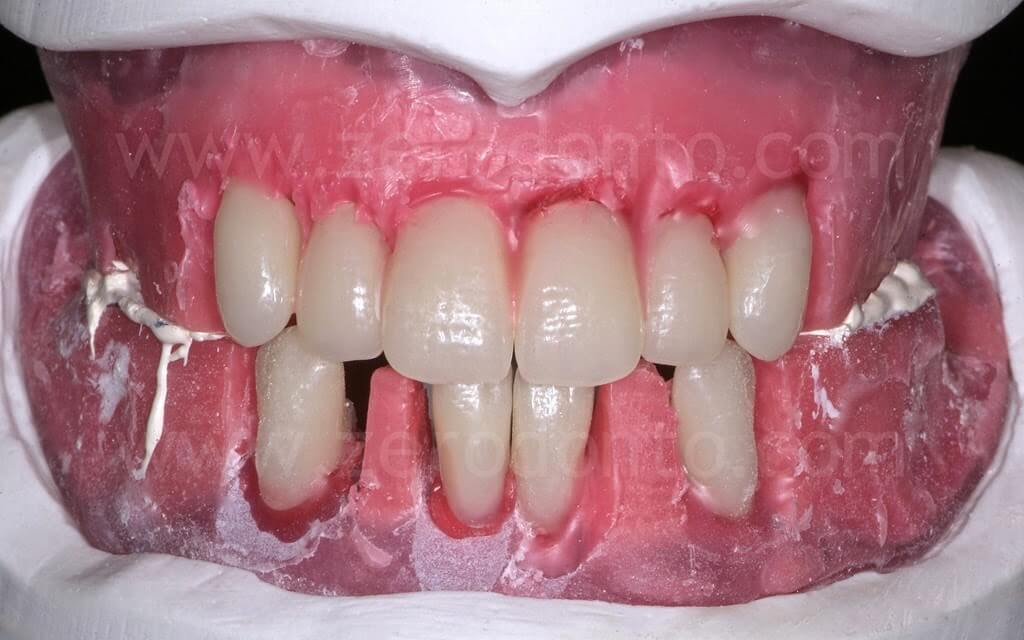
In the remaining room, the teeth 32 and 42 were finally set.
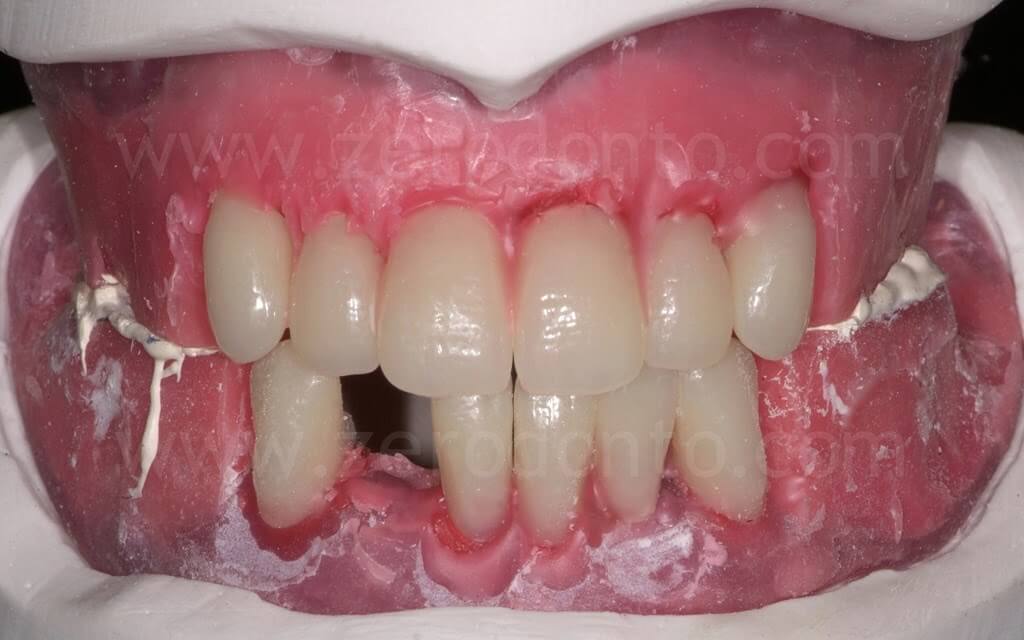
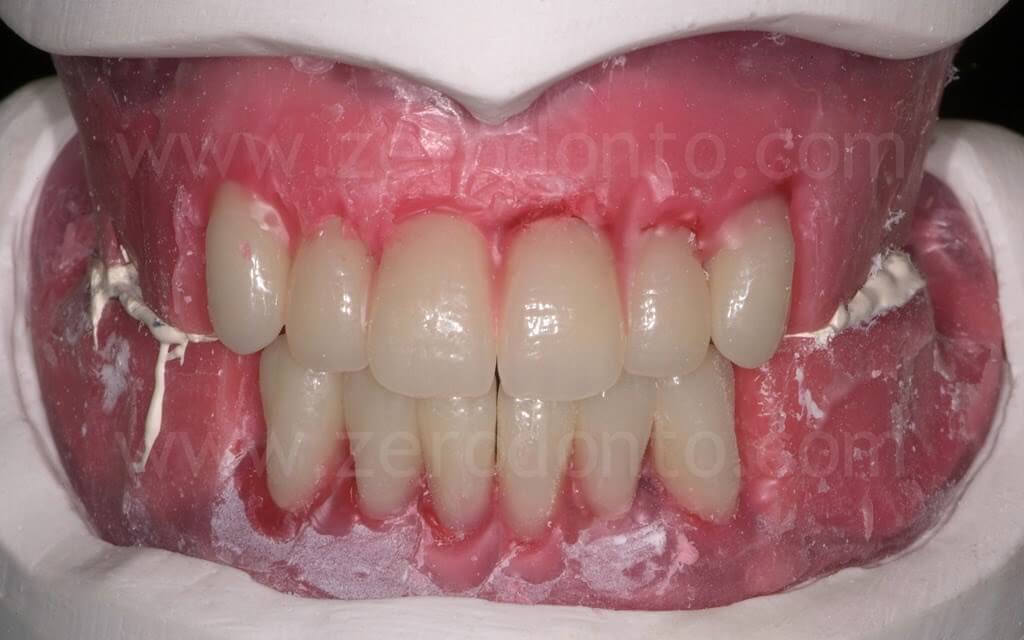
The mounting was completed balancing the relationship between function and esthetic.
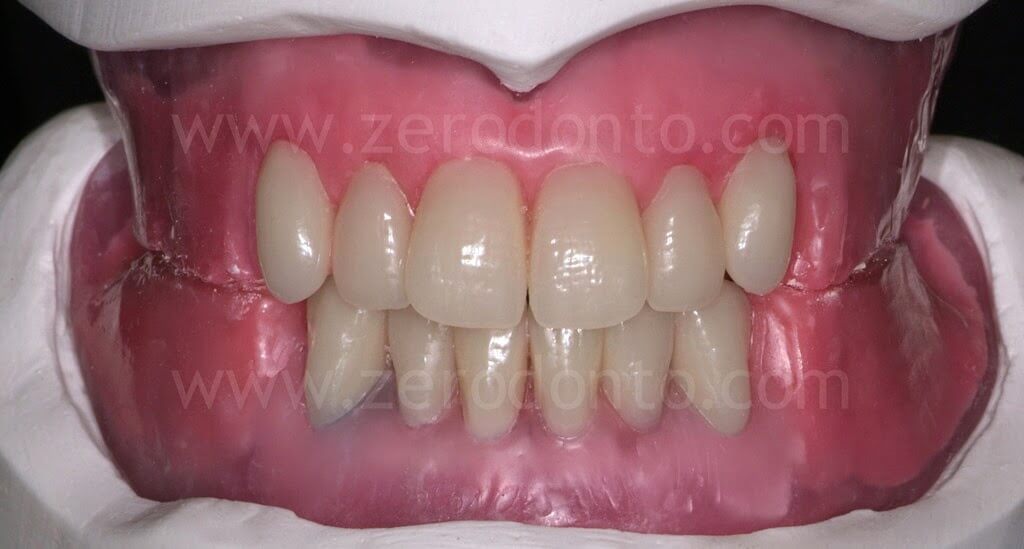

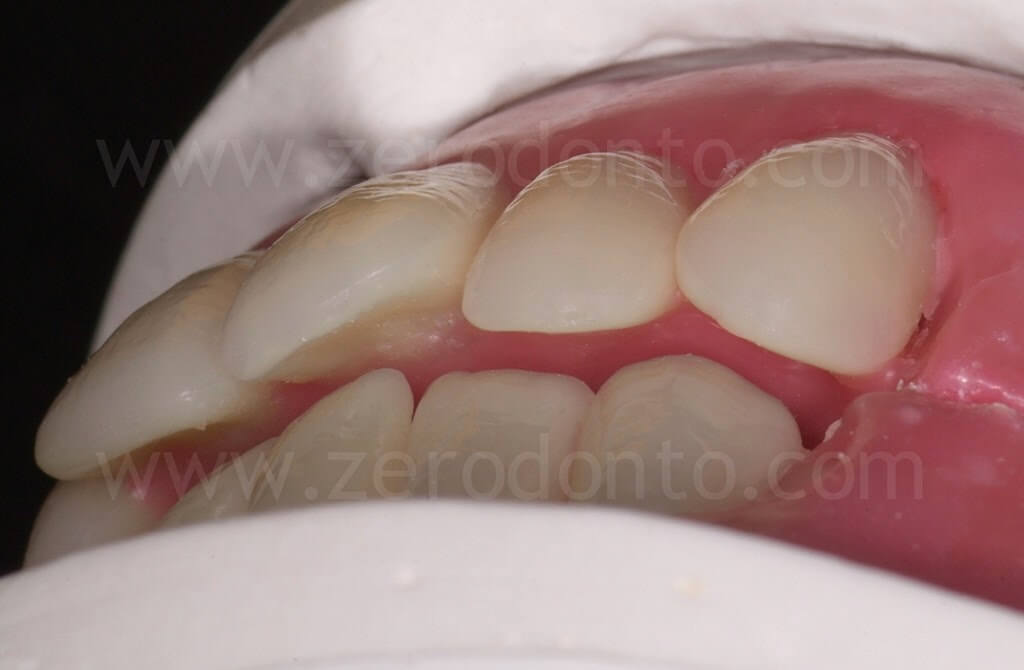

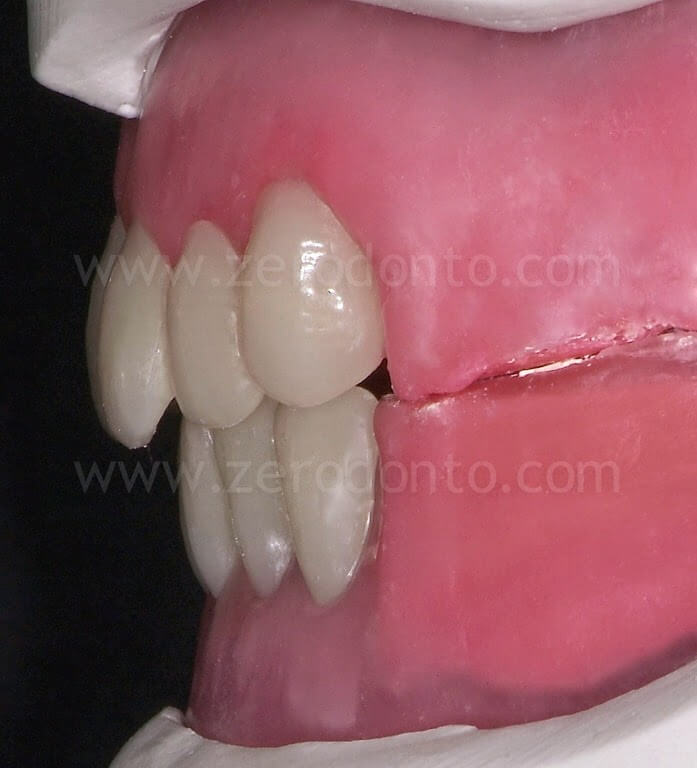
A first intraoral try-in was performed to verify the correctness of the mounting of the front teeth by means of phonetic and esthetic procedures. During these steps, the trust gained by the patient is paramount to make the patient cowork with the dental team. In the respect of the functional parameters, it is even possible to allow the patient to suggest specific esthetic changes finalized to meet his/her expectations.
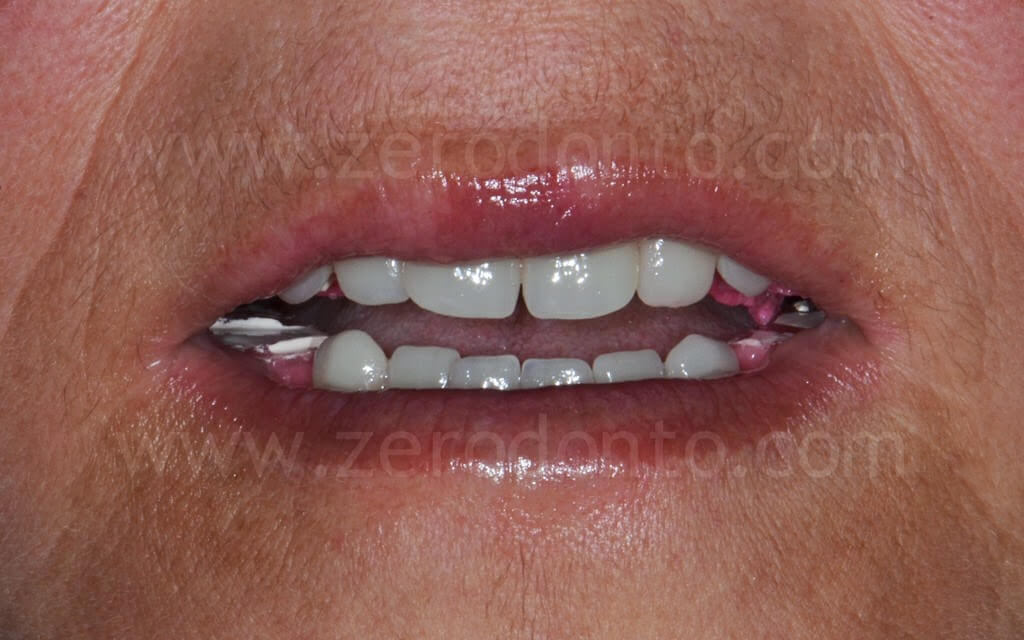
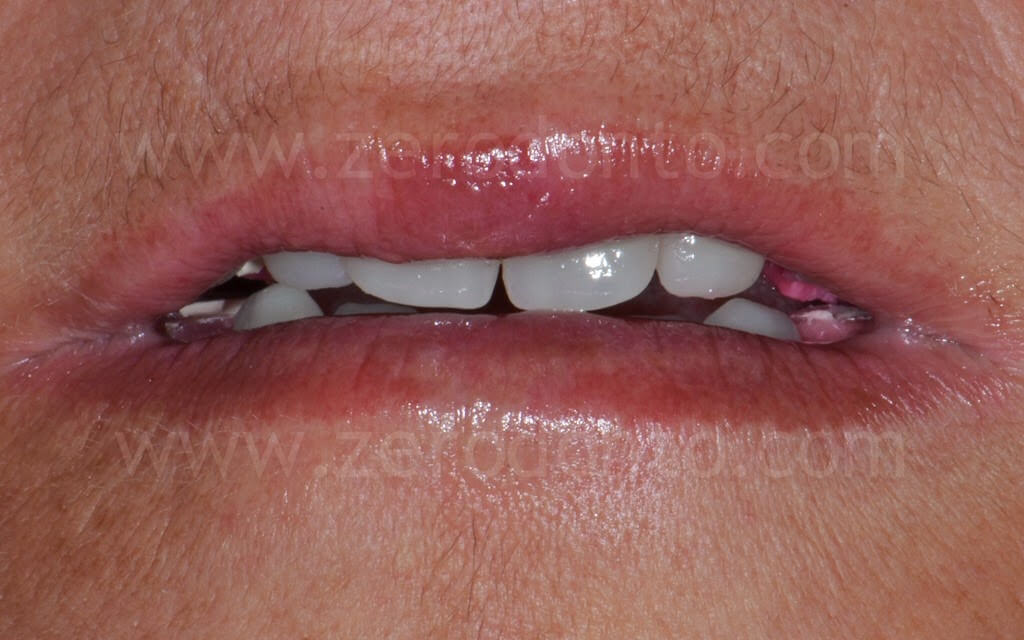
Then, the mounting of the posterior teeth was performed in a bilaterally balanced occlusion.
The Vita Lingoform teeth were used to set the posterior segments. The univocal reproduction of the centric contacts and the spherical intersection of the interproximal surfaces allow for a controlled mounting of the Lingoform in any bite configuration. Being suitable for any mounting technique, even the lingualized one, particularly in full removable prosthodontics, the Vita Lingoform teeth can prevent the atrophy of the alveolar crests even in the presence of unfavorable static and dynamic mandibular relationships. The occlusal design is suitable for both one-to-one and one-to-two tooth contact. The possibility to widen the space for the tongue and to support the cheeks given by the Vita Lingoform teeth contributes to the patient’s comfort.
Then, the posterior teeth of both arches were mounted: the tooth 14 contacted with both cusps the plan of the mandibular wax block, the tooth 15 was in contact with only the palatal cusp and the tooth 16 with only the mesio-palatal cusp, so as both the Spee’s and Wilson’s curves were set.
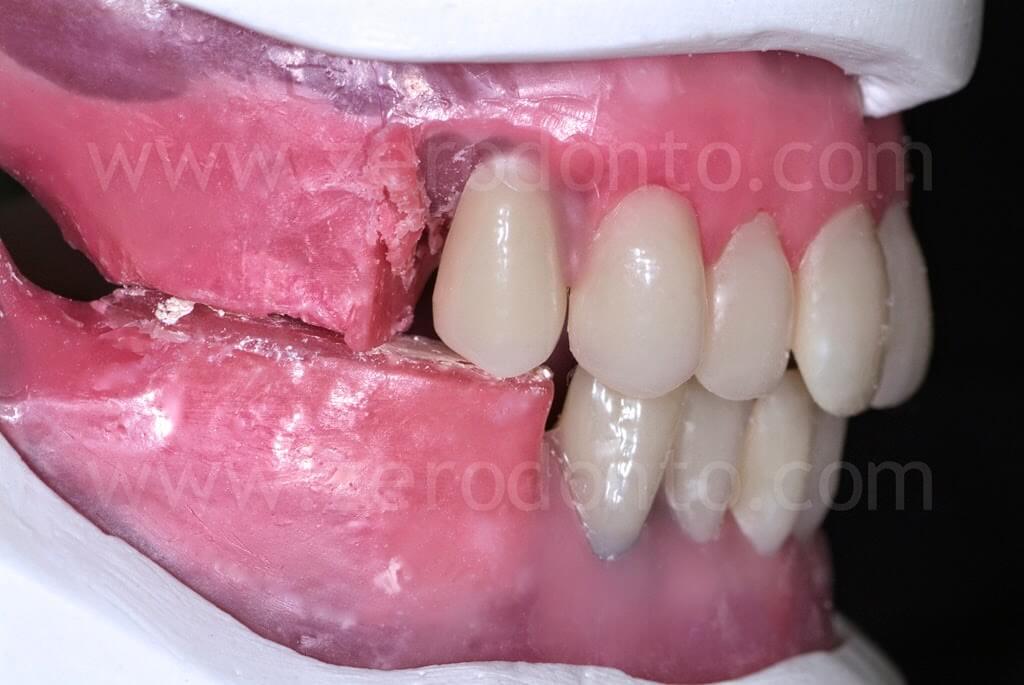
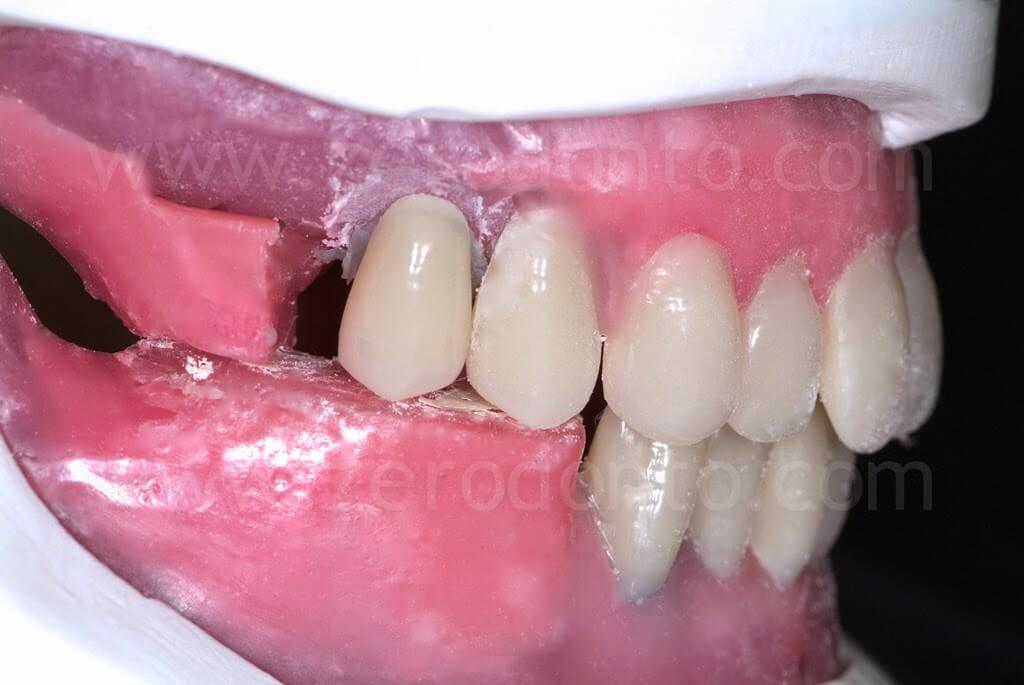
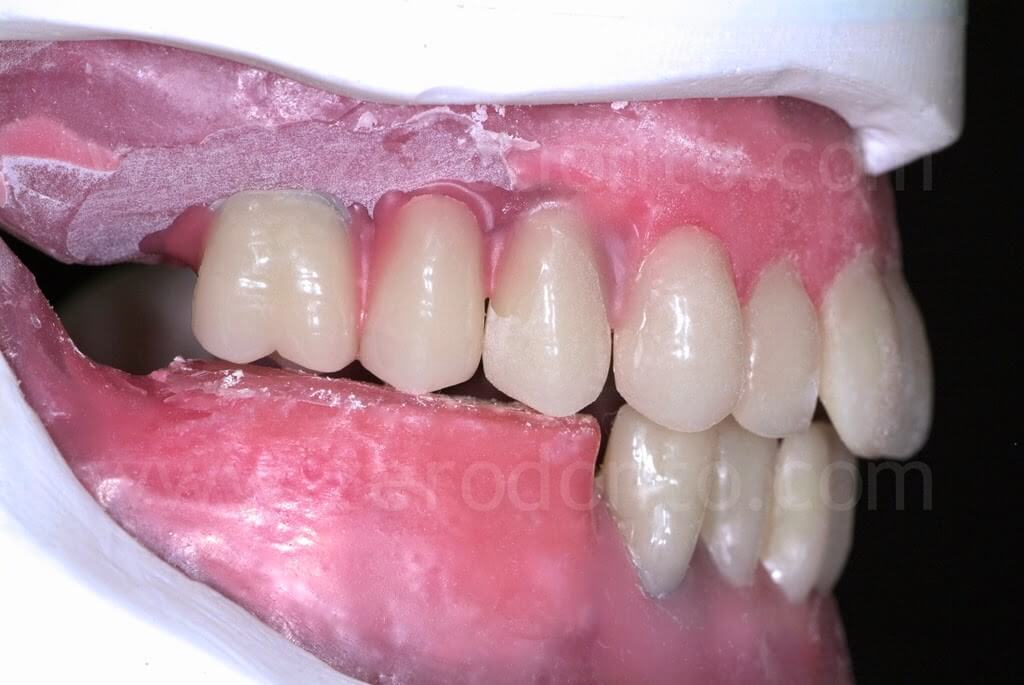
Similarly, the contralateral arch was mounted.
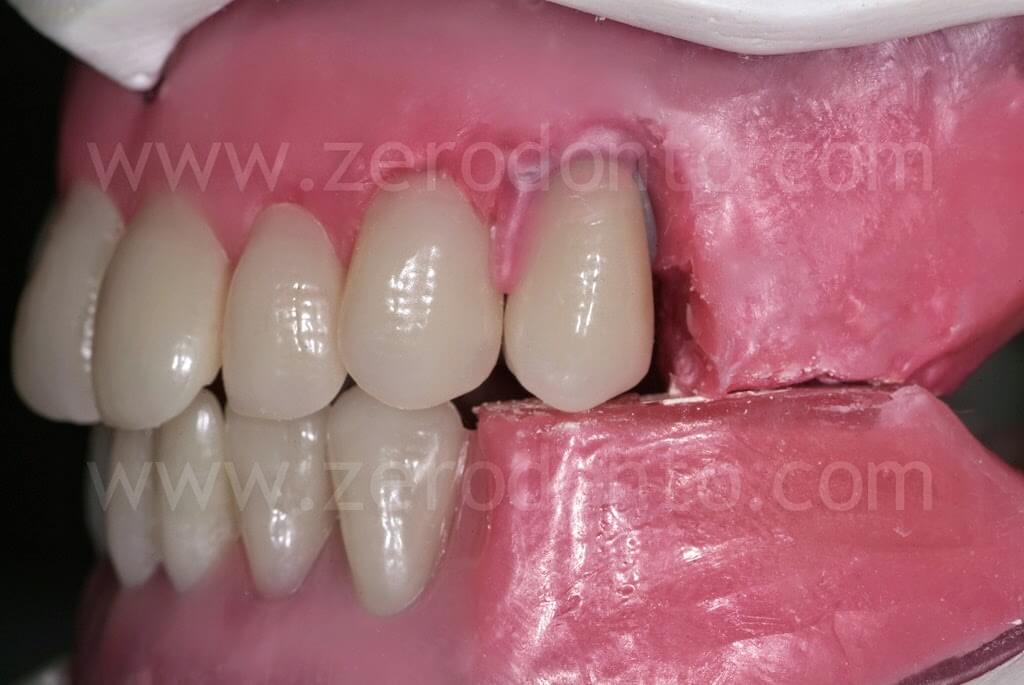
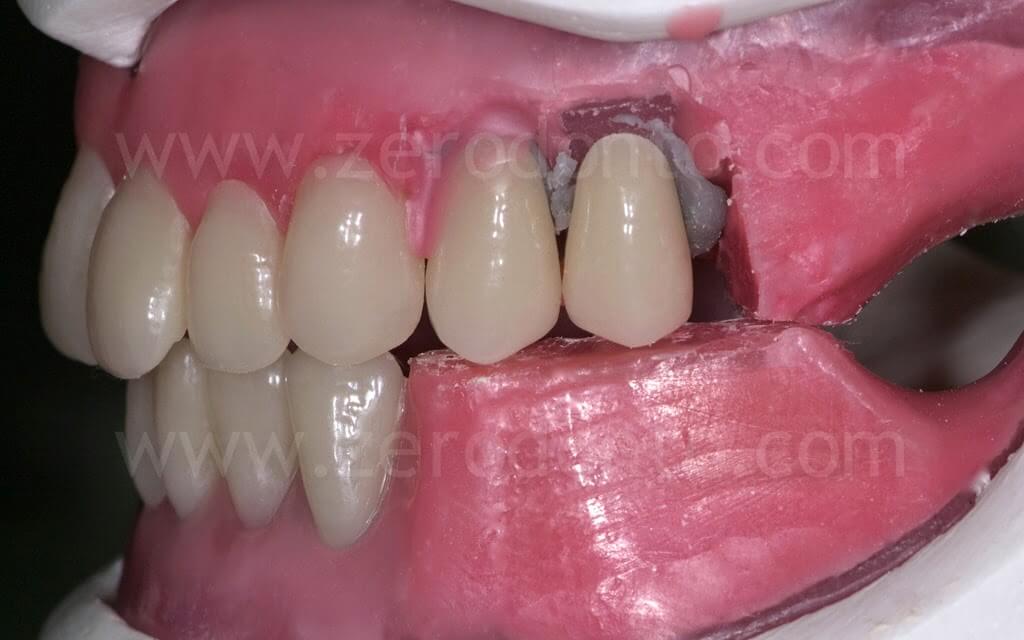
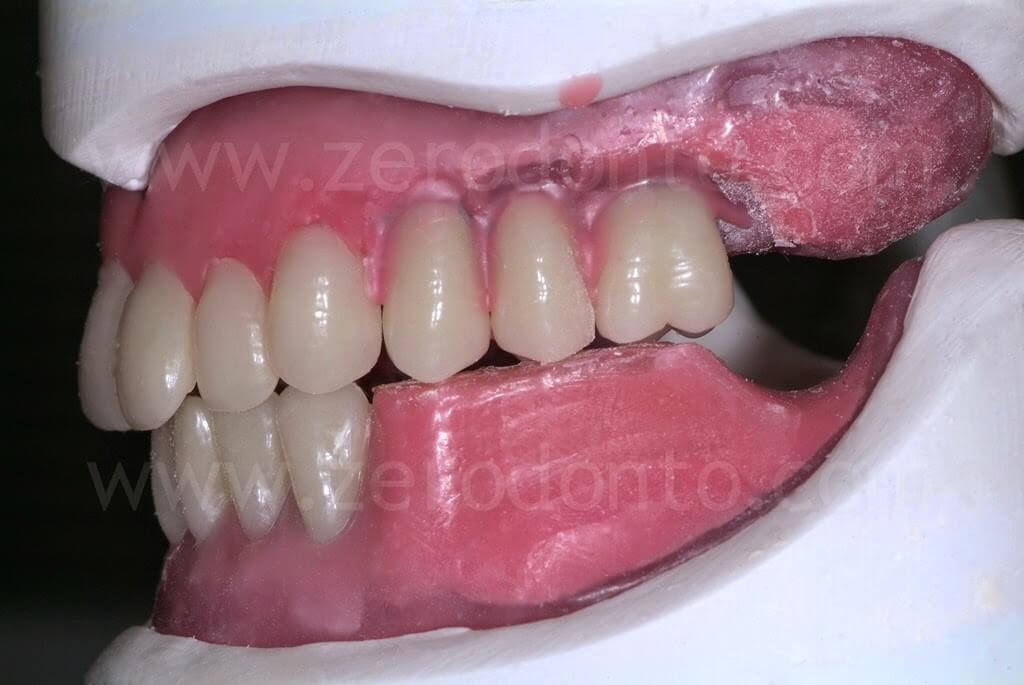
Once the maxillary arch was completed, the mounting of the mandibular posterior sectors was performed starting with the tooth 36 in respect of the Angle’s class; then, the teeth 34 and 35 were placed in one-to-two tooth contact, so as to make the cusps of maxillary teeth close in the lower fossae.
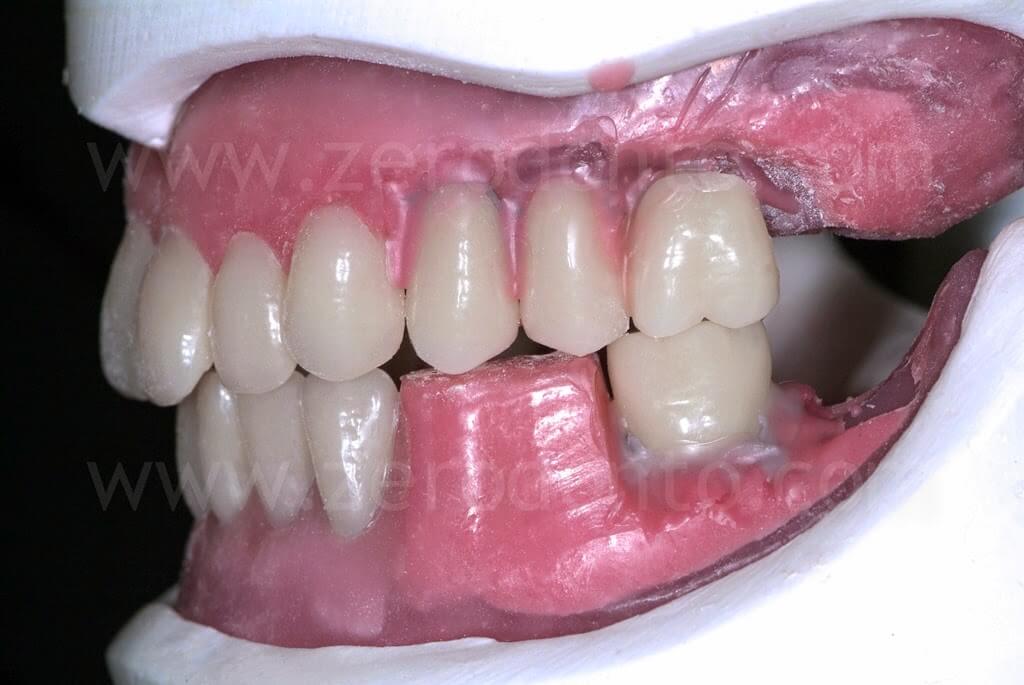
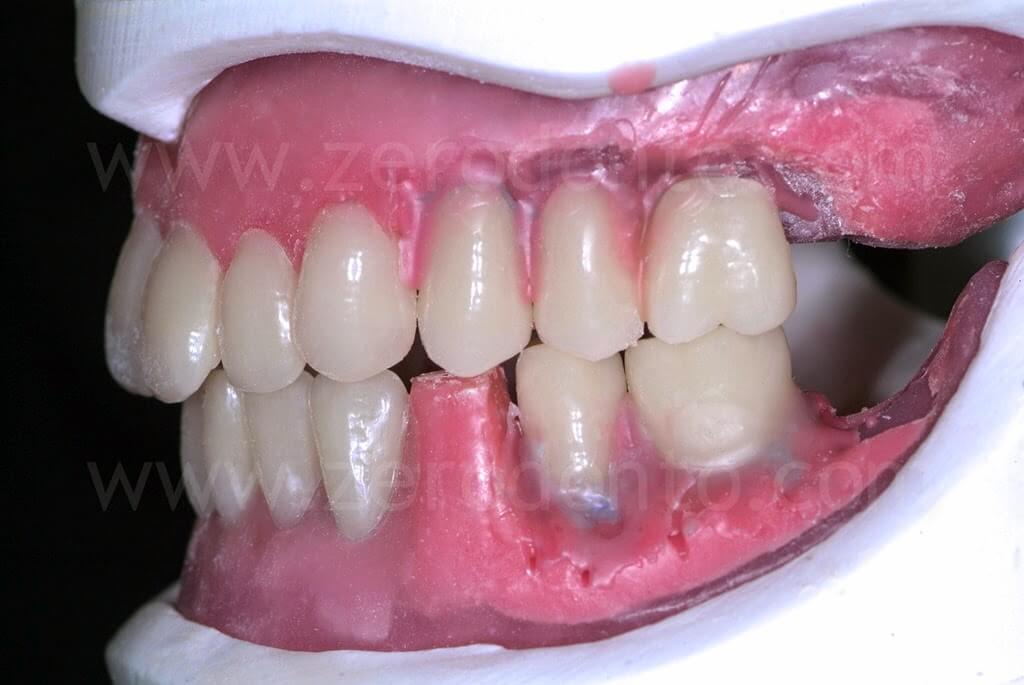
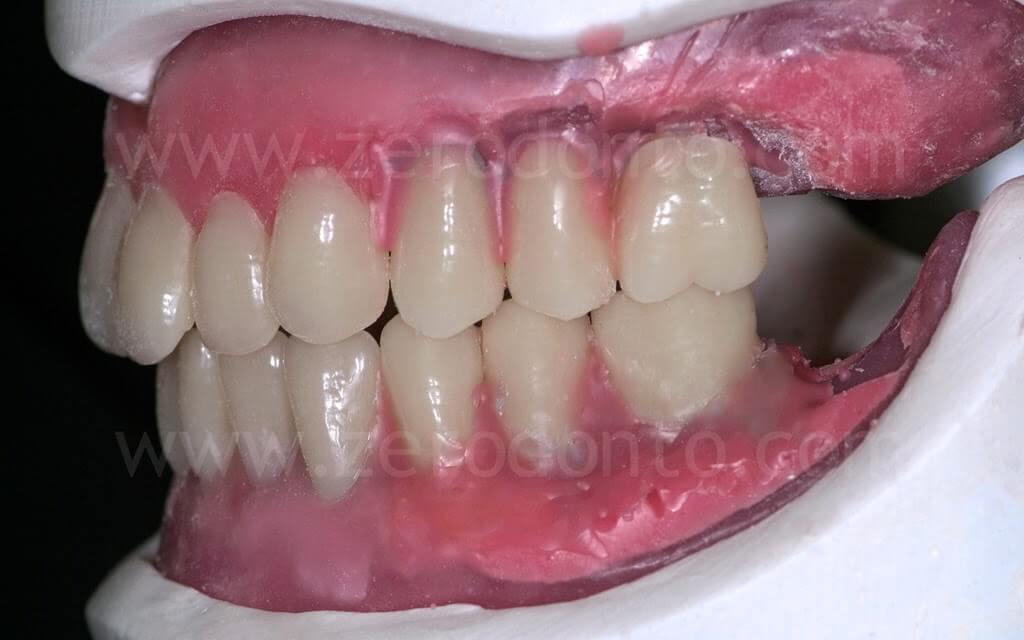
Similarly, the contralateral arch was mounted.
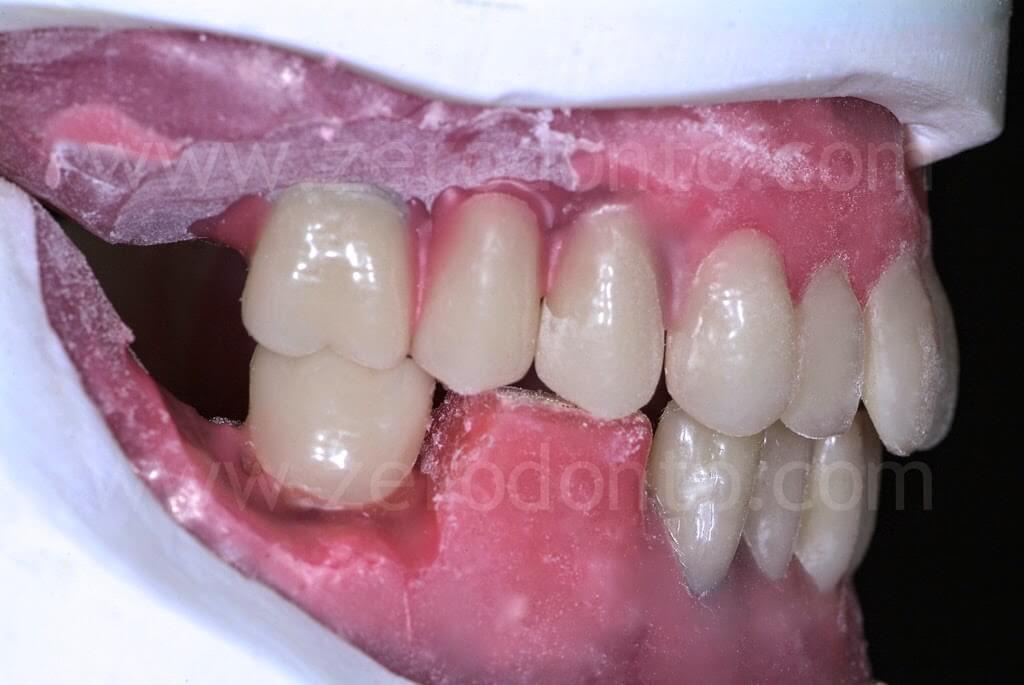
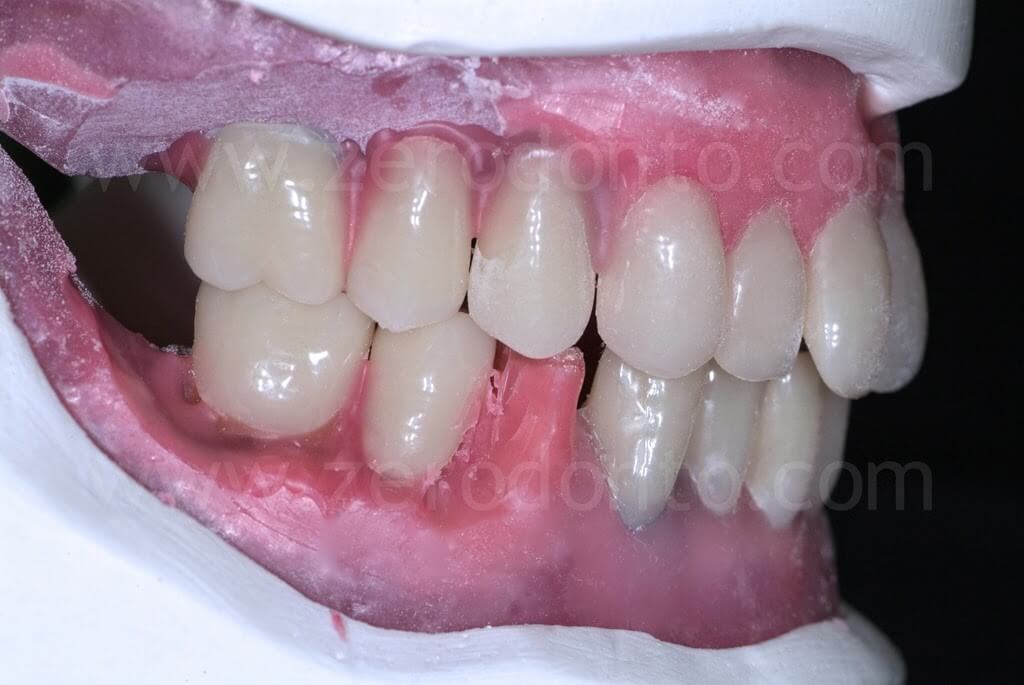
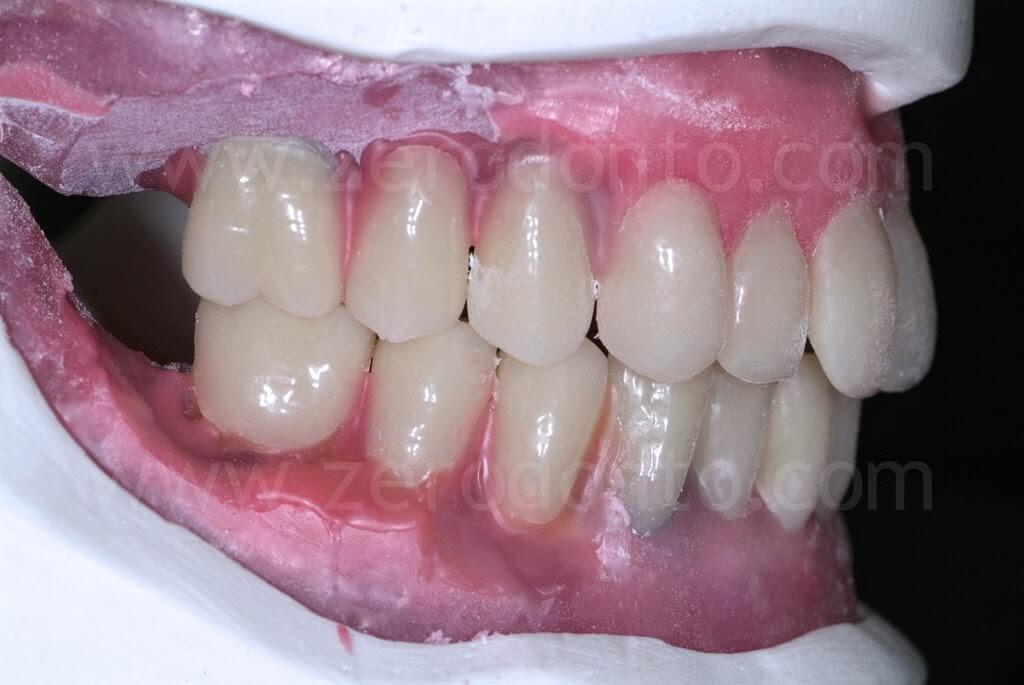
Then, the dentist checked again the occlusion, the vertical dimension, the esthetic and phonetic procedures, achieving the best natural appearance and collaboration by the patient.
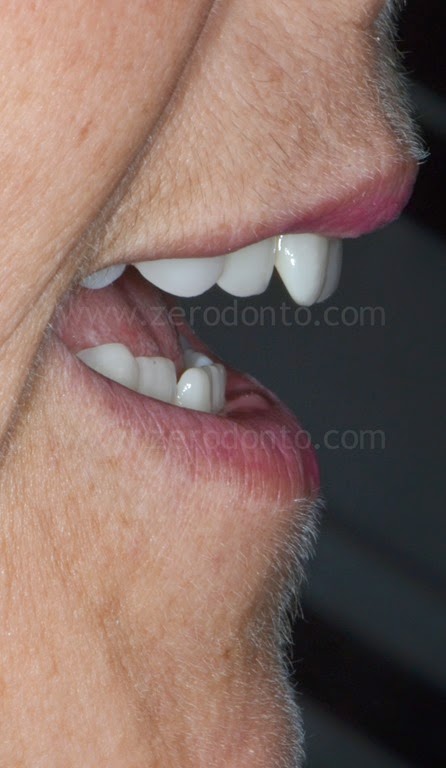
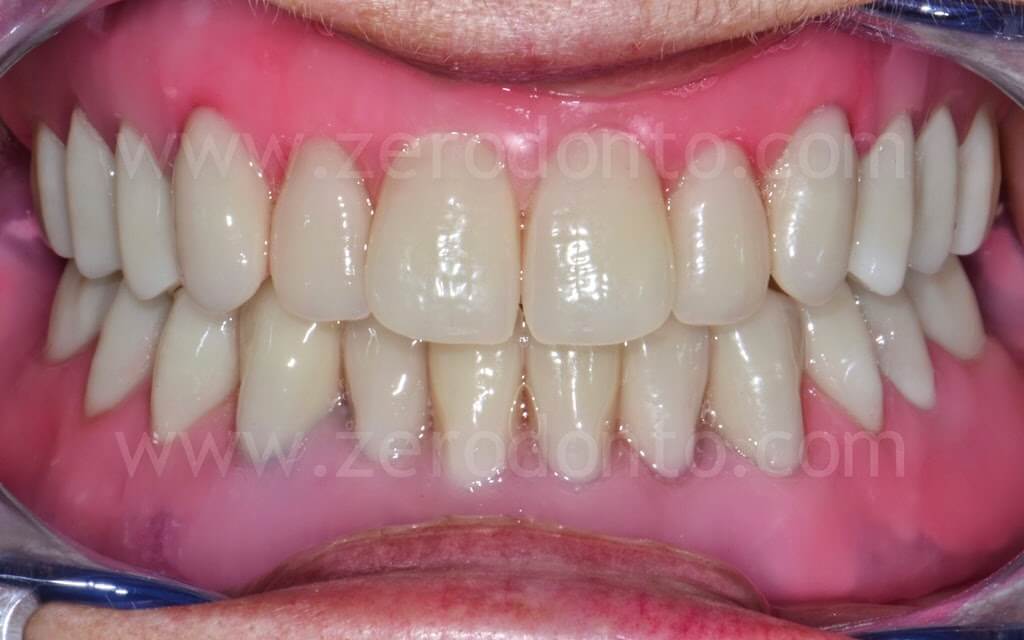
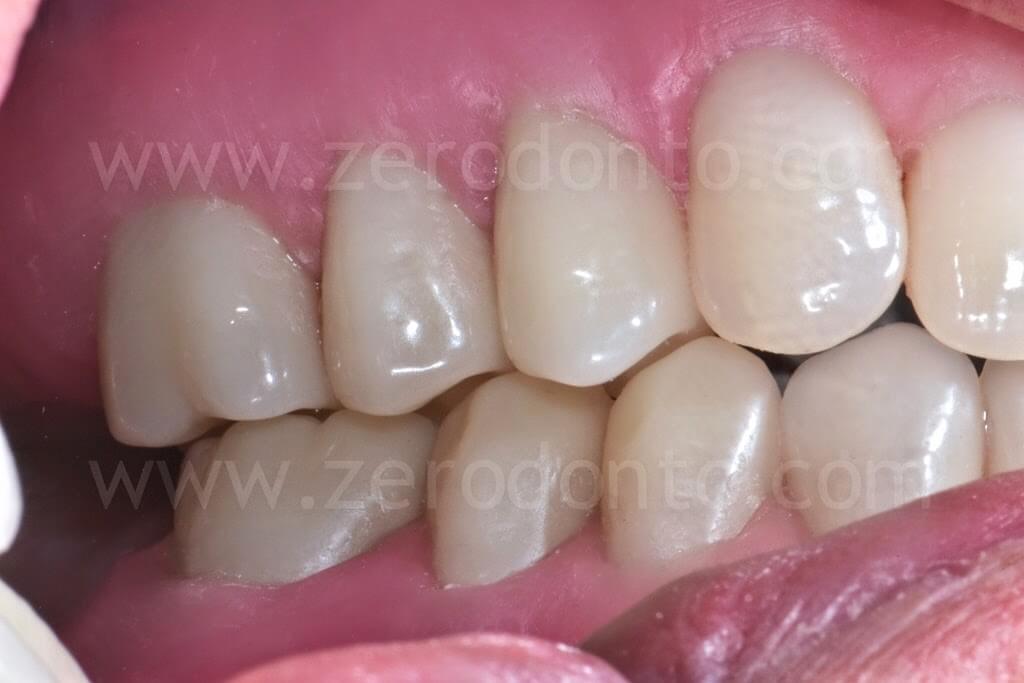
Successively, the posterior limit of the maxillary denture was identified on the master cast, signing the sealing area and the gypsum to be removed.

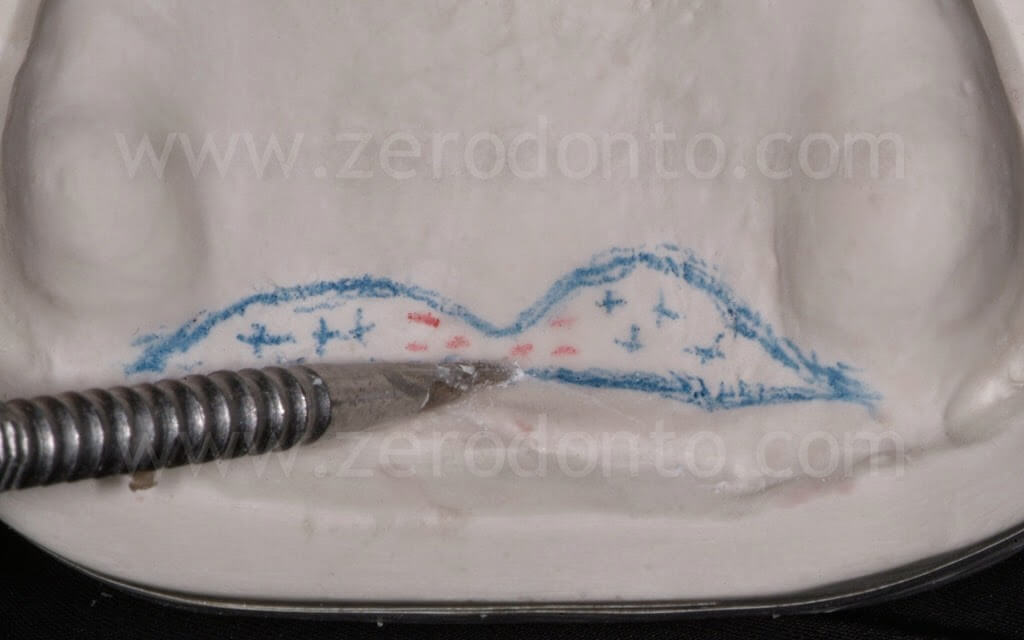
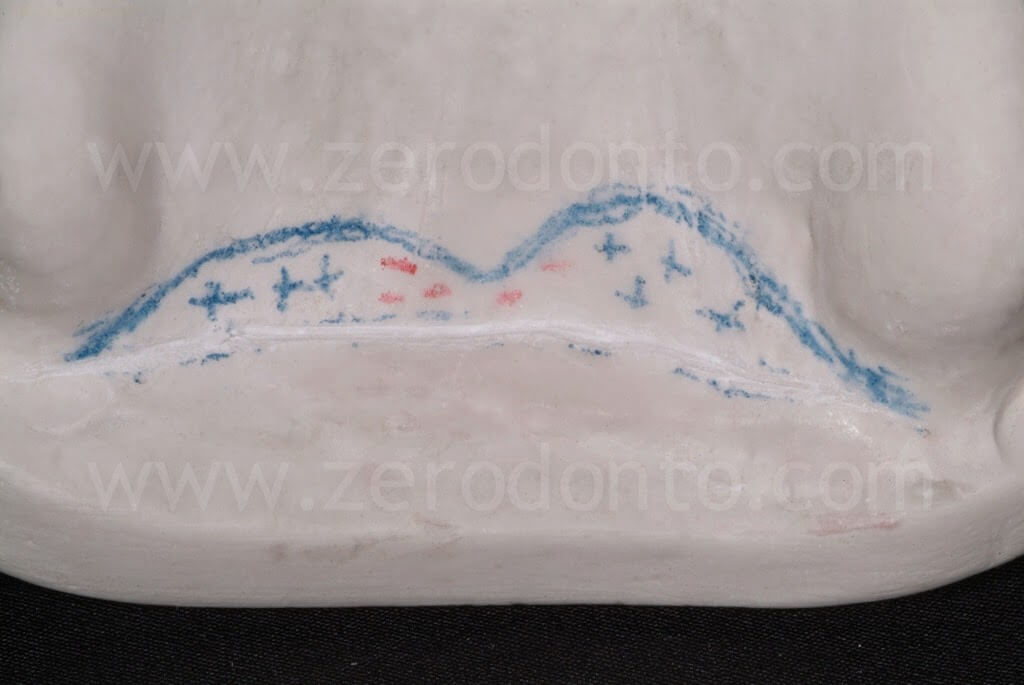
Once the amount of gypsum to be removed was quantitatively signed with “ + “ and “ – “ on the master cast, the procedure was carried on in the anterior-posterior direction.
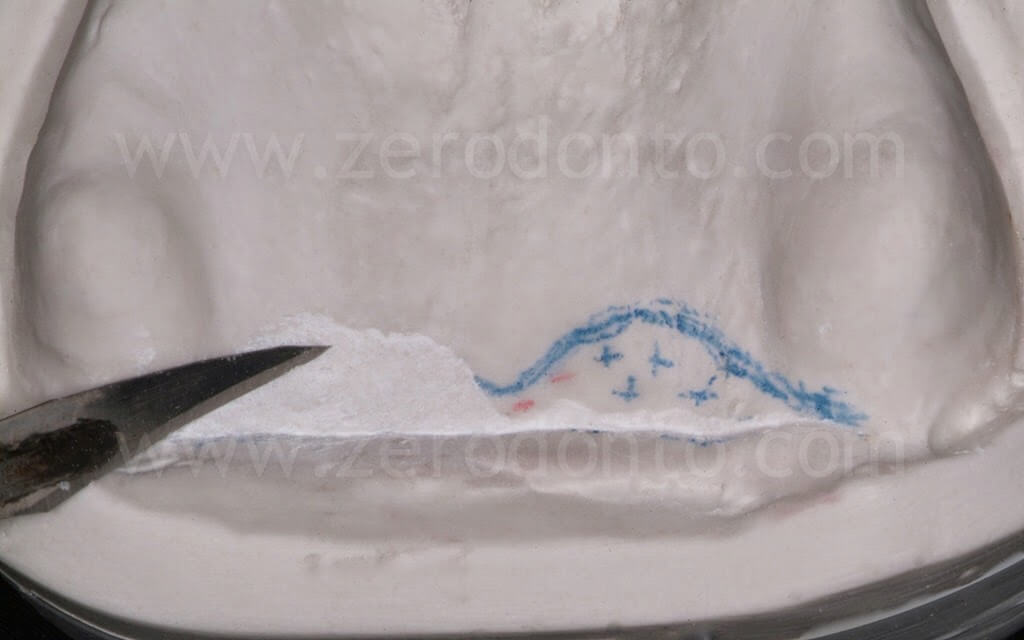
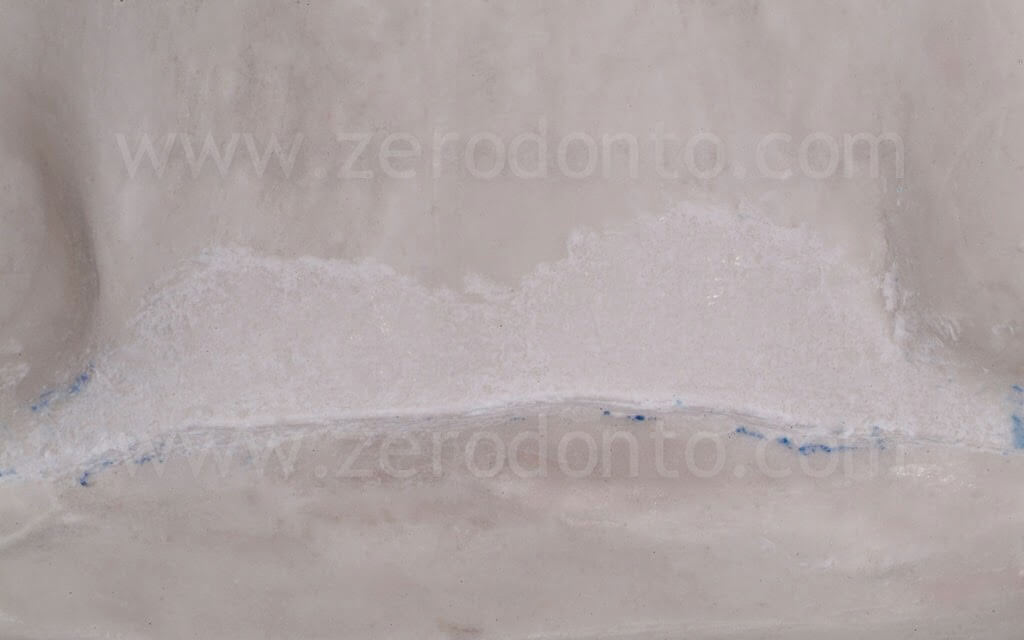
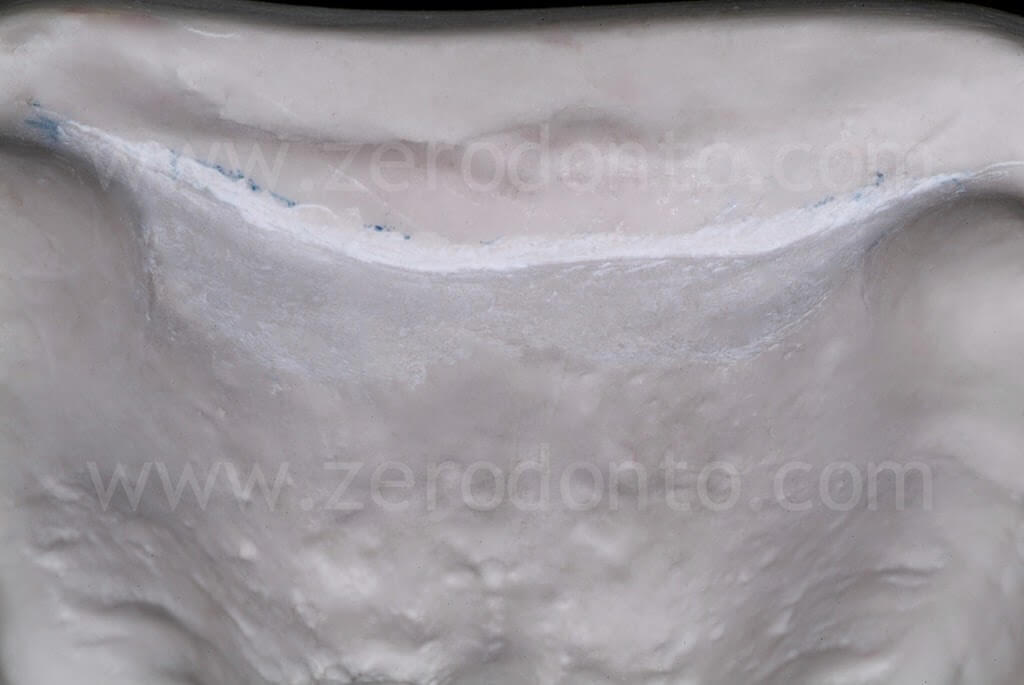
As reported above, in order to achieve the best esthetic result, particular care was dedicated to the proper integration between the gingival margins of the artificial teeth and their color. First, the gingival contours were modelled with wax, so as to imitate the morphology of the natural papillae and gingival scalloping.
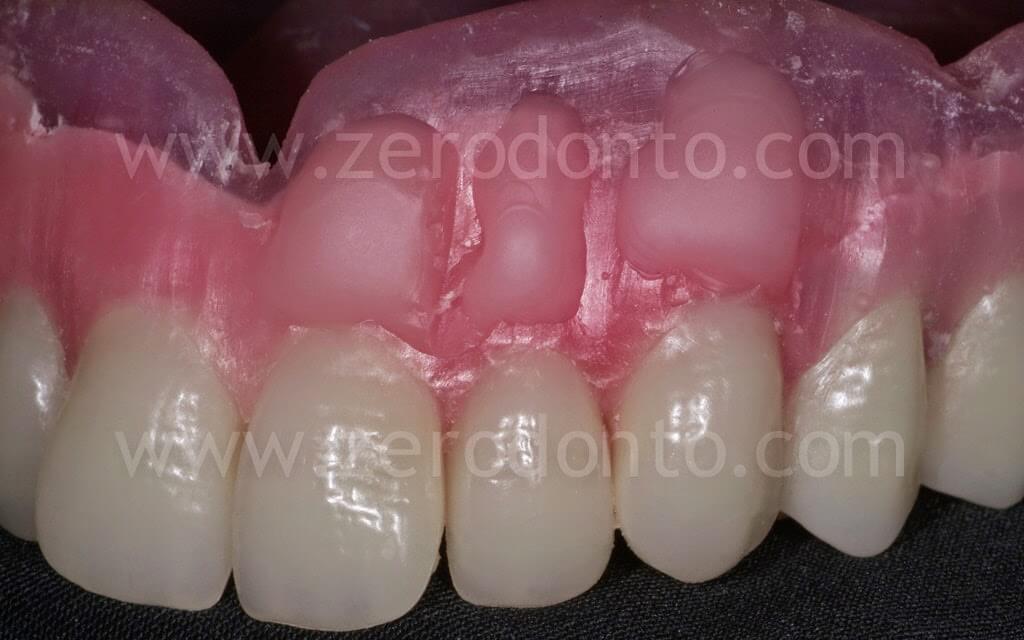
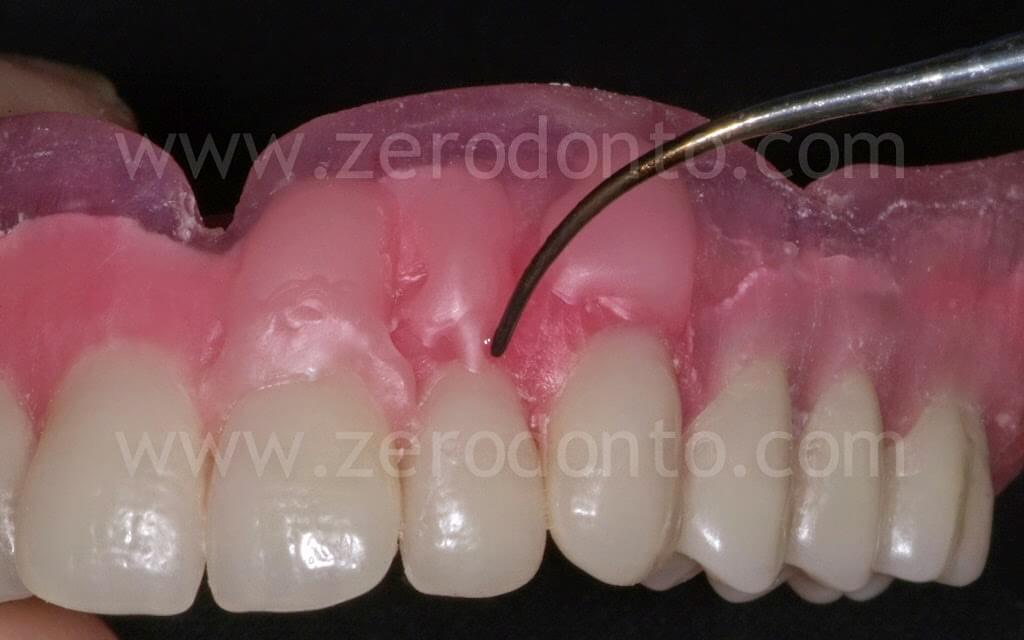
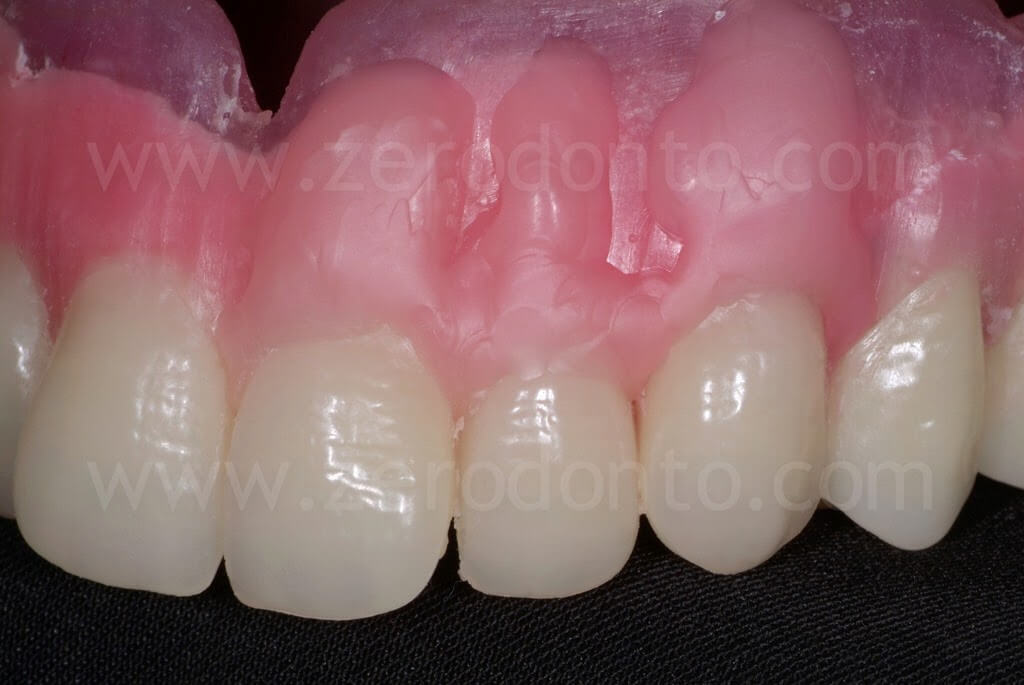
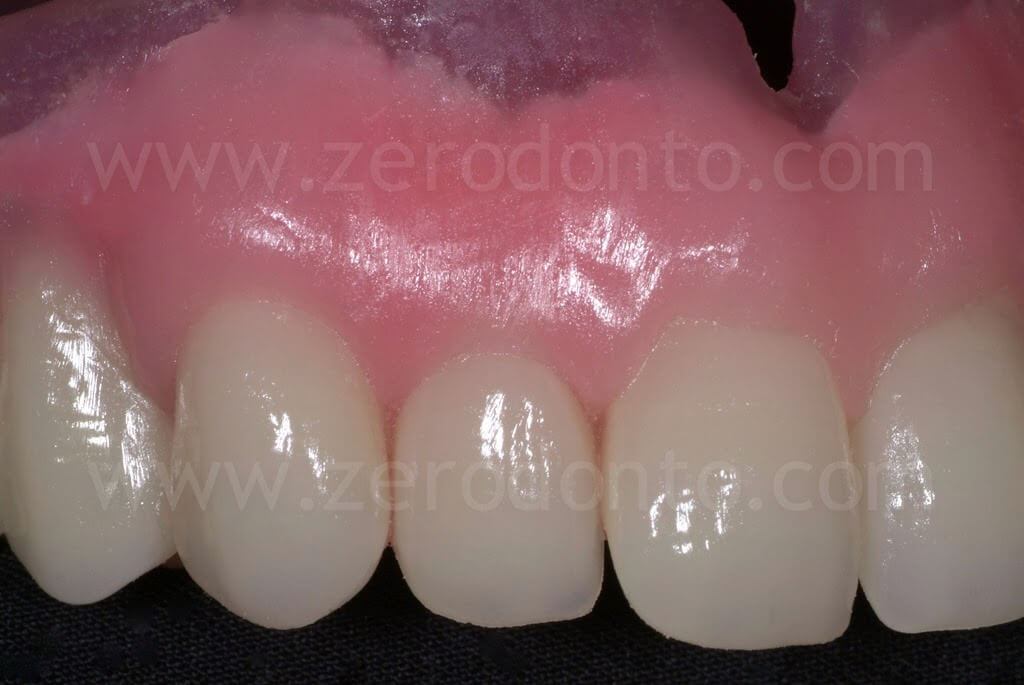
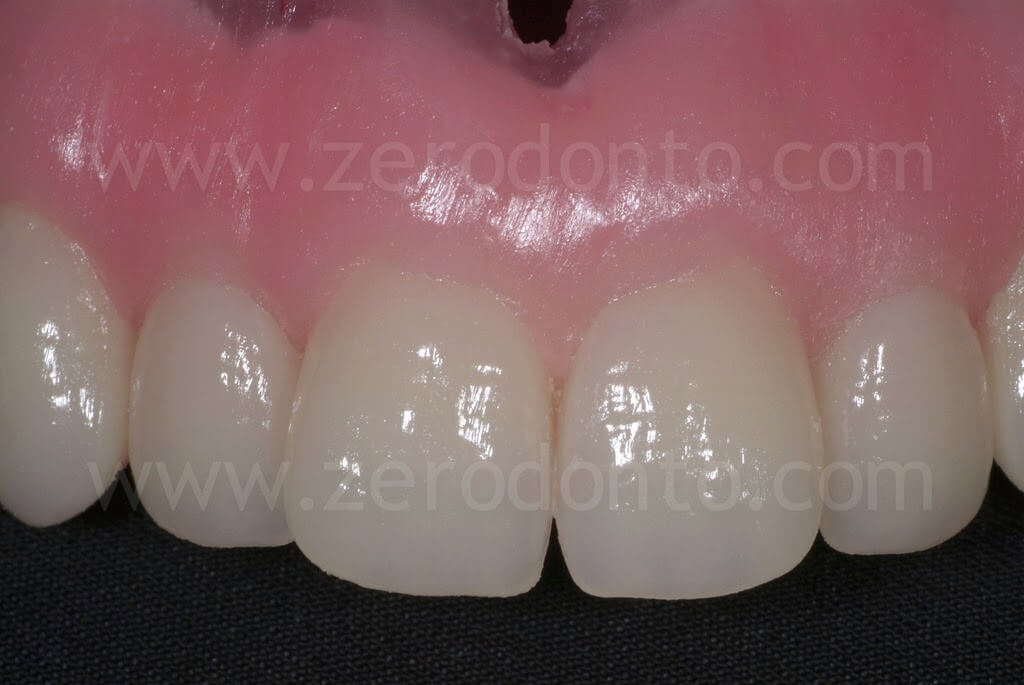
The mandibular denture and the posterior resin shields were modelled with the same technique.
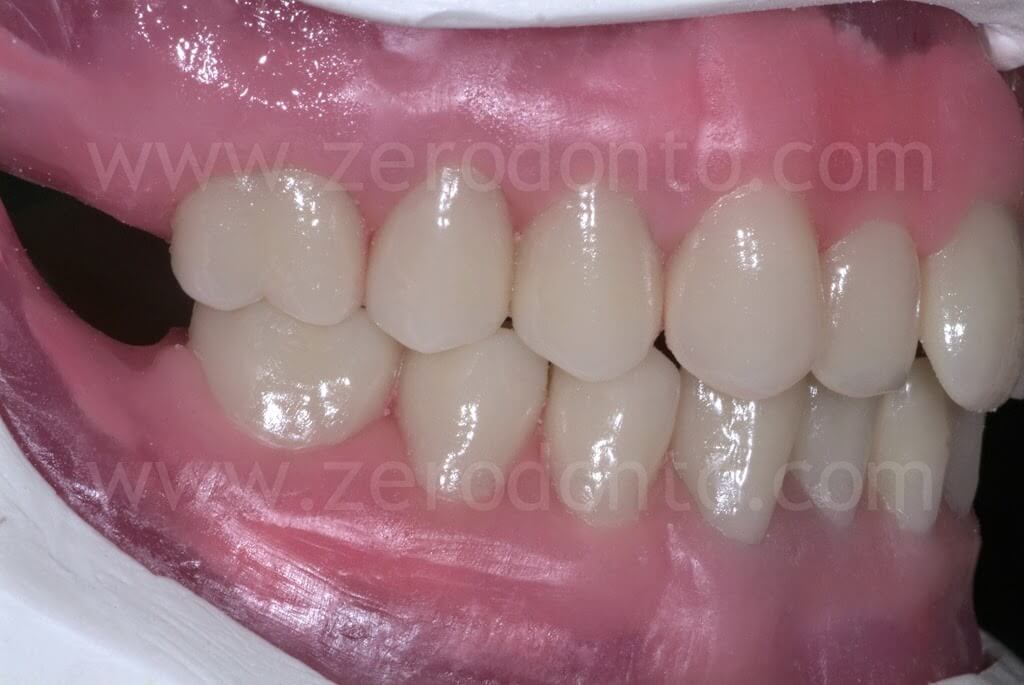
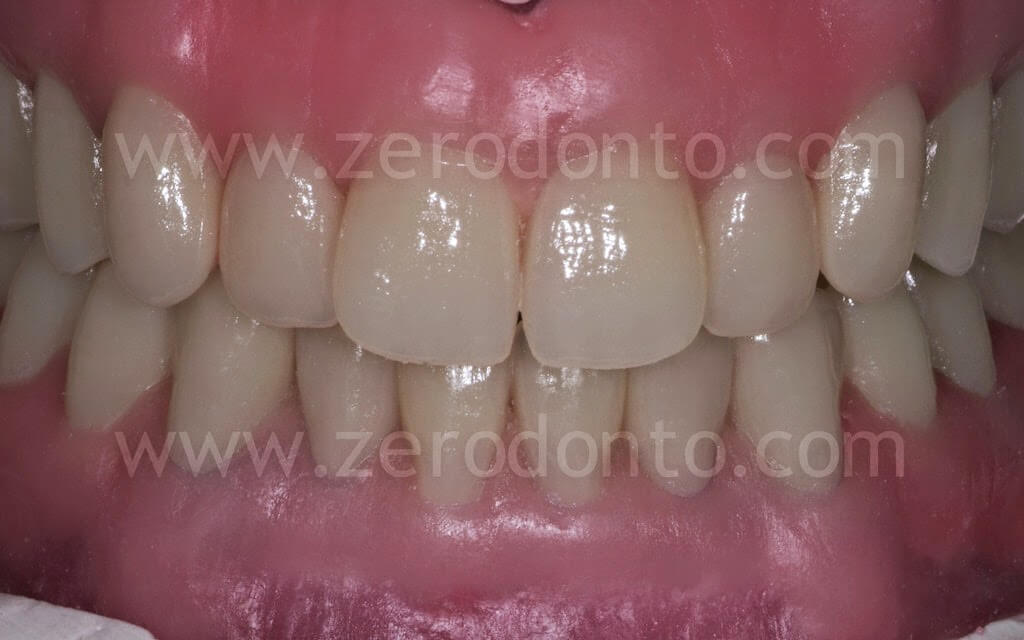
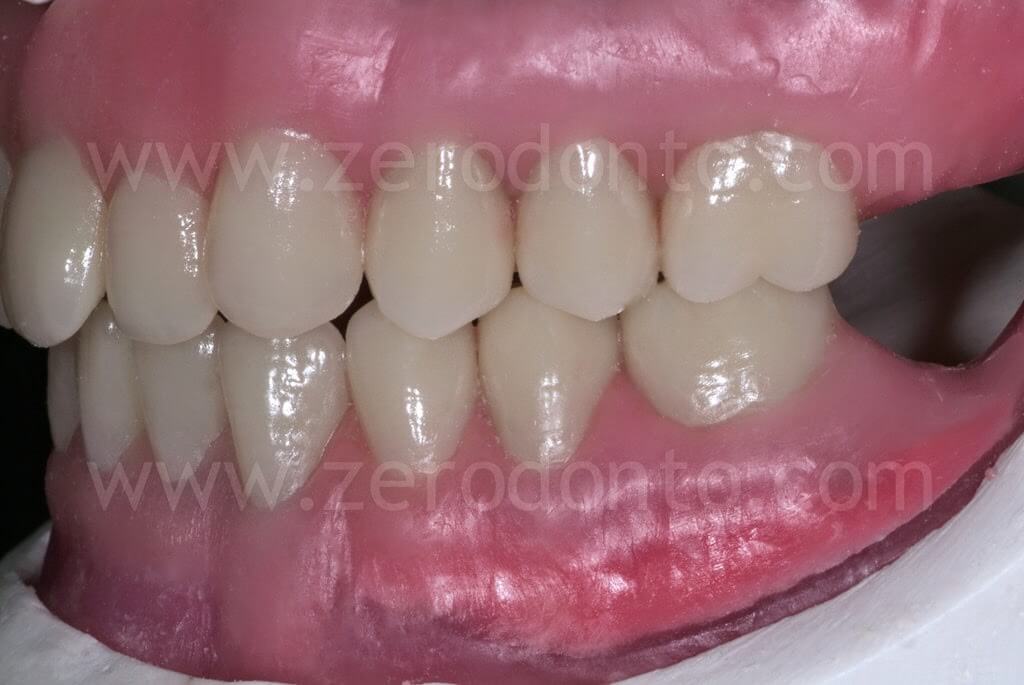
A metal brush was used to obtain a gingival stippling effect.
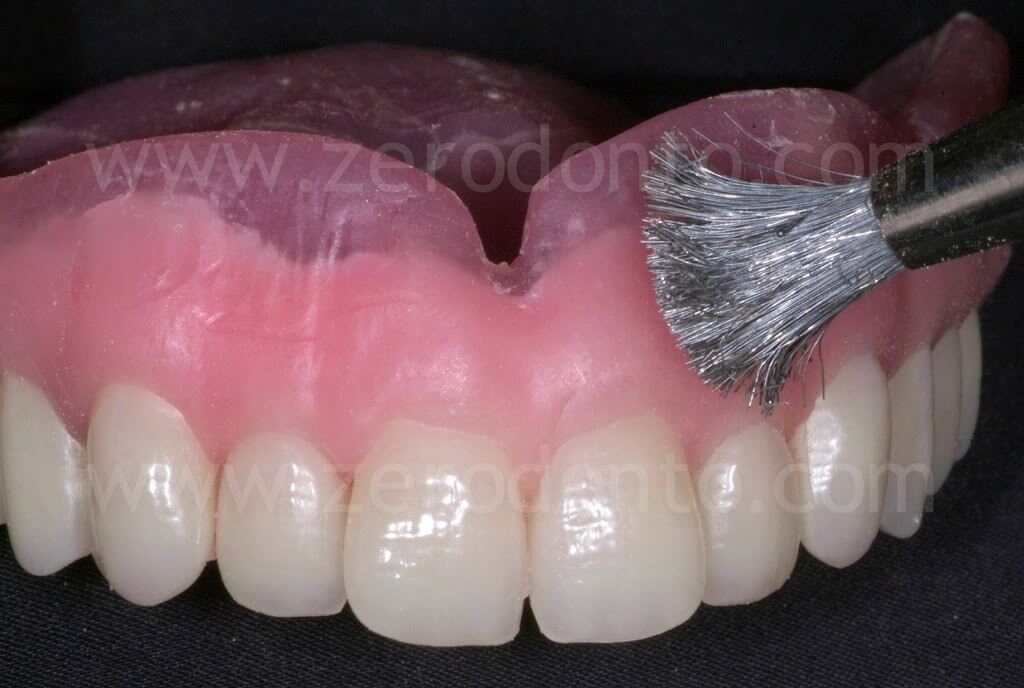
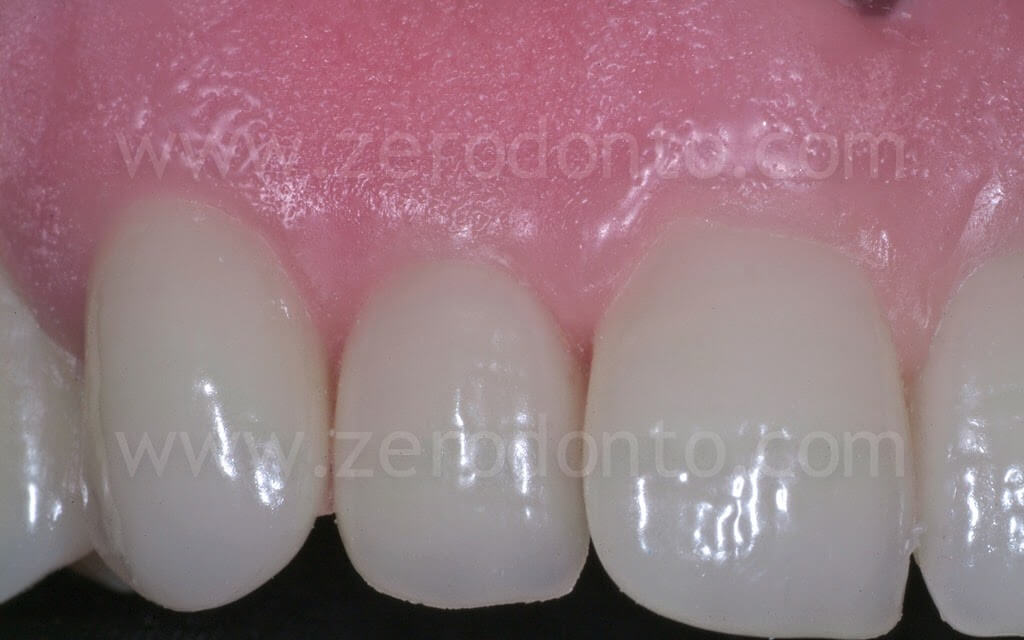
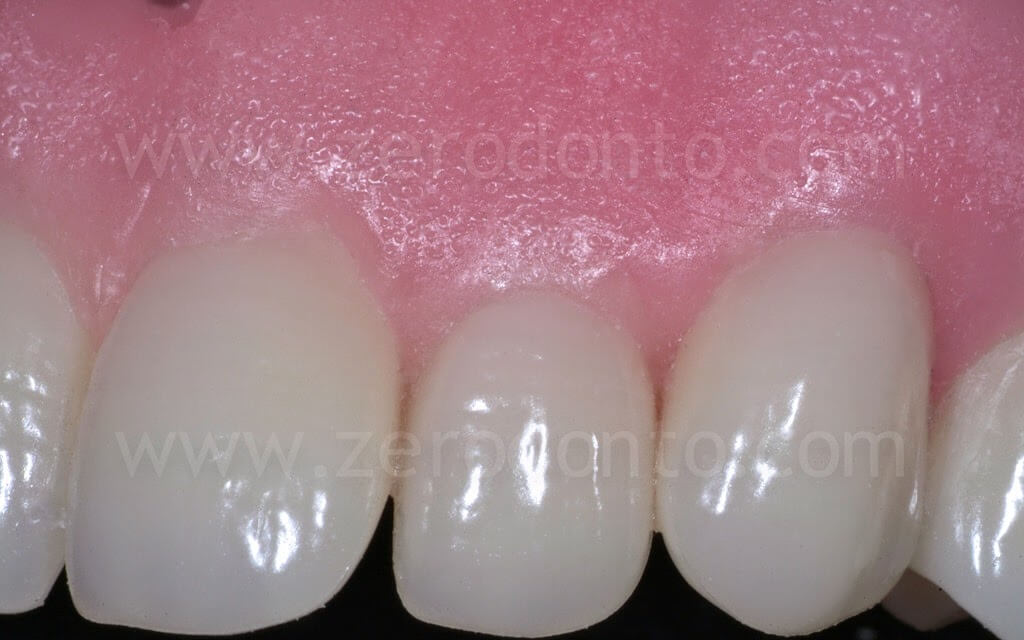
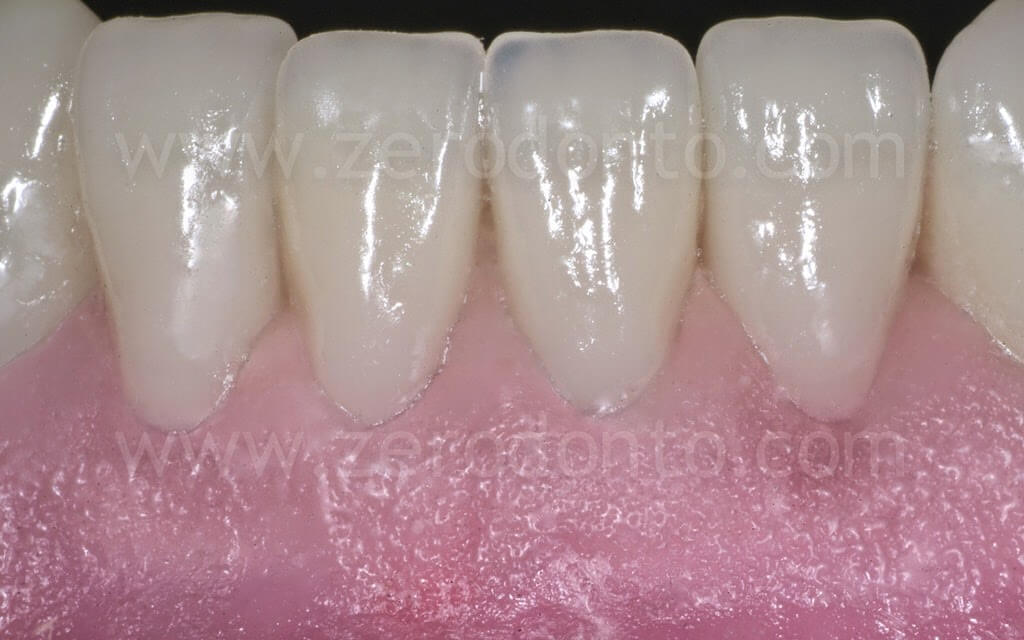
The dentures modelled with wax were placed in a muffle one by one, in order to properly verify the final mounting in the articulator. Finally, the prostheses were polished and finished to carefully remove any debris.
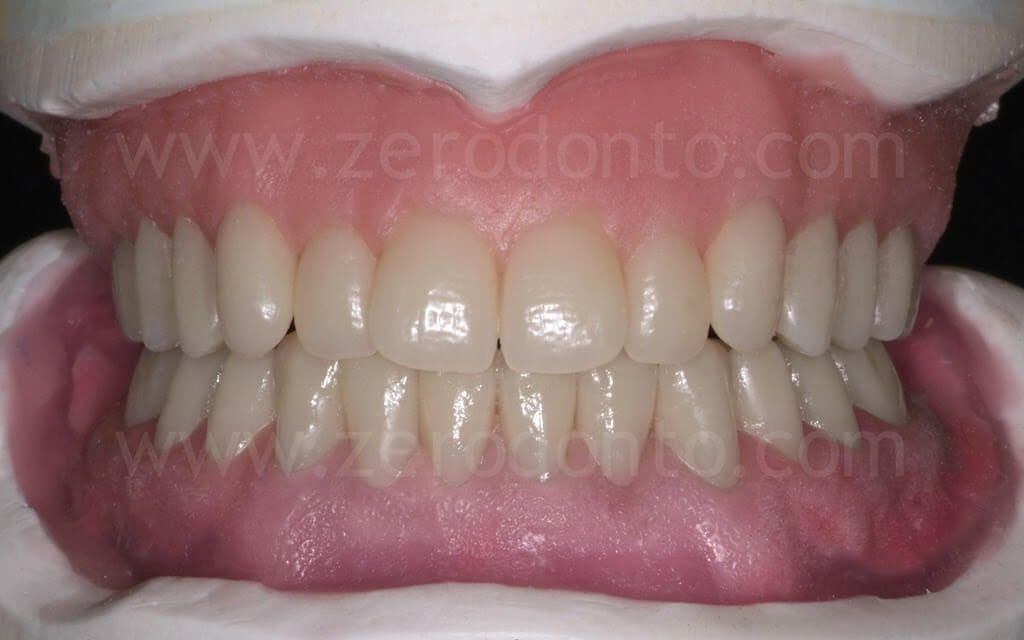
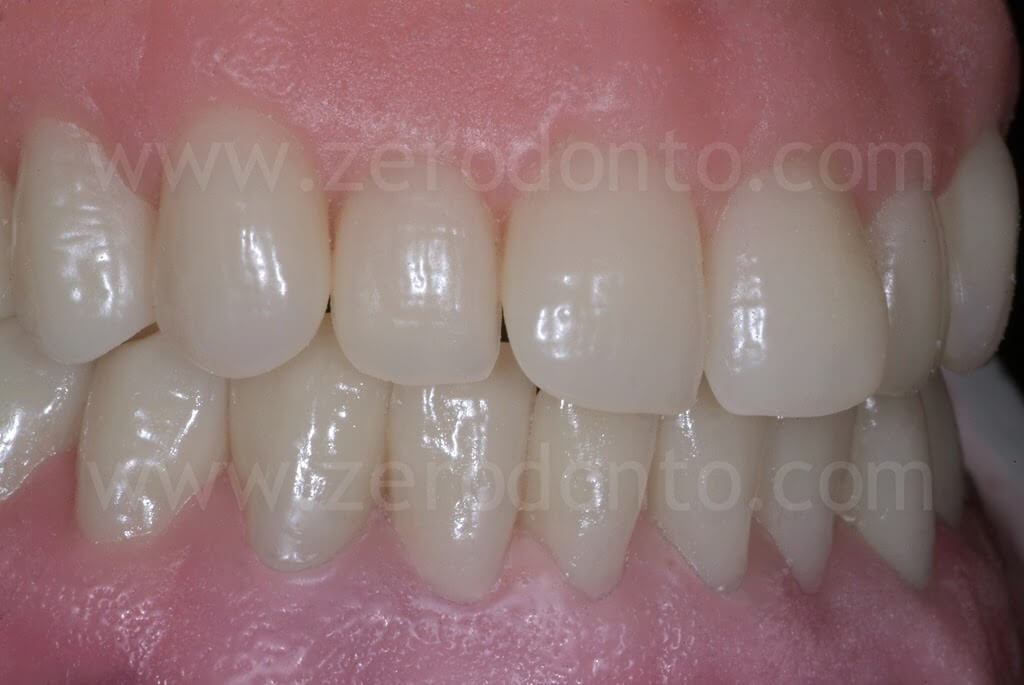
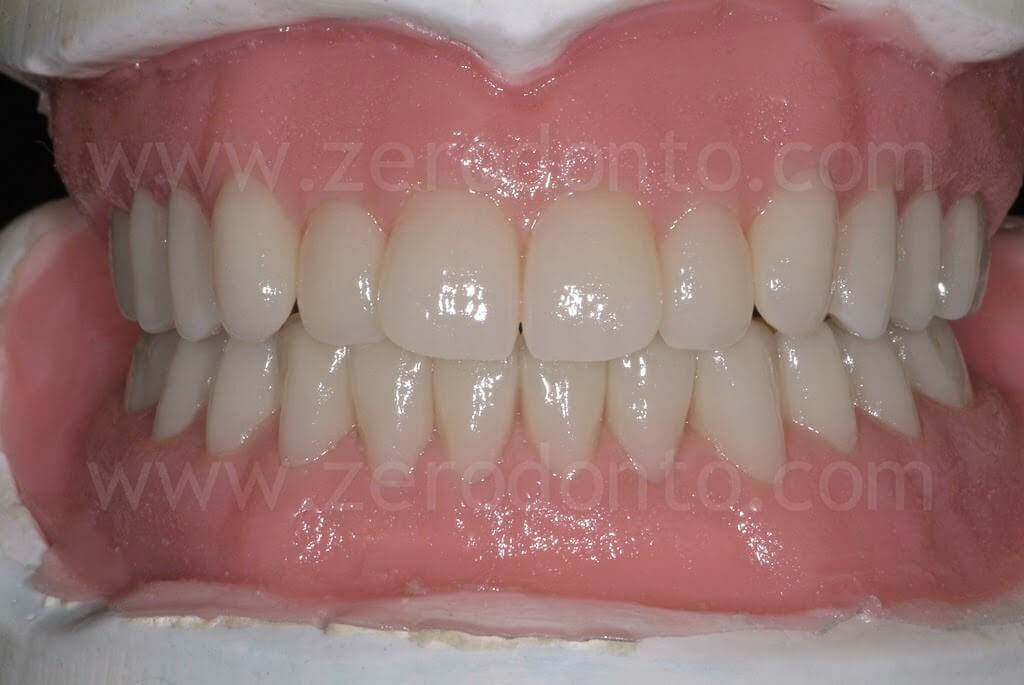
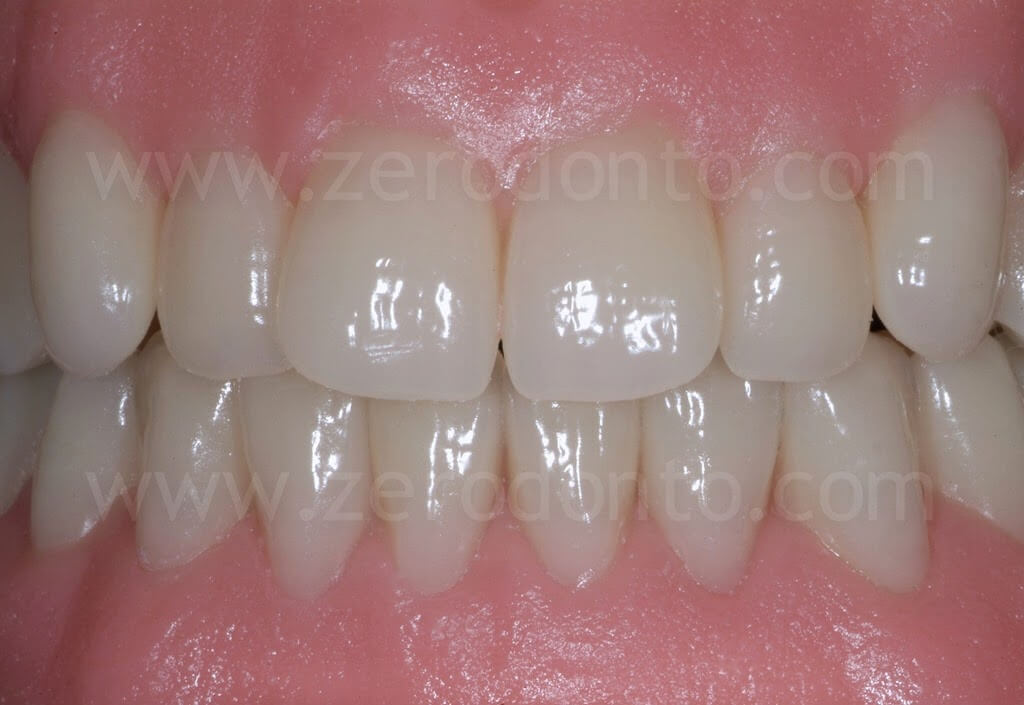
The esthetic finalization of the dentures was based on the creation of a micro-geography simulating the terminal blood vessels on surface of the artificial alveolar mucosa.
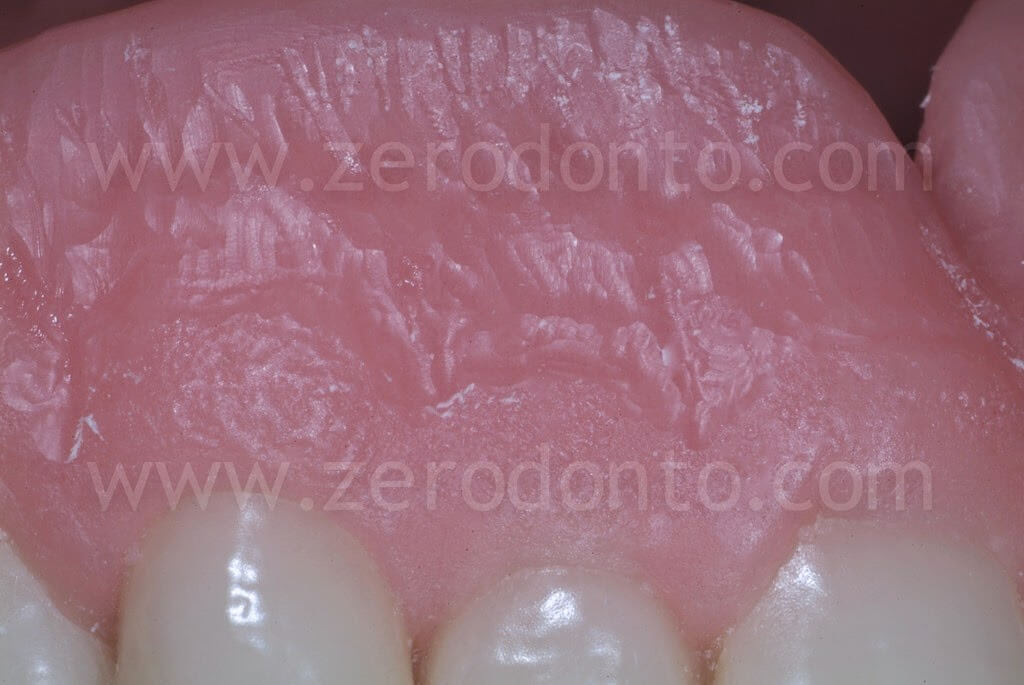
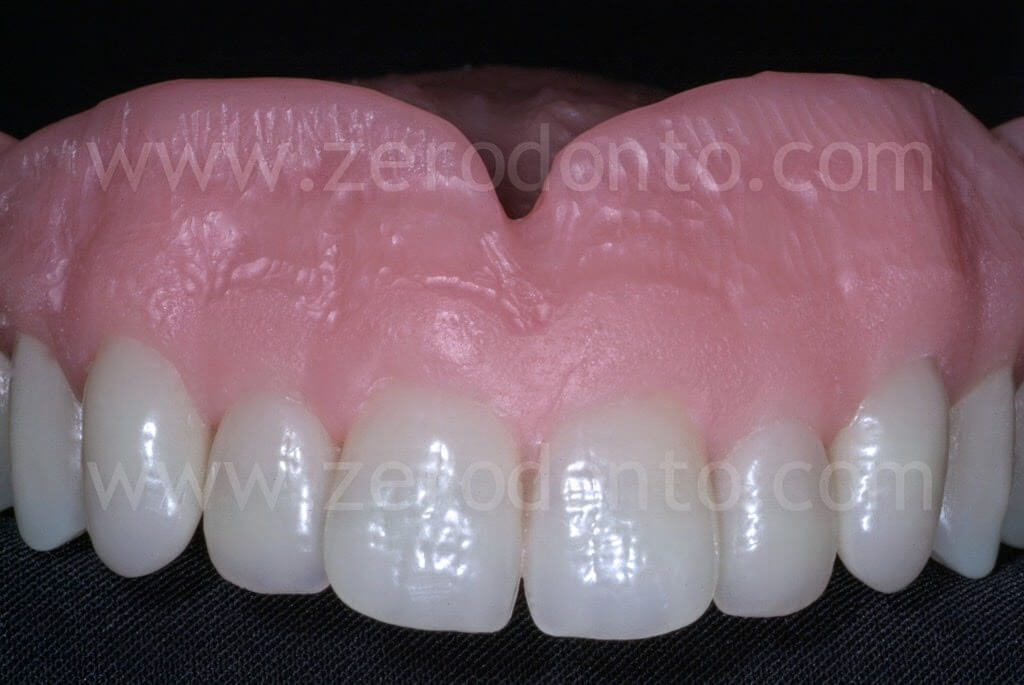
The prosthetic shields were colored with composite materials. Controlled amounts of resin were removed and substituted with composites, in order to evidence the transition between the attached gingiva and the alveolar mucosa.
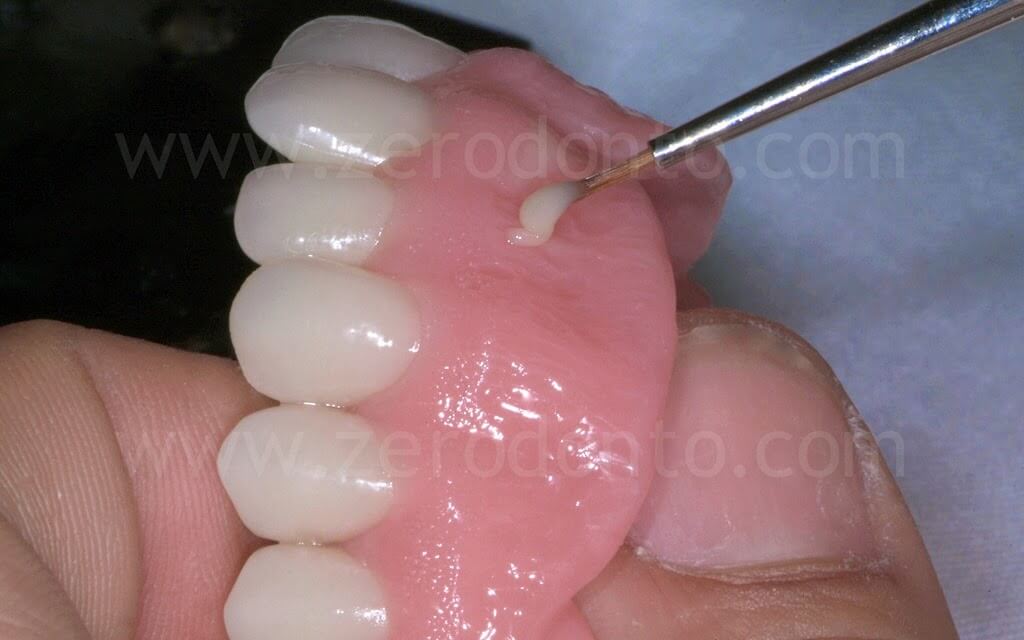
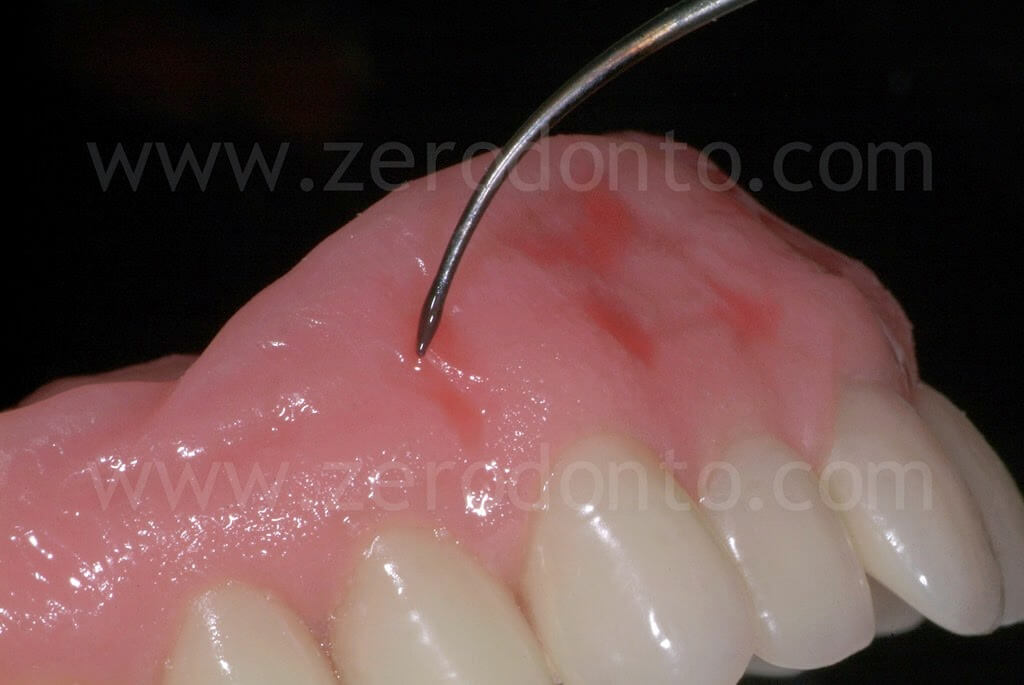
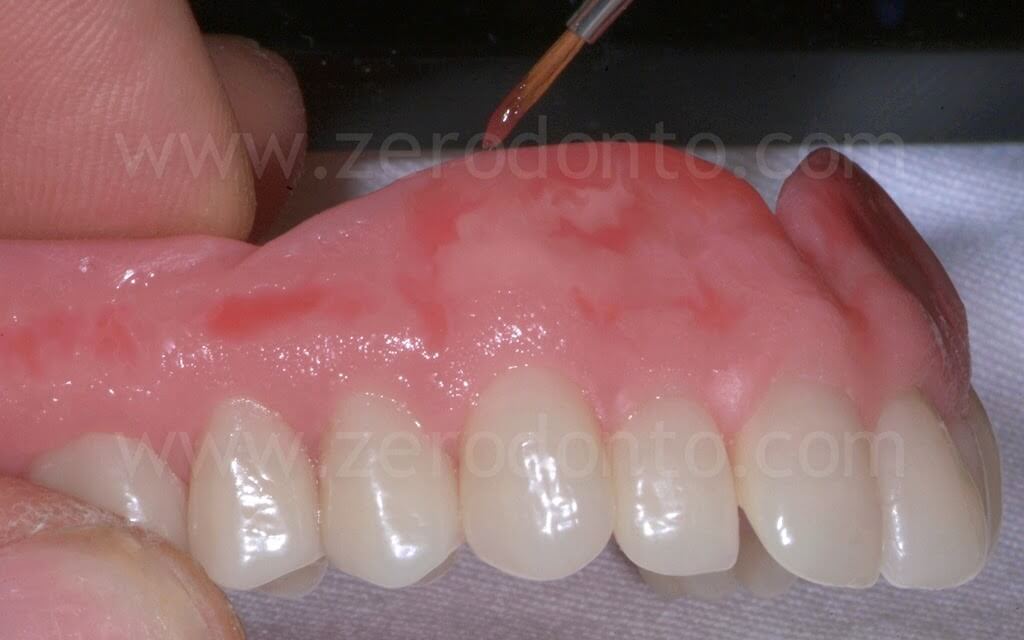

The finishing of the dentures was carried on with a two-step approach, using both a cleaning machine and hand instruments.
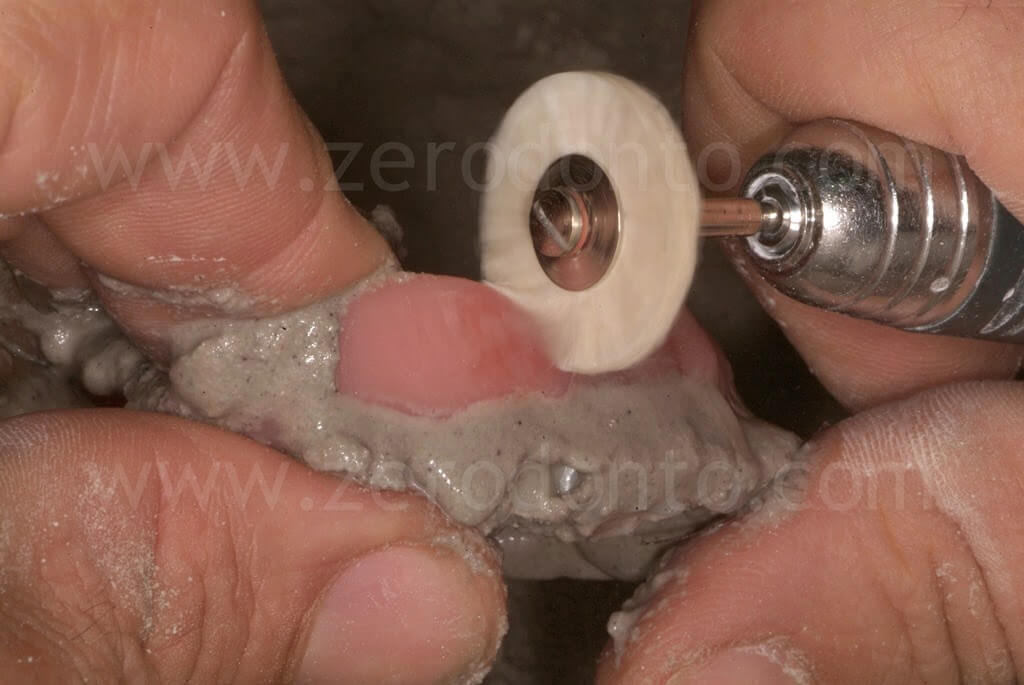
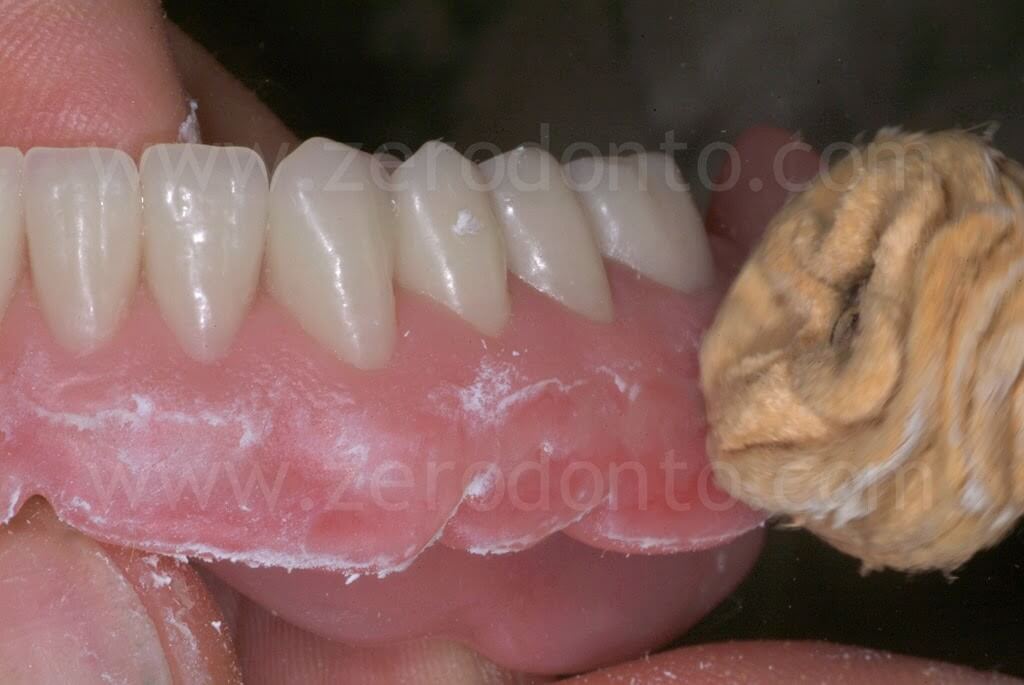
CONCLUSIONS
The criteria of esthetic evaluation could be different according to the viewpoint of the observer, being the dentist, the dental technician or the patient. Almost all the patients ask for white, completely straight and perfect teeth. Conversely, the operators look for color, surface texture, characterizations and anatomic modellation, in order to reproduce as closely as possible the natural tissues. Nonetheless, the treatment of completely edentulous patients necessitates to model and customize the prosthetic shields so as to improve the phonetics and to cover crest deformities.
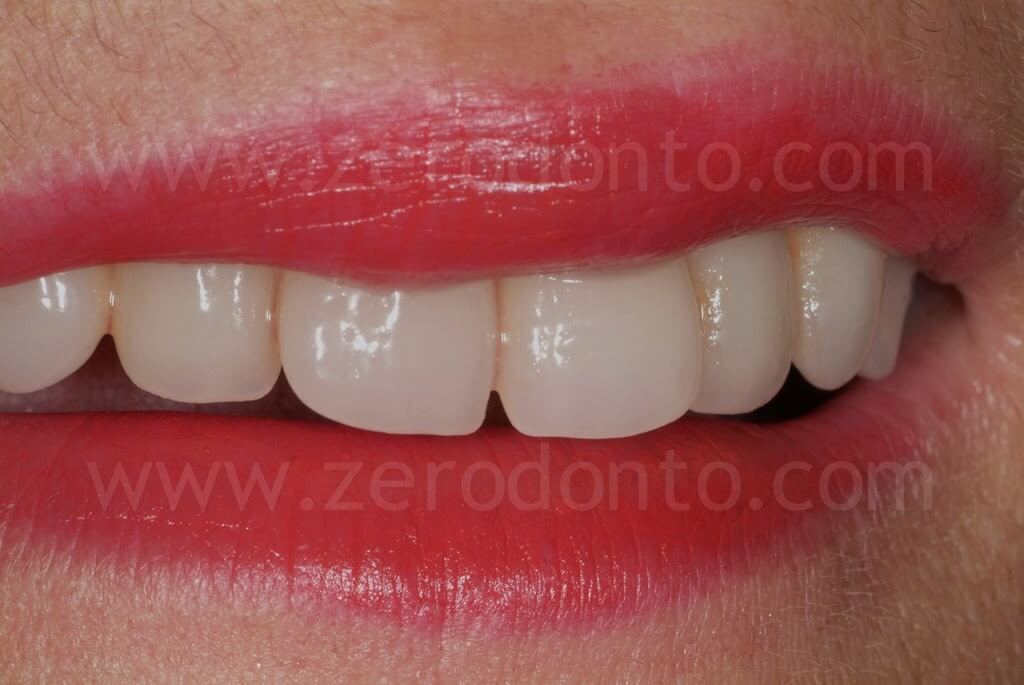
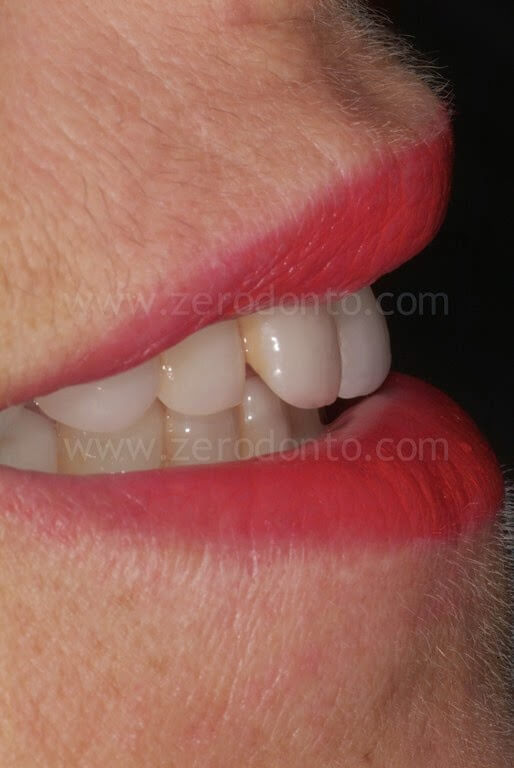

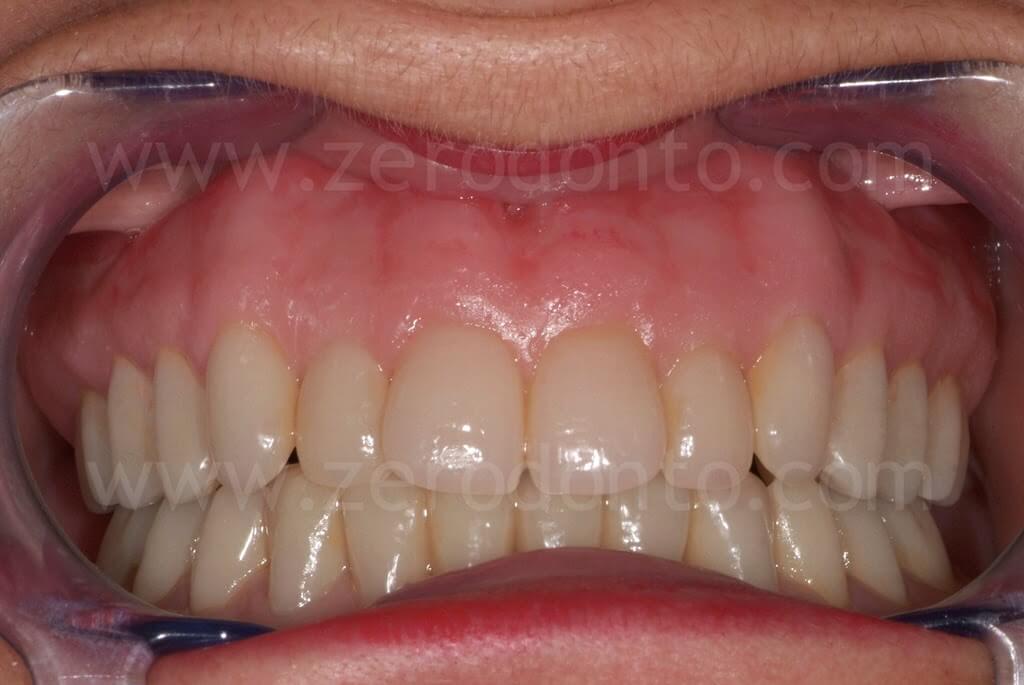
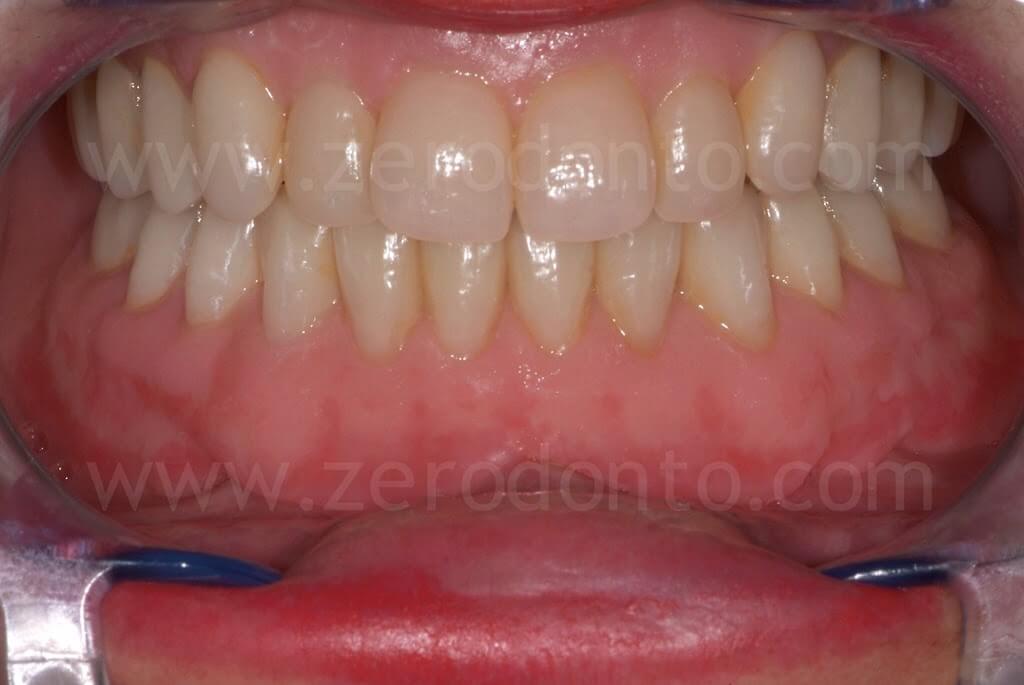
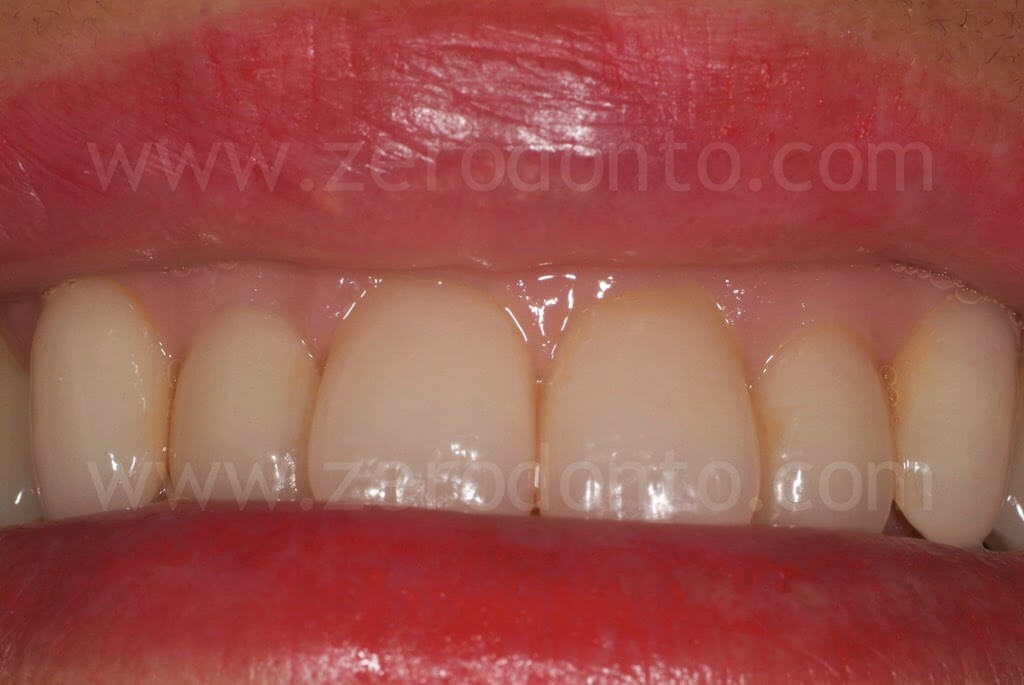
REFERENCES
1. Bortolotti L. Protesi mobile: tradizione e innnovazione. Masson, Milano, 2004..
2. Fradeani M. La riabilitazione estetica in protesi fissa. Quintessenza Edizioni Srl, Milano, 2004.
3. Hayakawa I. La protesi totale: principi e tecniche. Scienza e Tecnica Dentistica Edizioni Internazionali Milano, 2000.
4. Kinoshita S. Atlante a colori di parodontologia. Piccin-Nuova Libraria, Padova, 1987.
5. Linde J. Parodontologia 3a ed. Edi. Ermes, Milano, 1991.
6. Mutschelknauss RE. Testo atlante di parodontologia clinica. Scienza e Tecnica Dentistica Edizioni Internazionali s.n.c./Milano, 2000.
7. Preti G. Riabilitazione protesica. UTET, Torino, 2003.
8. Schärer P, Rinn LA, Kopp FR. Principi estetici nella ricostruzione protesica. Scienza e Tecnica Dentistica Edizioni Internazionali s.n.c./Milano, 1984.
9. Valletta G, Matarasso S. Atlante di parodontologia. Ed. Idelson, Napoli, 1984.
10.Carlo Montesarchio.Una solozione estetica in protesi totale Dental Labor .2000
11.Marino G. Cantoni A.: Guida al successo in protesi mobile completa . Ed. Saccardin, Martina Bologna1991
12.Lerch P. : Laprotesi totale. Resch. Ed. Verona 1987
13.Shay. J Contemp Dent Pract, 2000; 1:28-41.
14.Yeung et al. J Oral Rehabil, 2000; 27:183-189.
15.Carlsson. J Prosthet Dent, 1998; 79:17-23.
16.Orr et al. J Clin Periodontol, 1992; 19:589-594.
17.Jagger & Harrsion. Br Dent J, 1995; 178:413-417.
ACKNOWLEDGEMENTS
The author would like to thank Mr. Vincenzo D’Urso, Mr. Luca Di Maglie and Mr. Giovanni Martinelli for their scientific contribution.
CURRICULUM Carlo Montesarchio
Carlo Montesarchio was born in Naples in 1964. He took his Dental Technician certification in 1982; owner of his own dental laboratory since 1983. Author of publications on national and international journals, he participates in formation classes at the University “Federico II” of Naples. Lecturer for ANTLO.
He collaborates with dental industries for material and technology development. Lecturer at Master Courses of Removable Prosthodontics for VITA ZANFABRIK. He focuses all his activity on full removable dentures.
His formation is linked to several experiences dealt with national and international operators.
E-mail: cmontesarchio@alice.it
For Info: zerodonto@gmail.com

